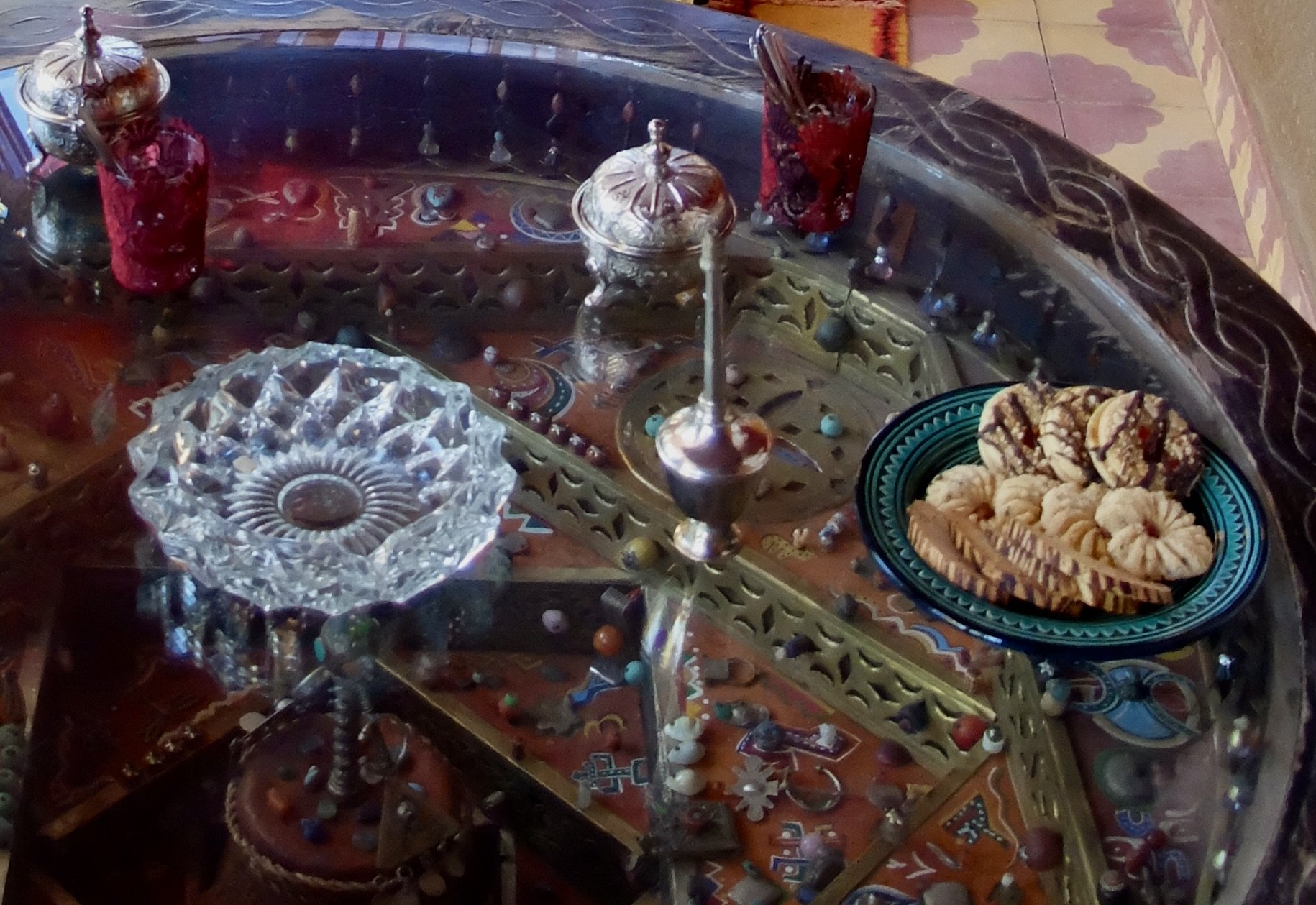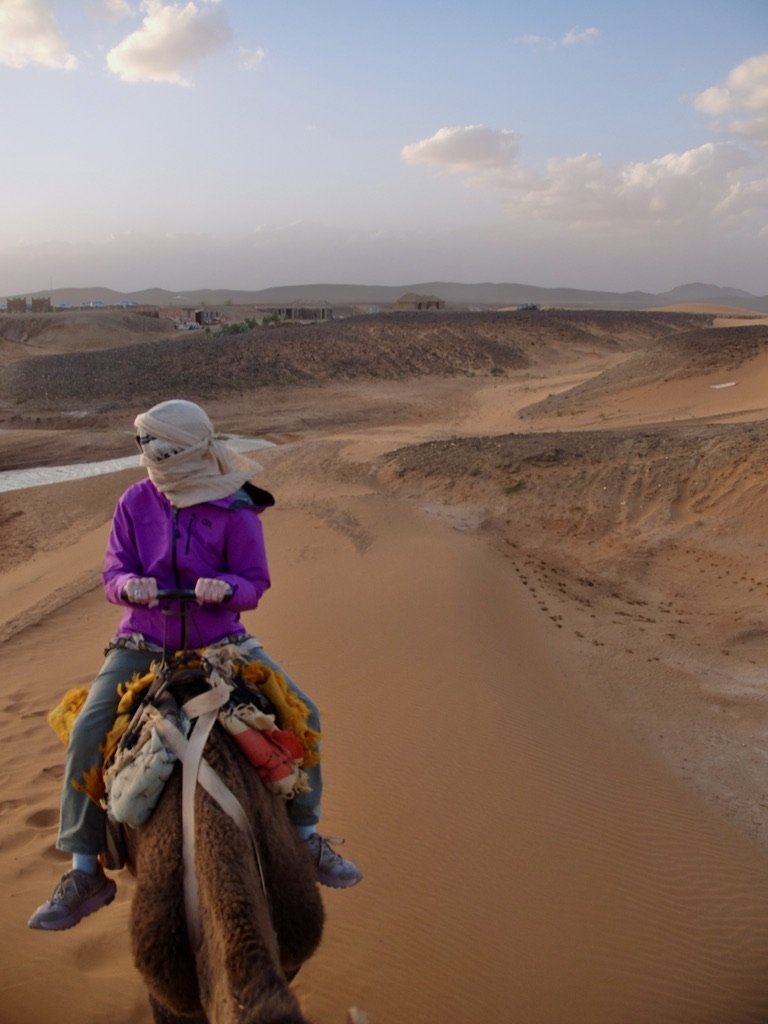
Death grip.
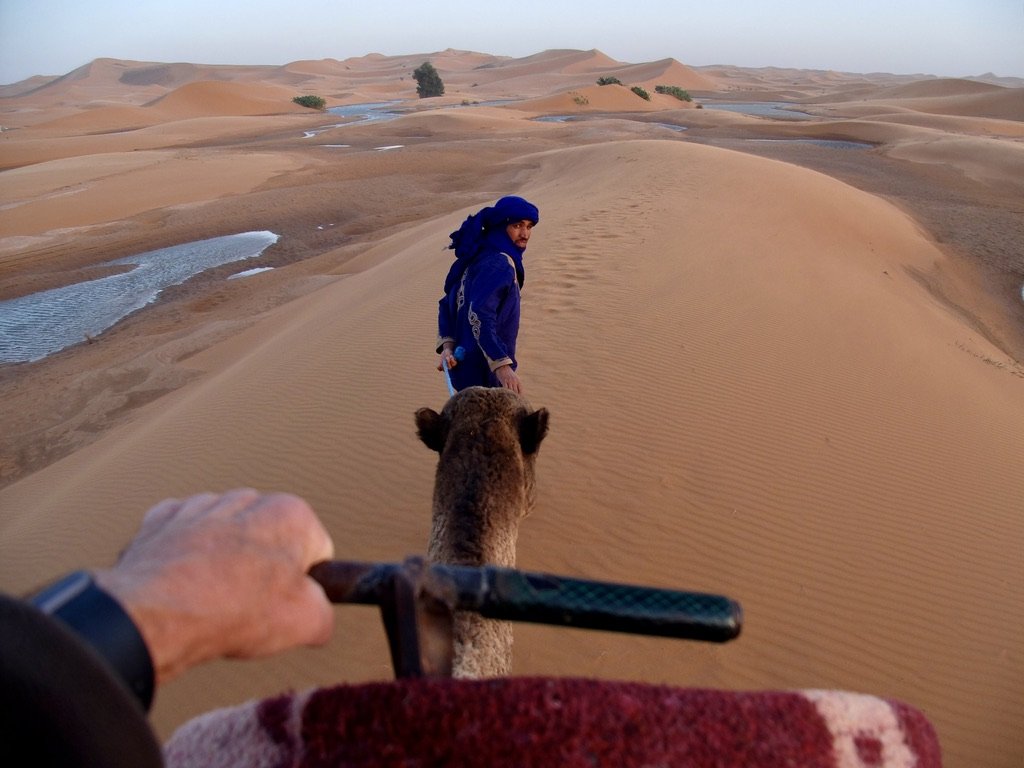
One handed death grip.
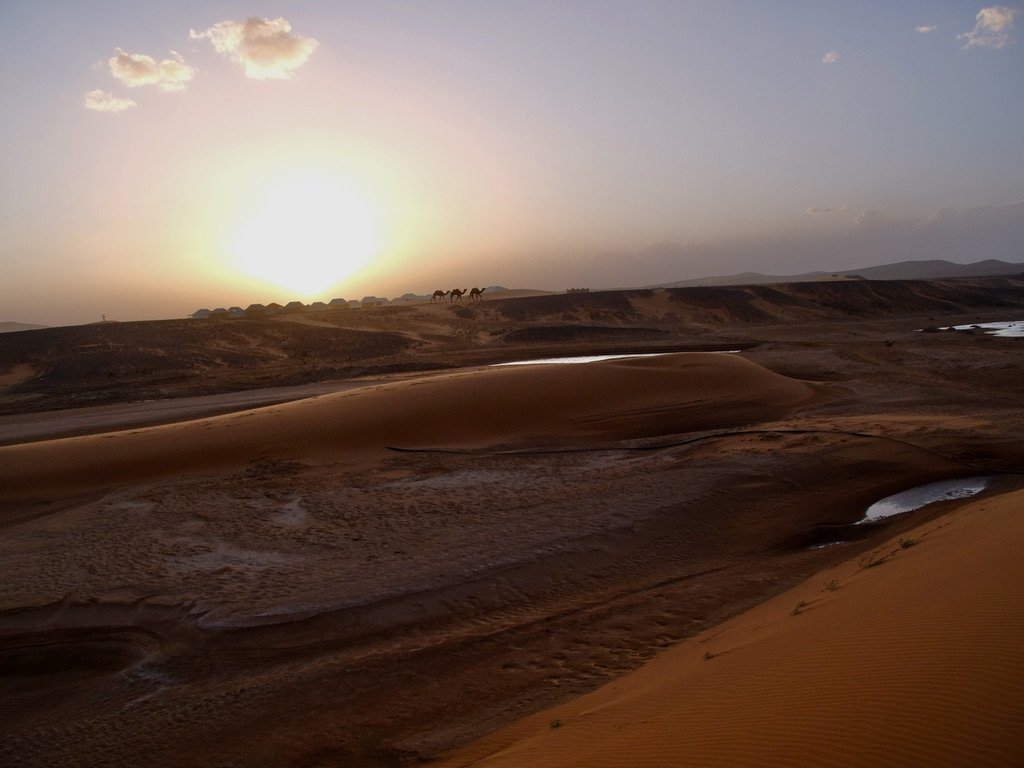
-
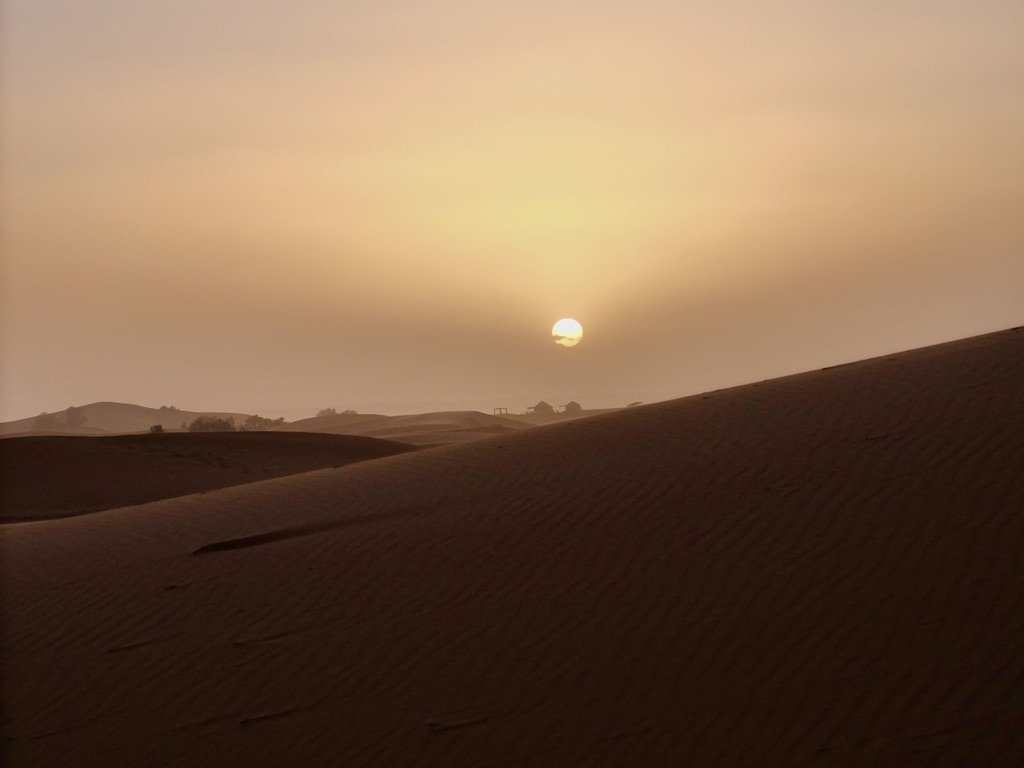
-
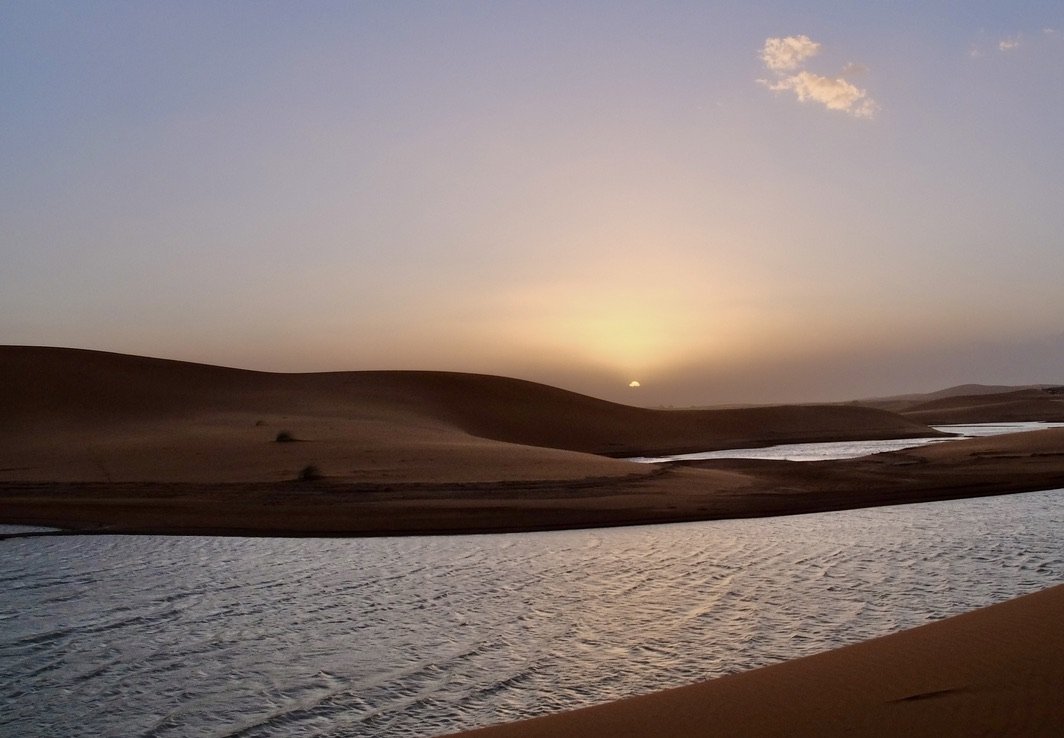
Recent deluge has left water in the desert that folks have not seen for years. Under the sand is clay that keeps the water for a while. We were told that locals were swimming in these mini lakes.
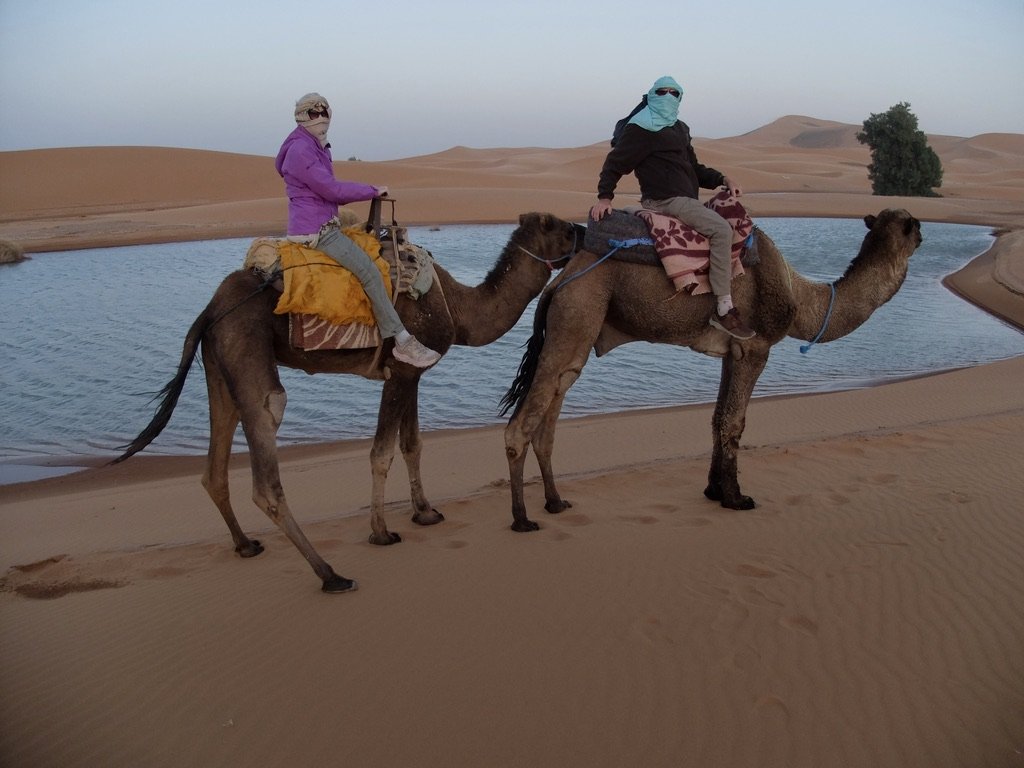
-
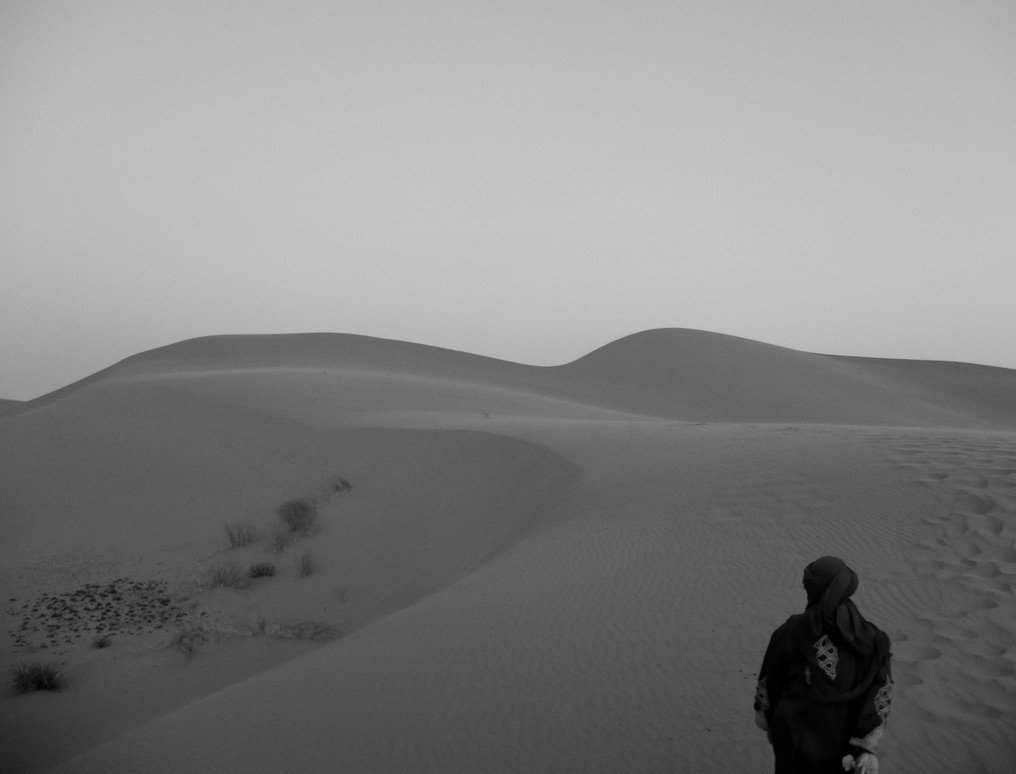
-
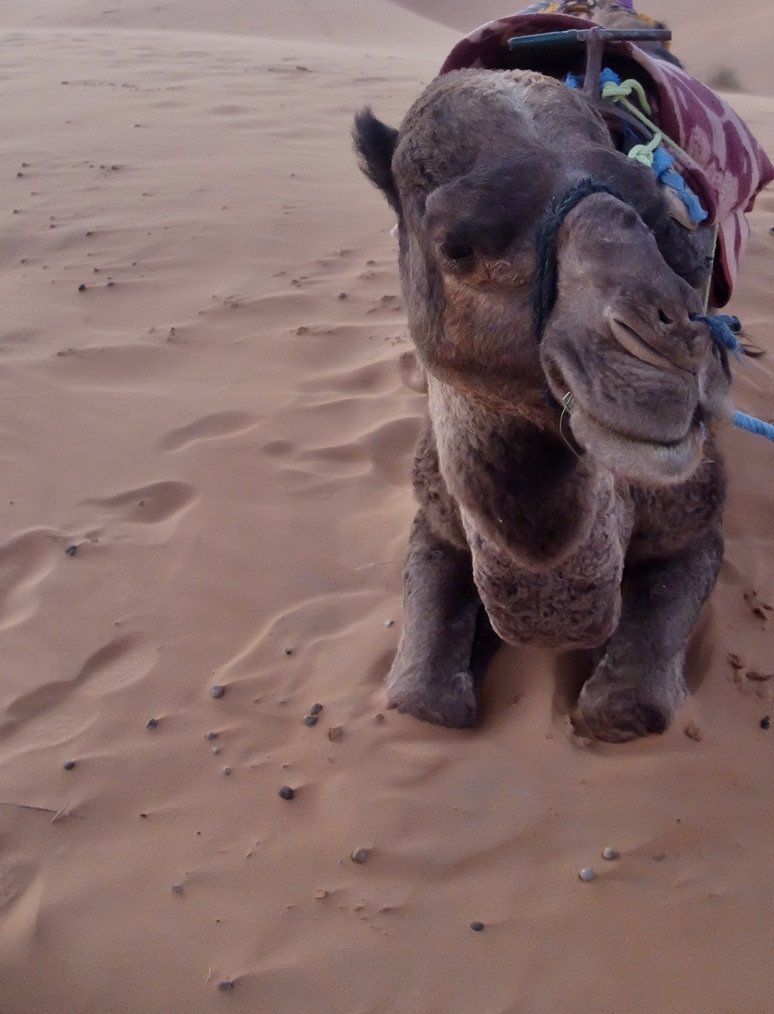
I was never introduced so didn't know the name of my dromedary.
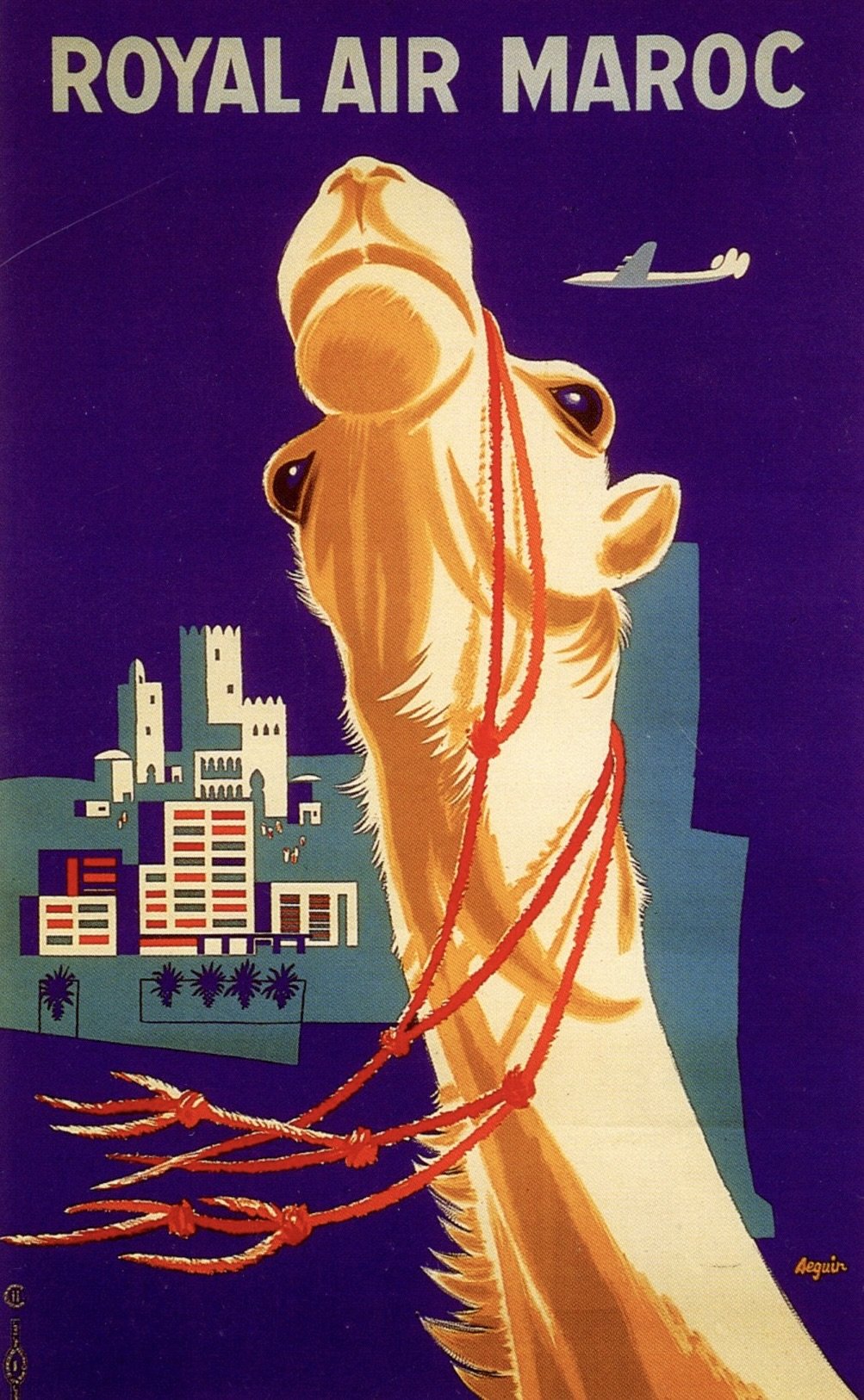
-
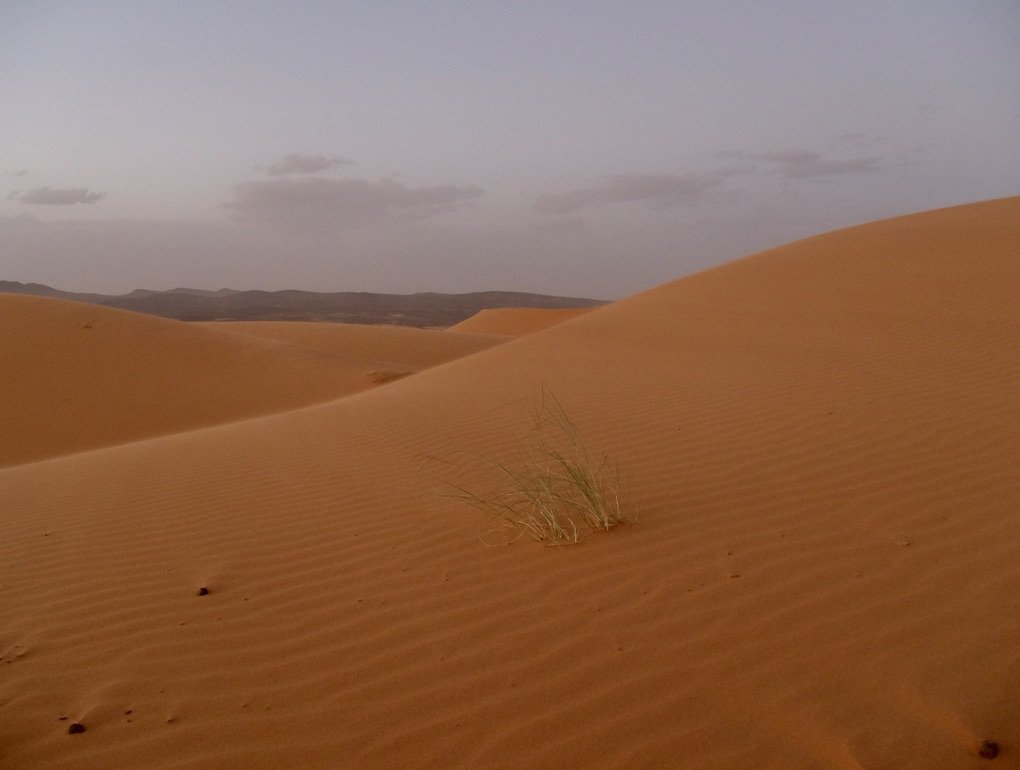
-
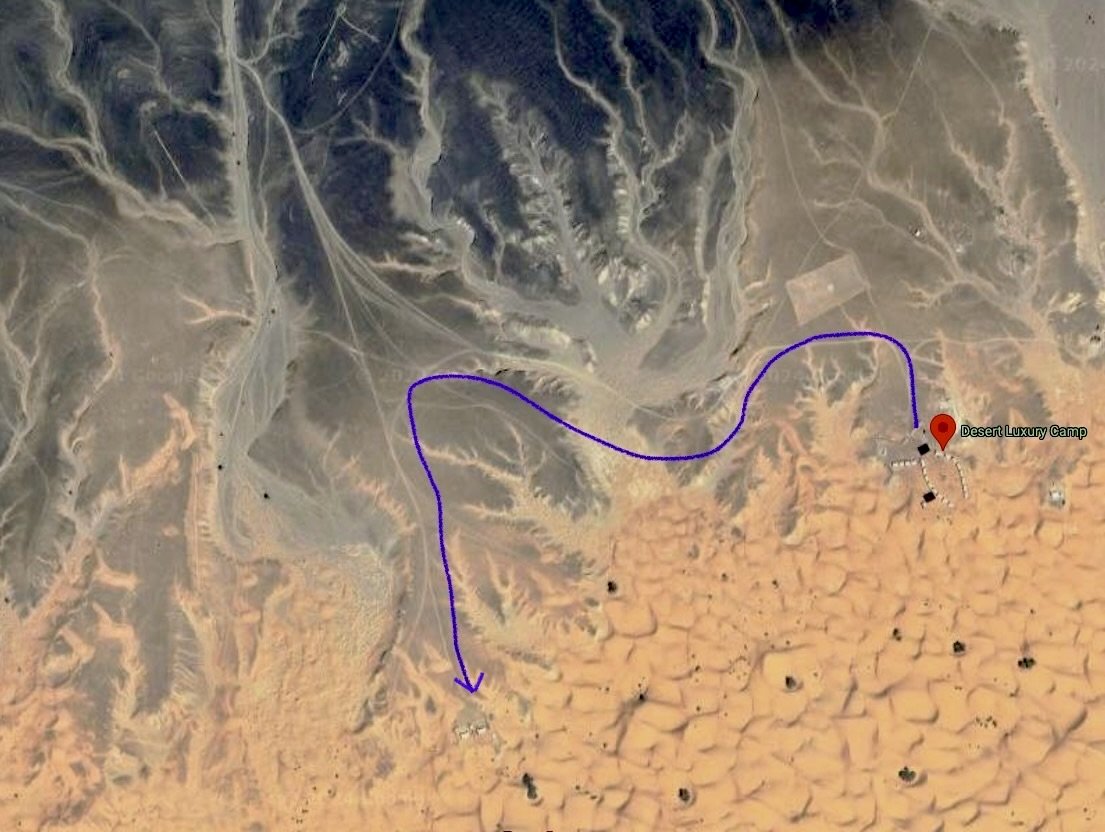
Said drove us in the 4 wheel drive to our tent. We really didn't know what was going on.
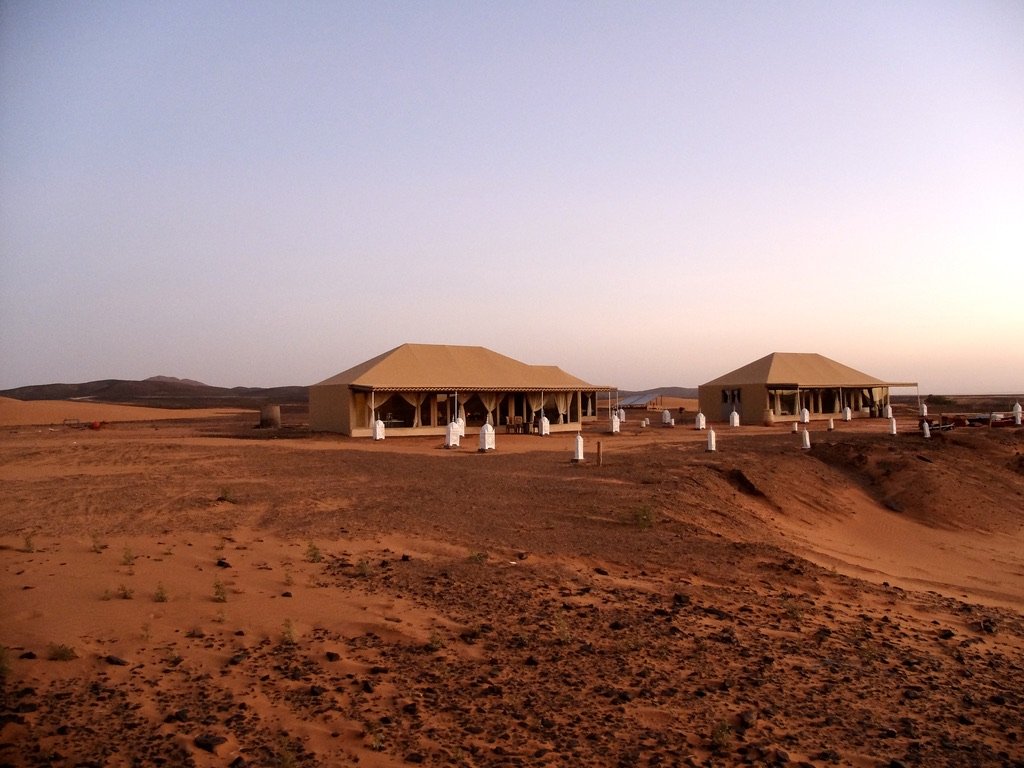
Our tent was on the left.
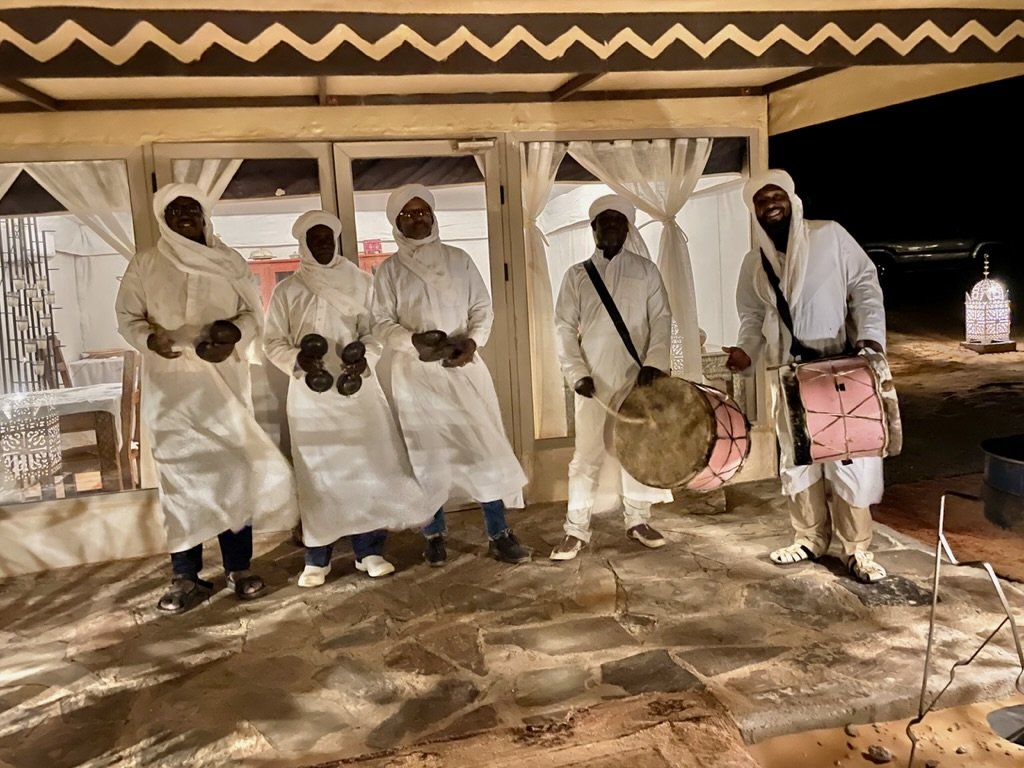
Men from the next village greeted us. The music was great & they had some really good dance moves.
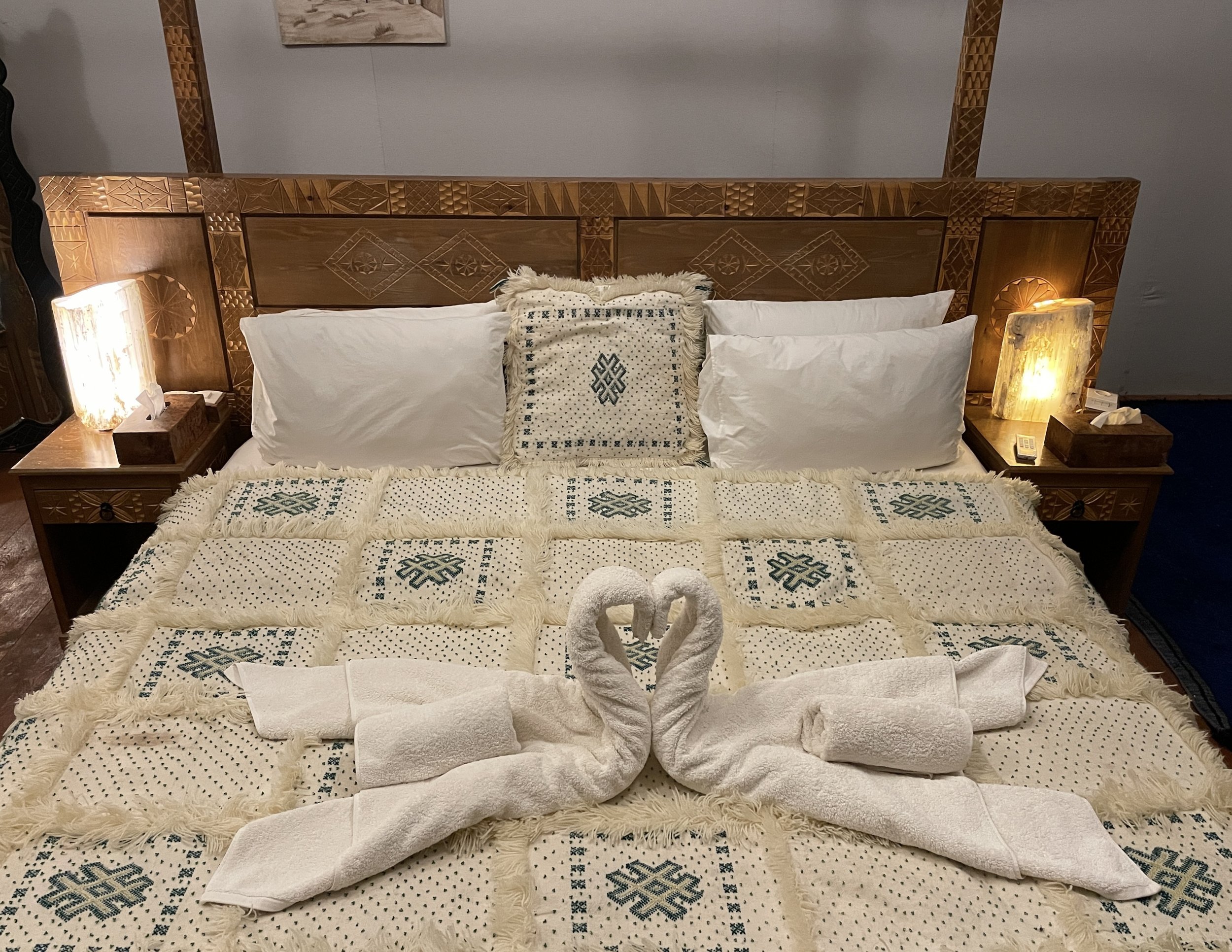
-
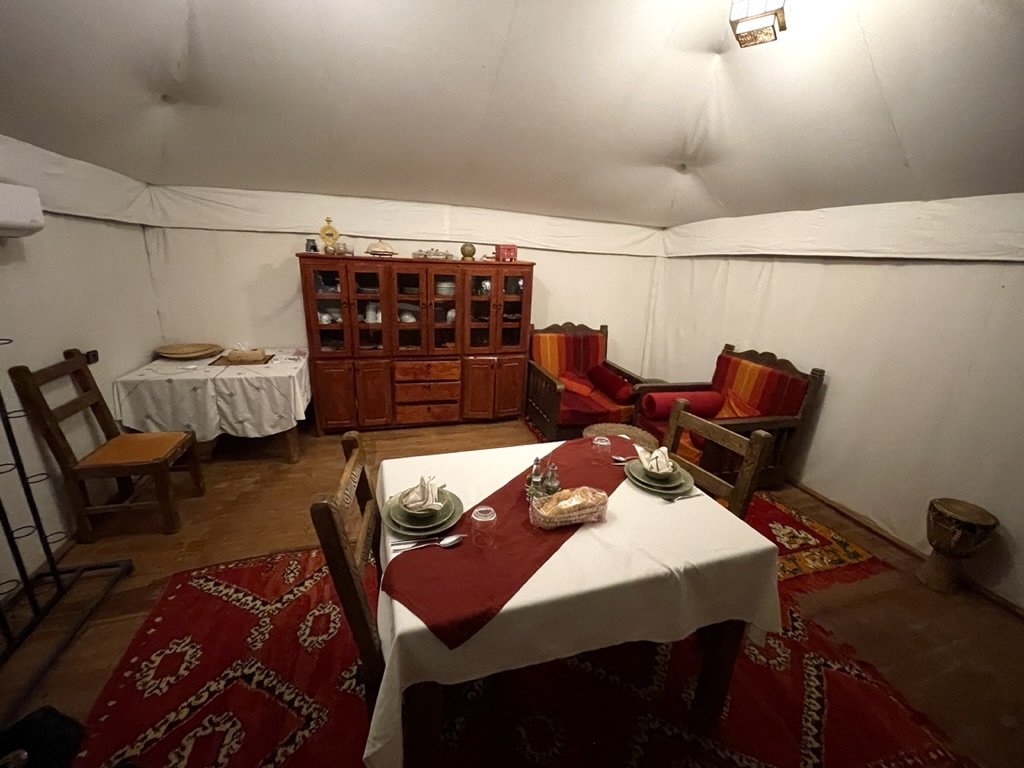
-
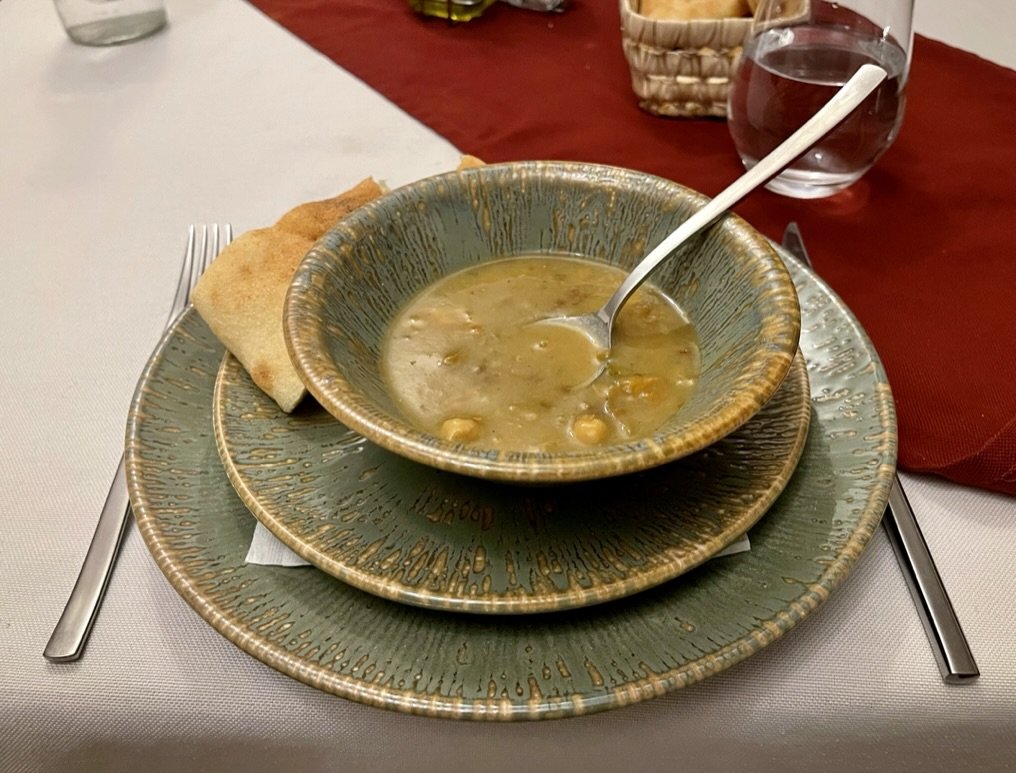
Really good bean soup.
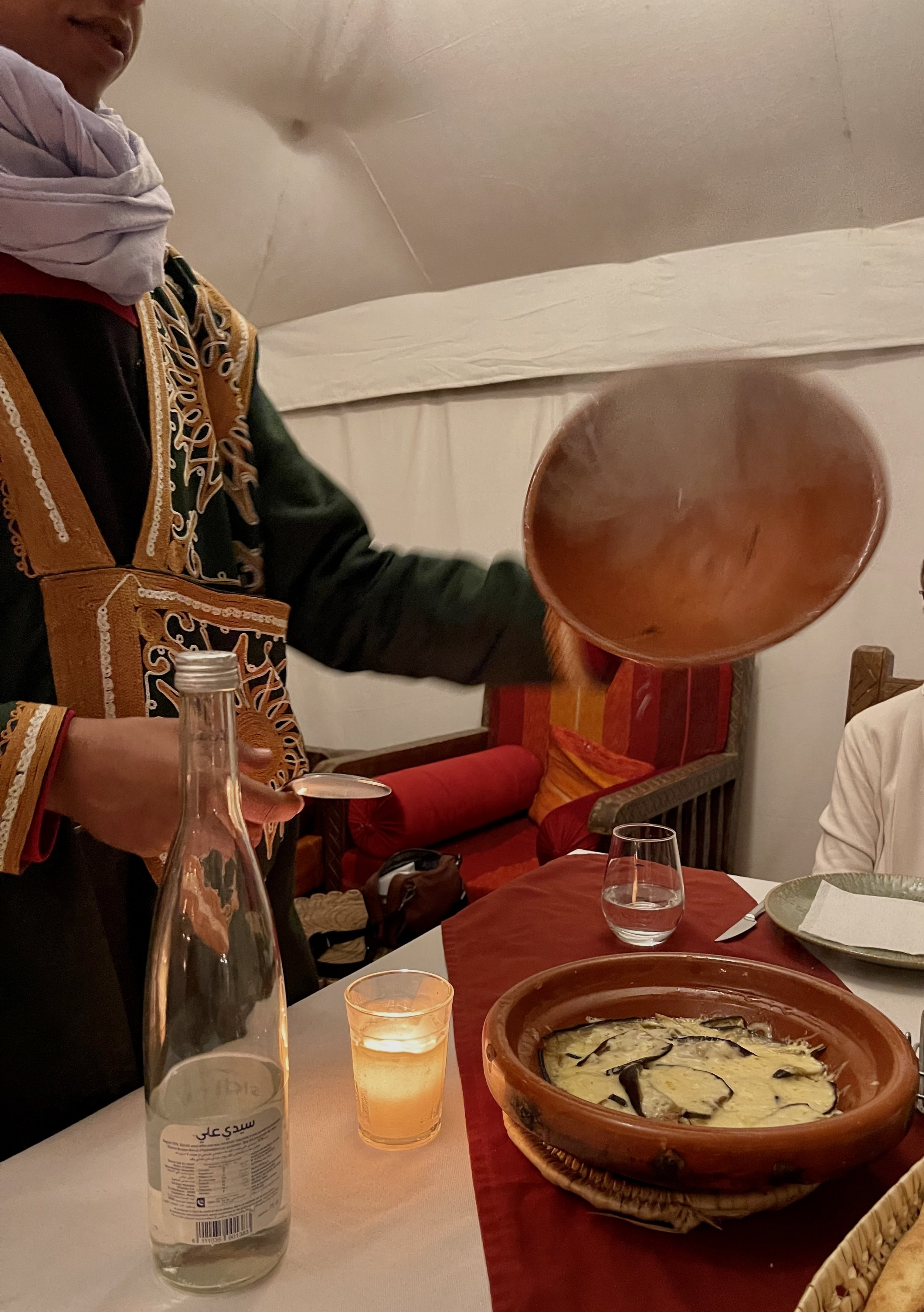
Eggplant with cheese in the tajine. Yum.
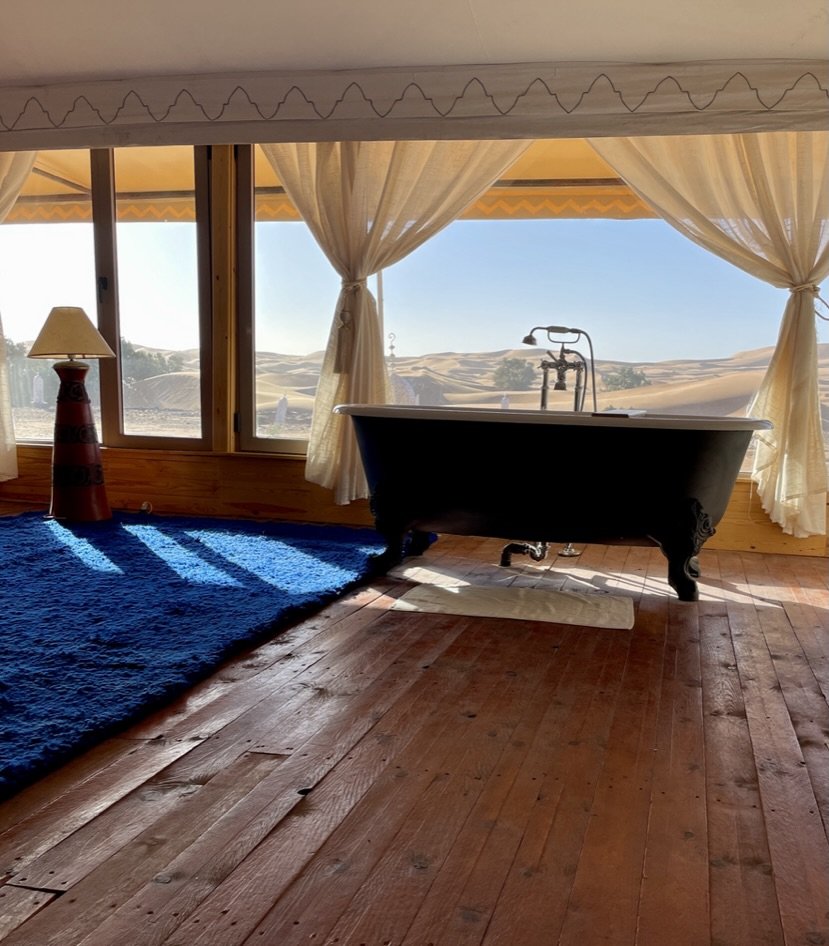
Dawn.
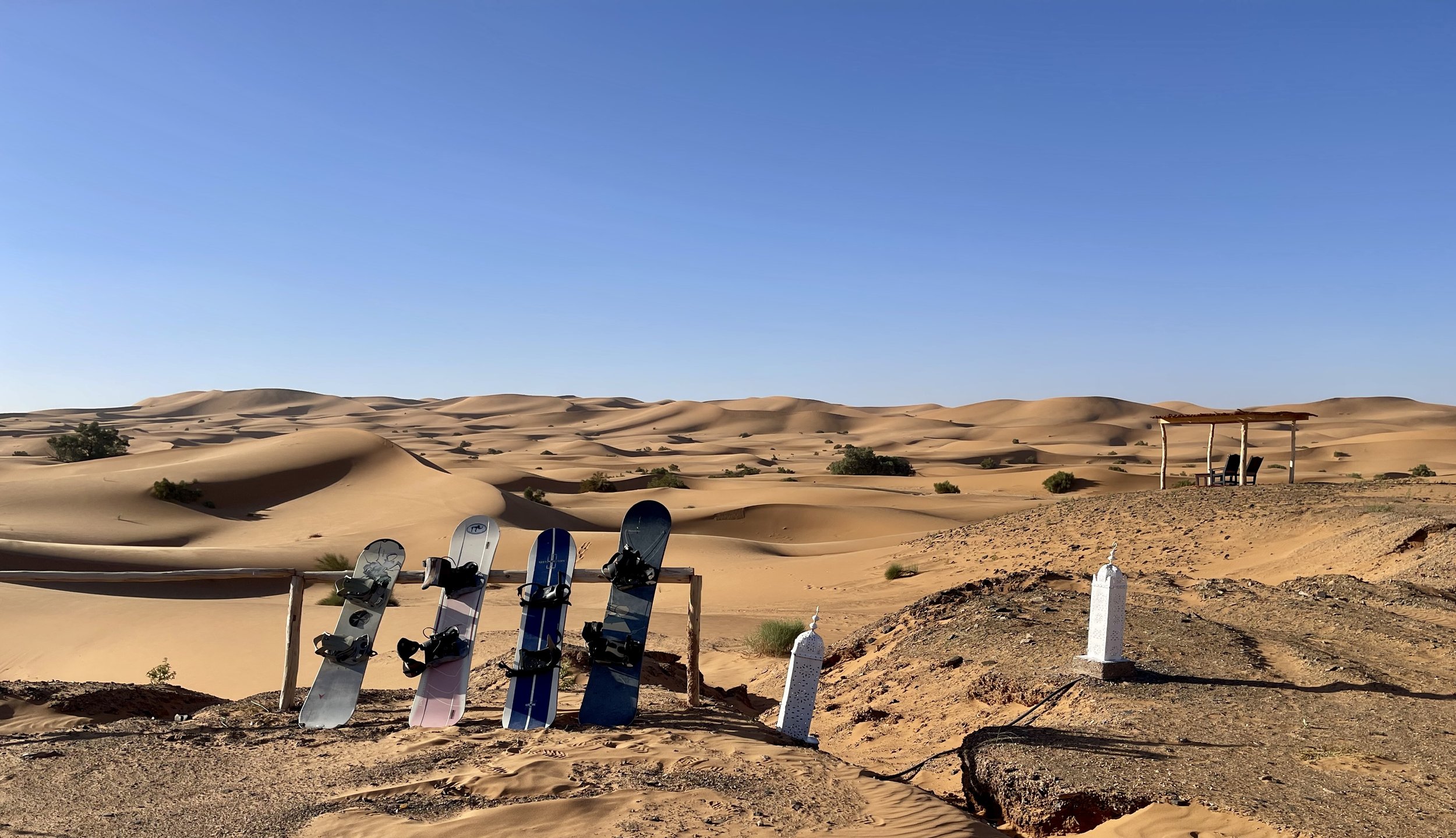
Yes! We saw people on the dunes on snowboards.
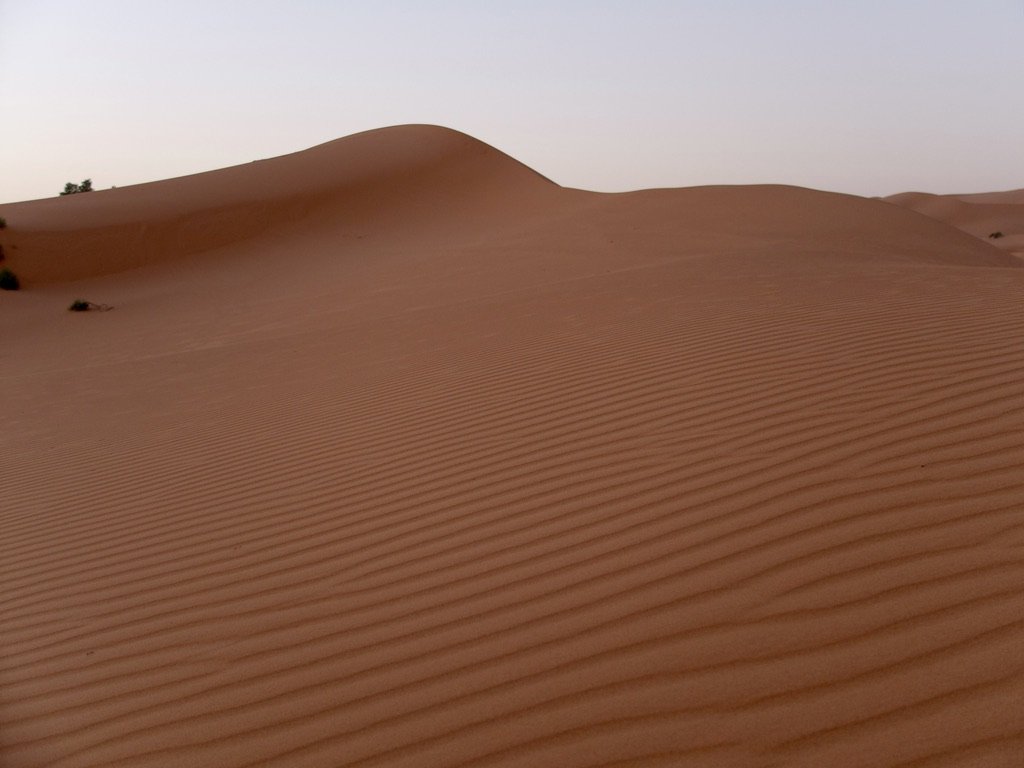
It was so quiet.
I soon realized no airplanes. We really hadn’t seen any since the airport in Casablanca. Seeing one here would be unlikely as the border with neighboring Algeria is…
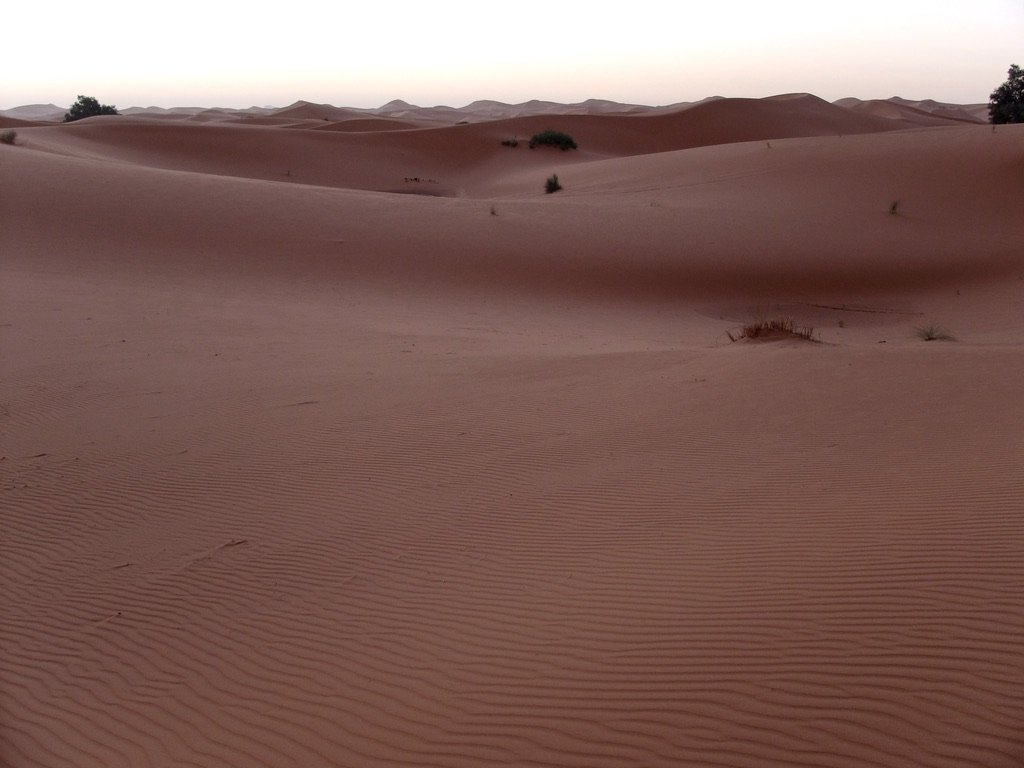
…way, way off in the distance. It is a hostile borders; a no fly zone.
See border on the map, coming up.
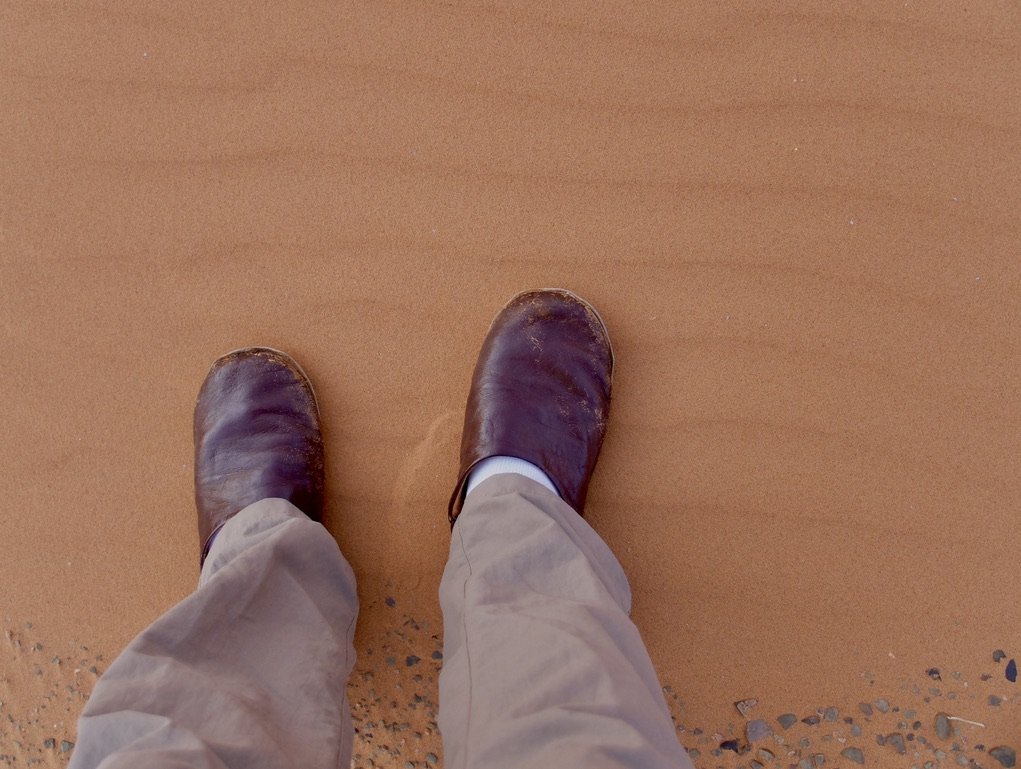
Moroccan babouches that were bought in San Francisco & given to me a a gift. I had taken them with me.
The guys here in the desert, & it was all guys, were wearing Moroccan babouches, “Skechers” or Teva style sandals.

-
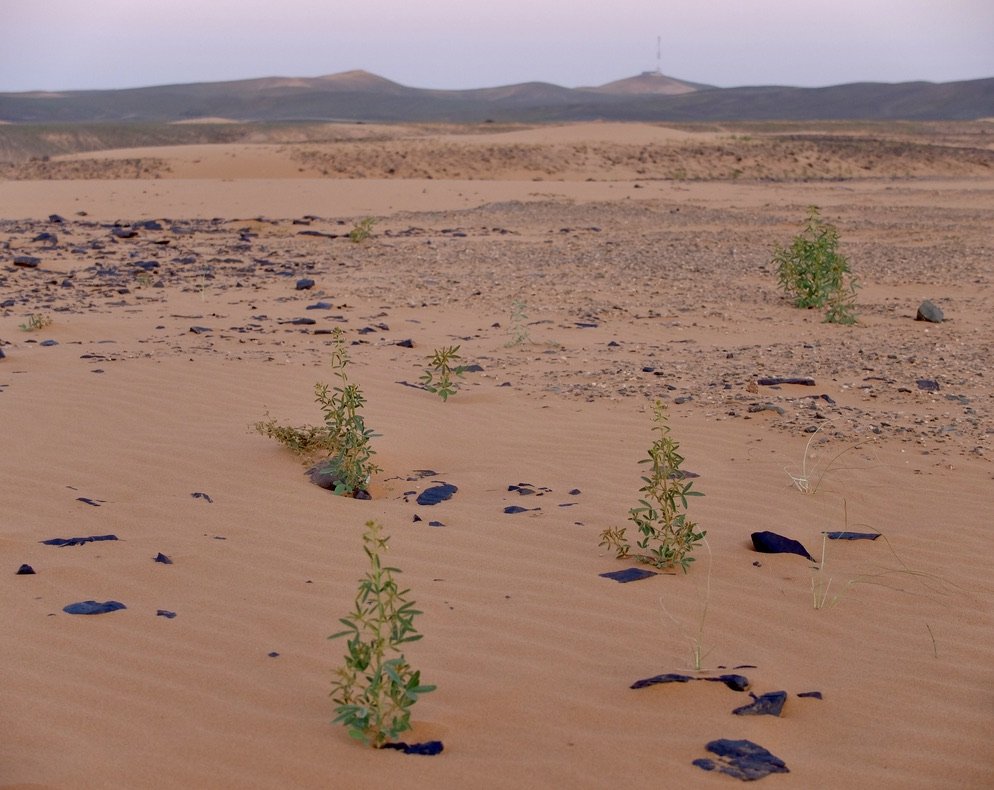
-
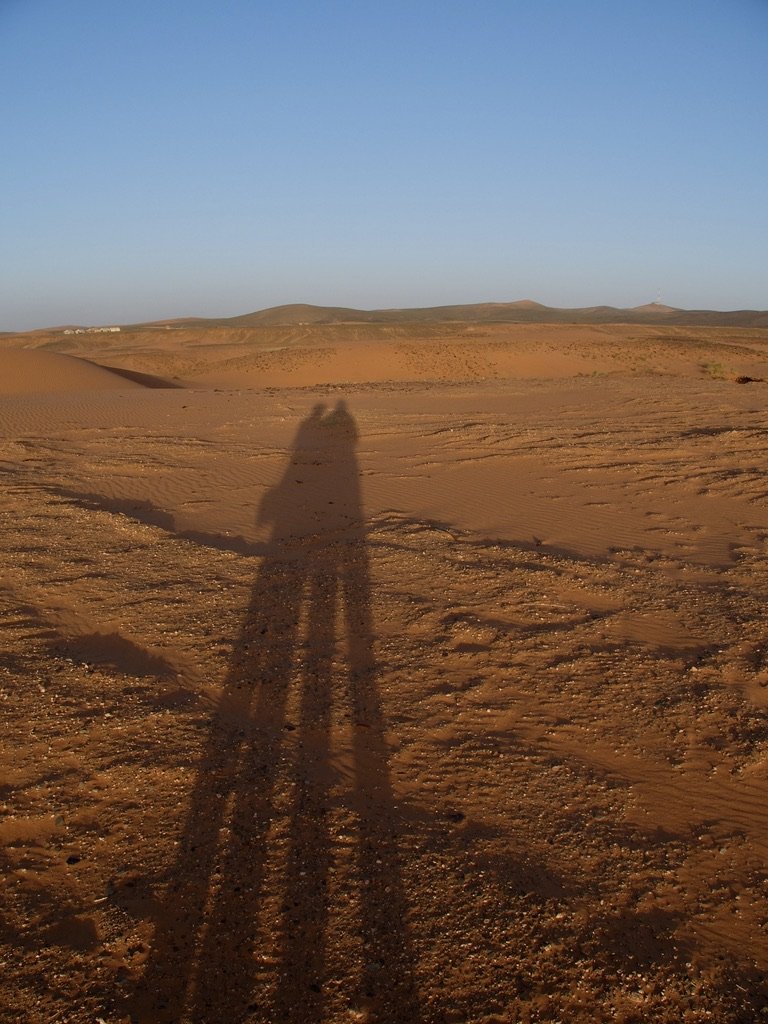
-
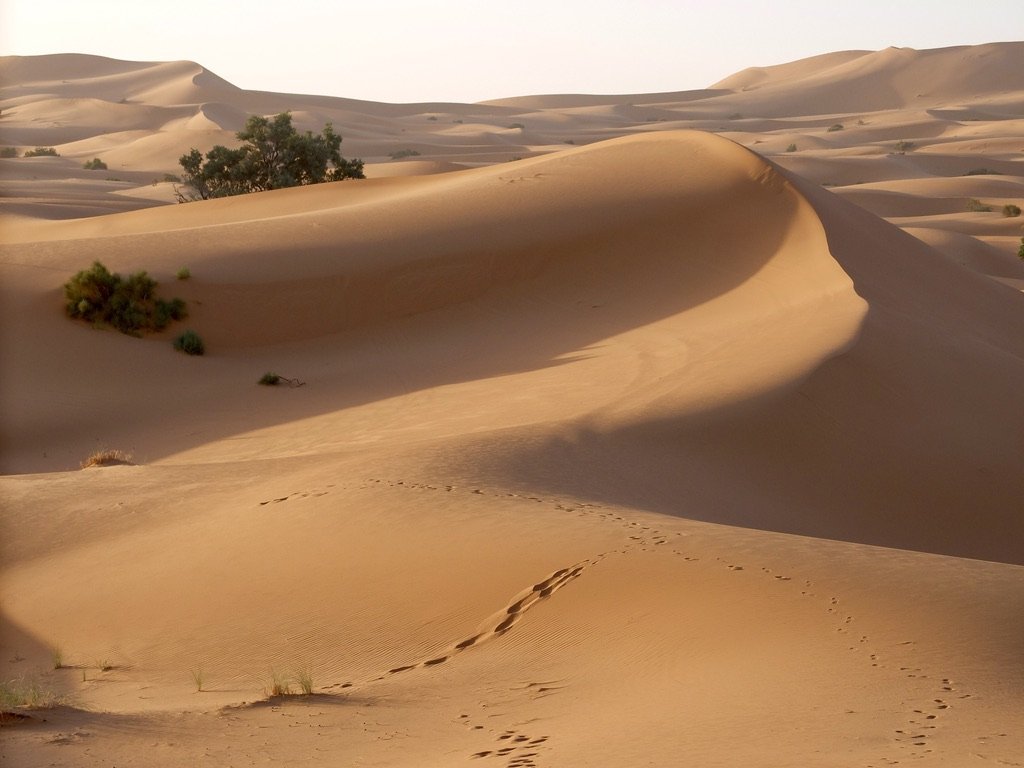
My babaouches...
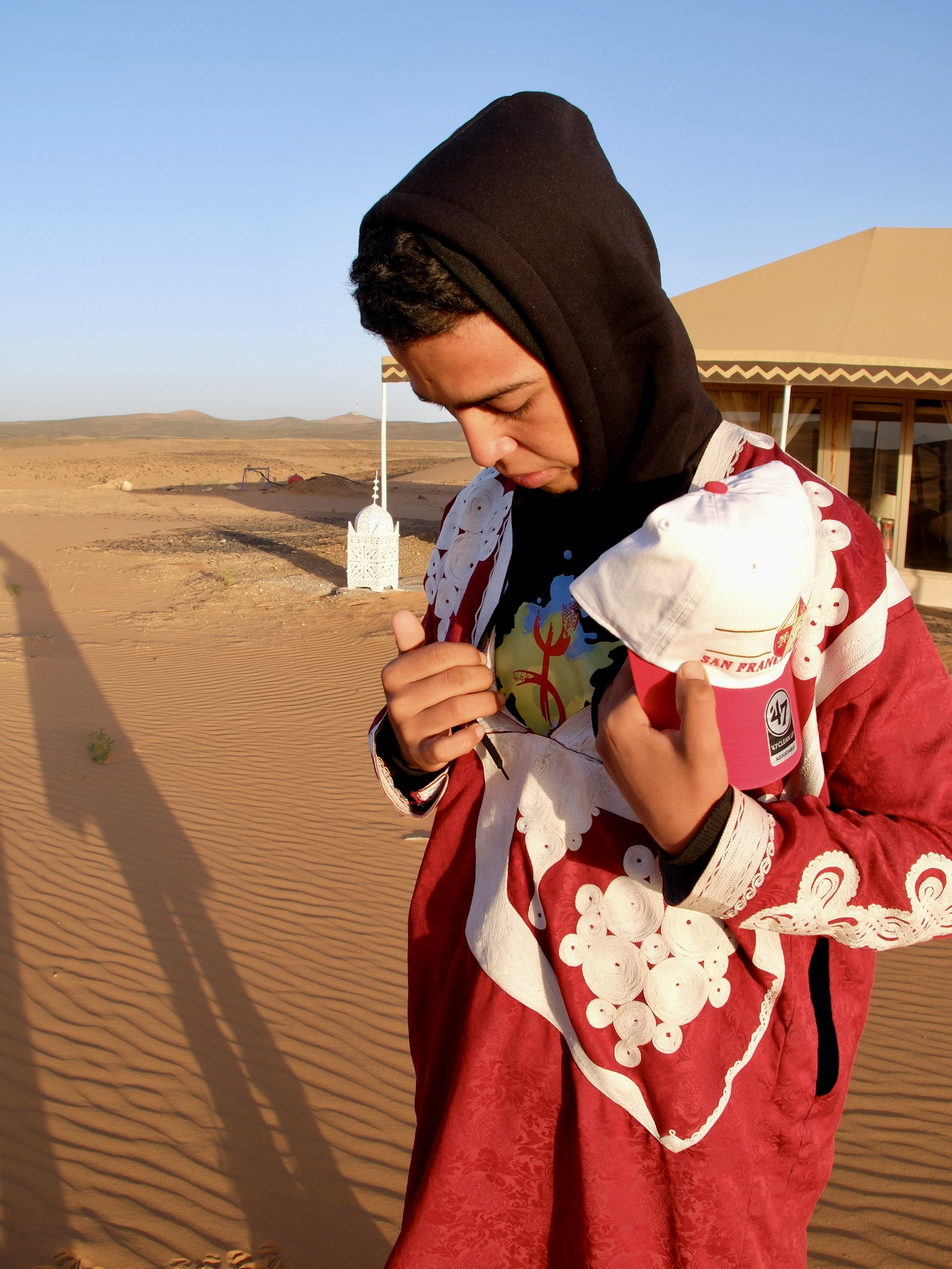
Explaining his T shirt.
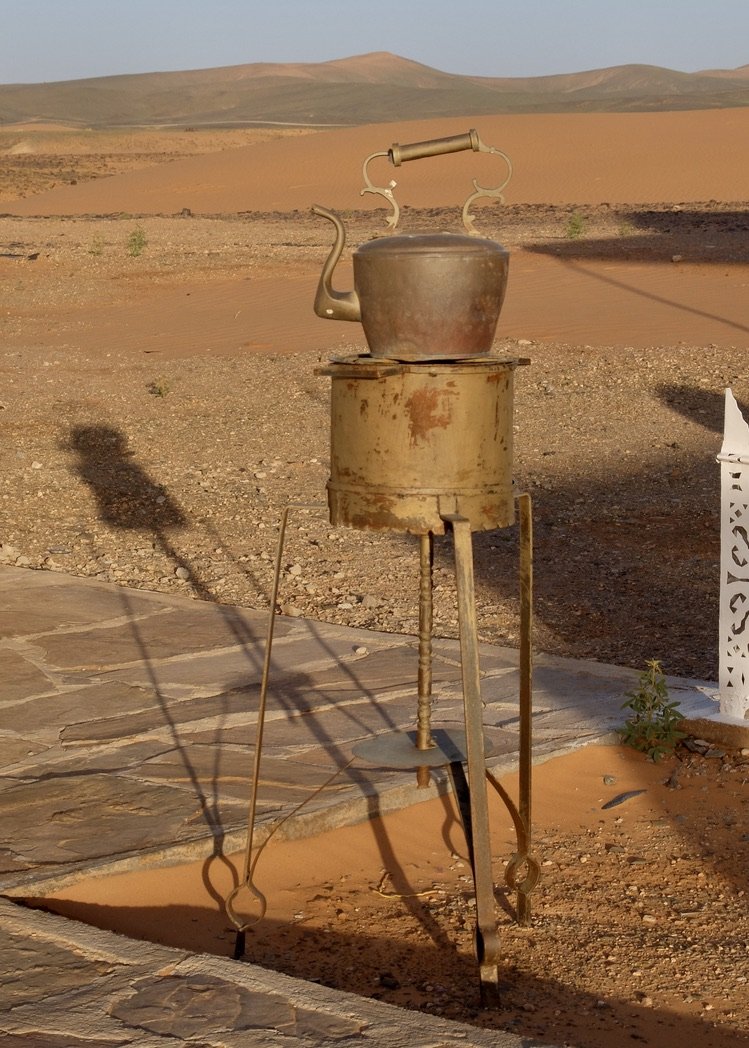
-
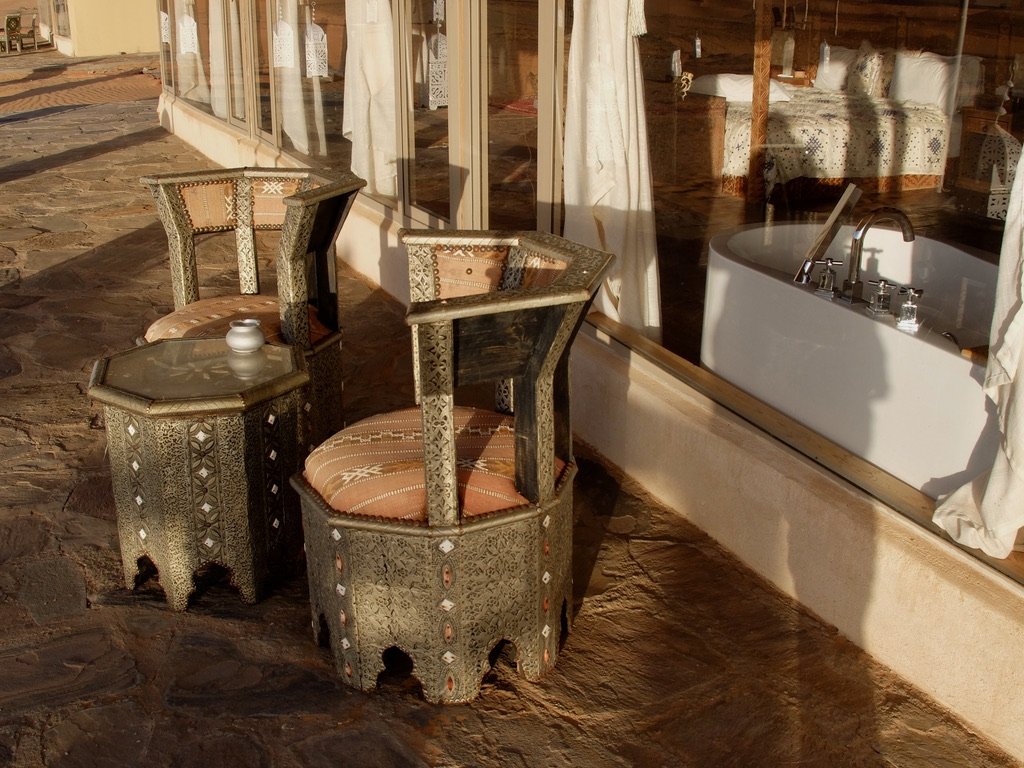
-
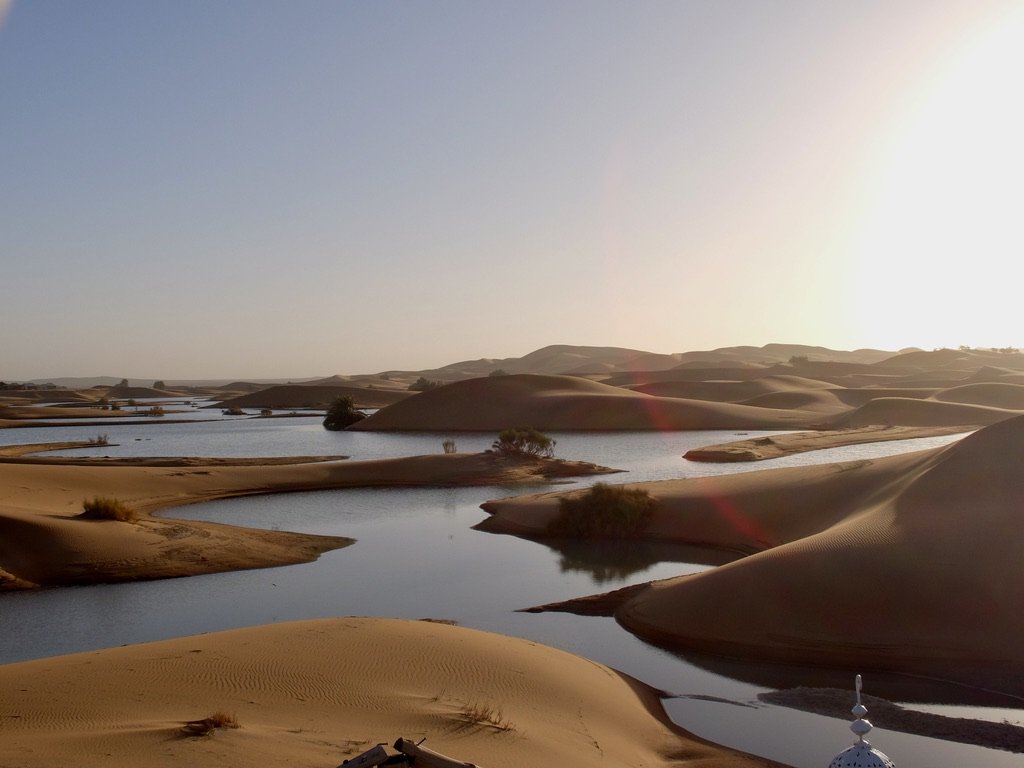
Dawn.
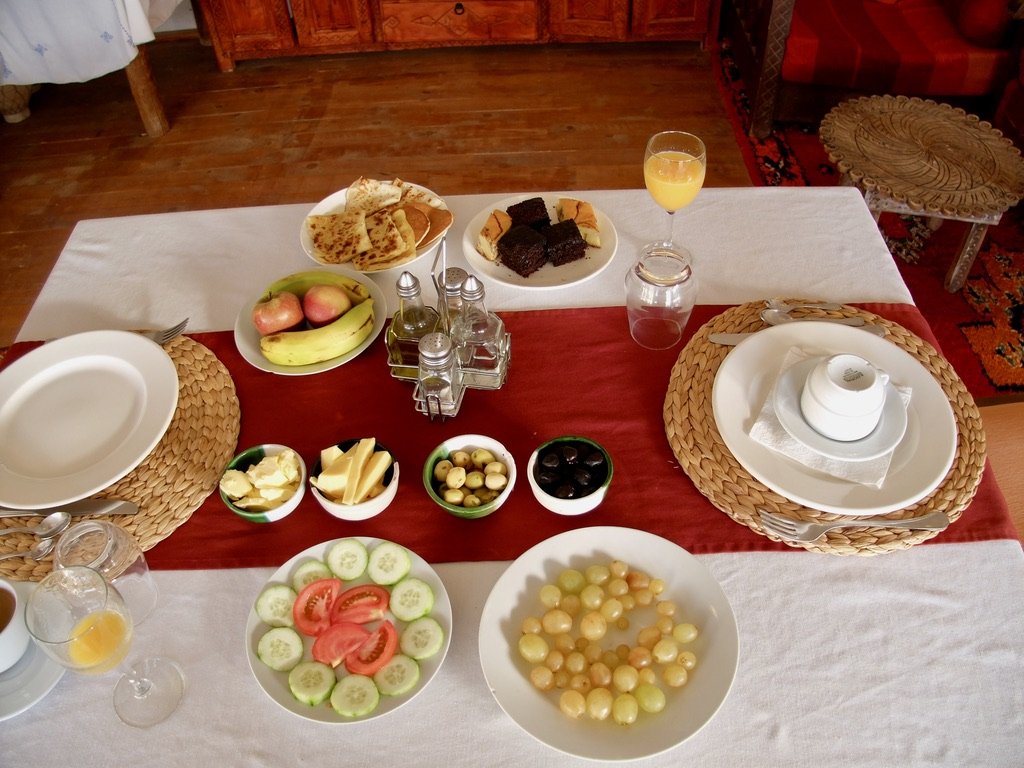
-
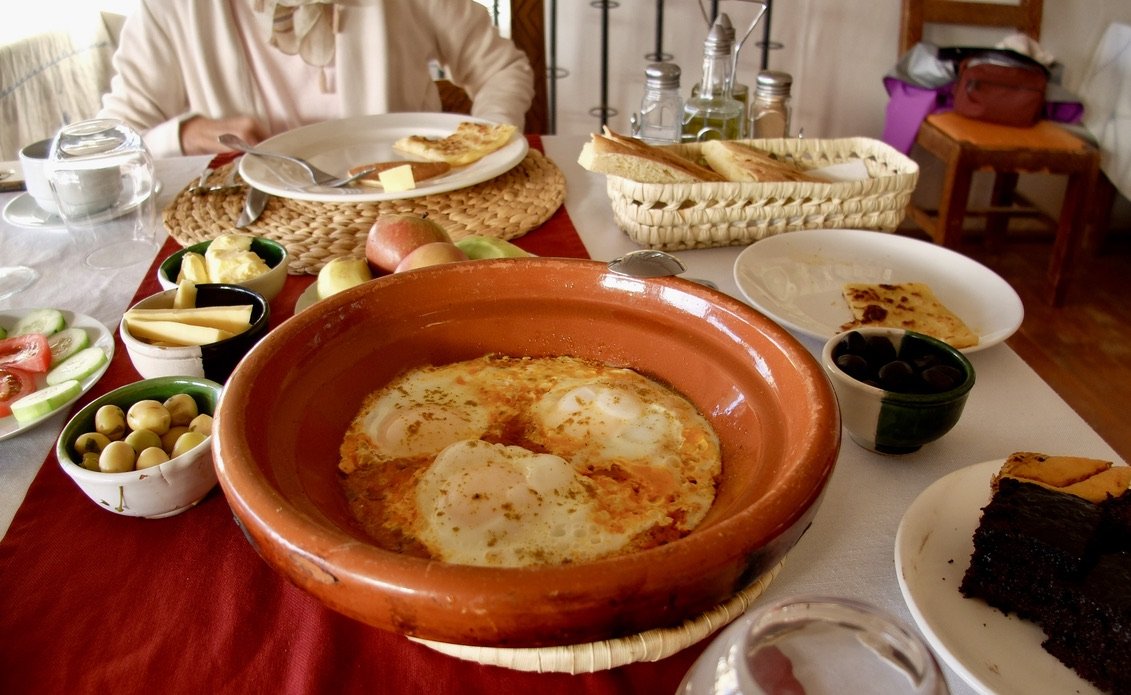
-
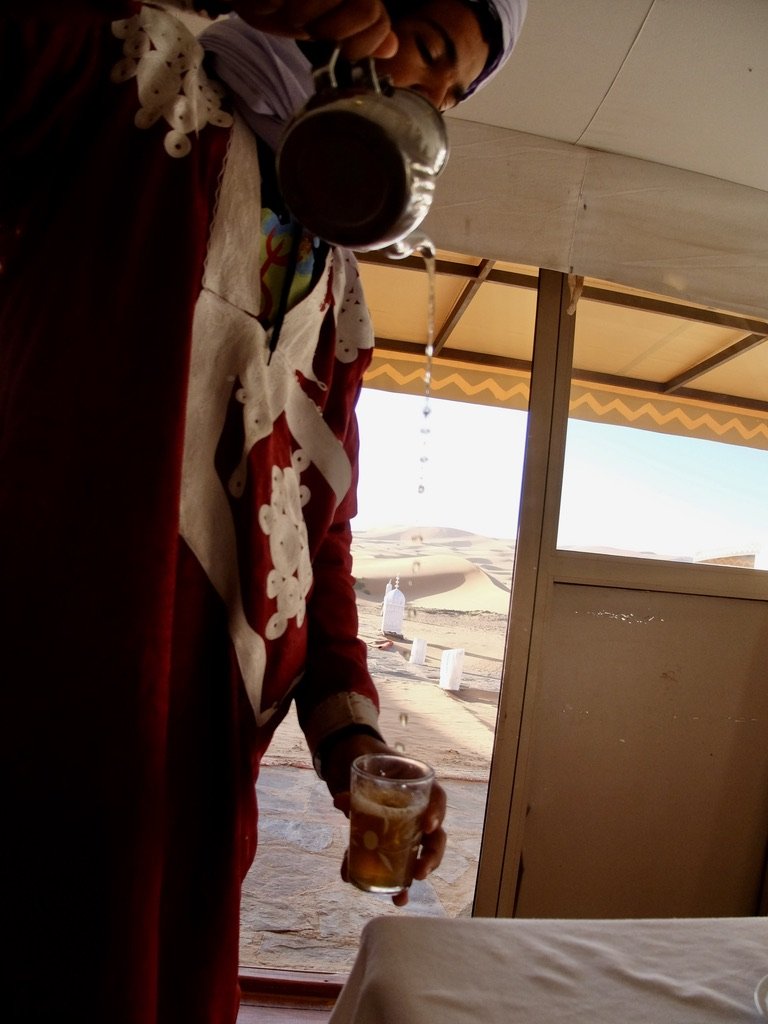
-
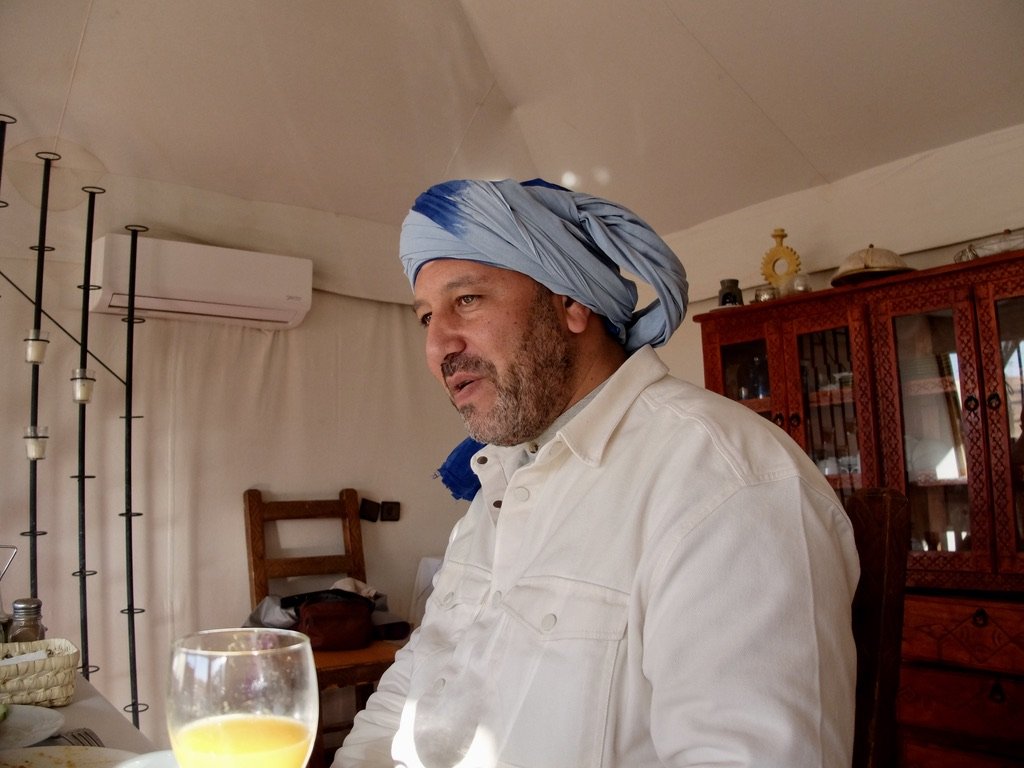
When Youssef arrived we knew it soon would be time to...
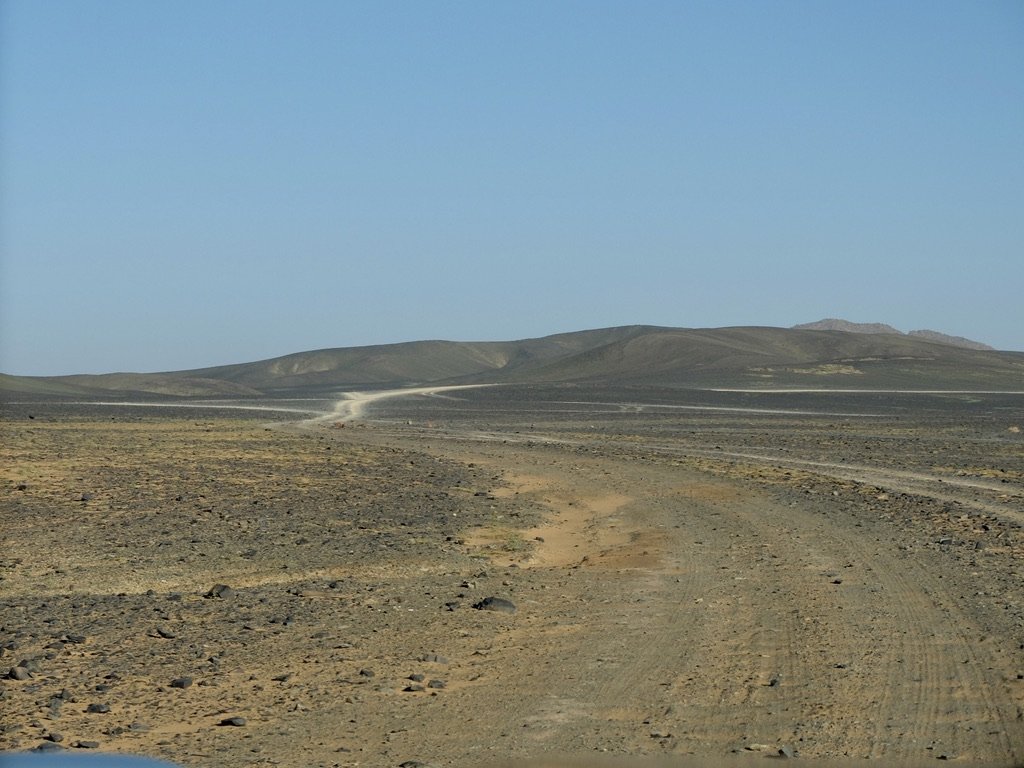
On leaving the camp, Said & Youssef drove us about an hour through the desert…,
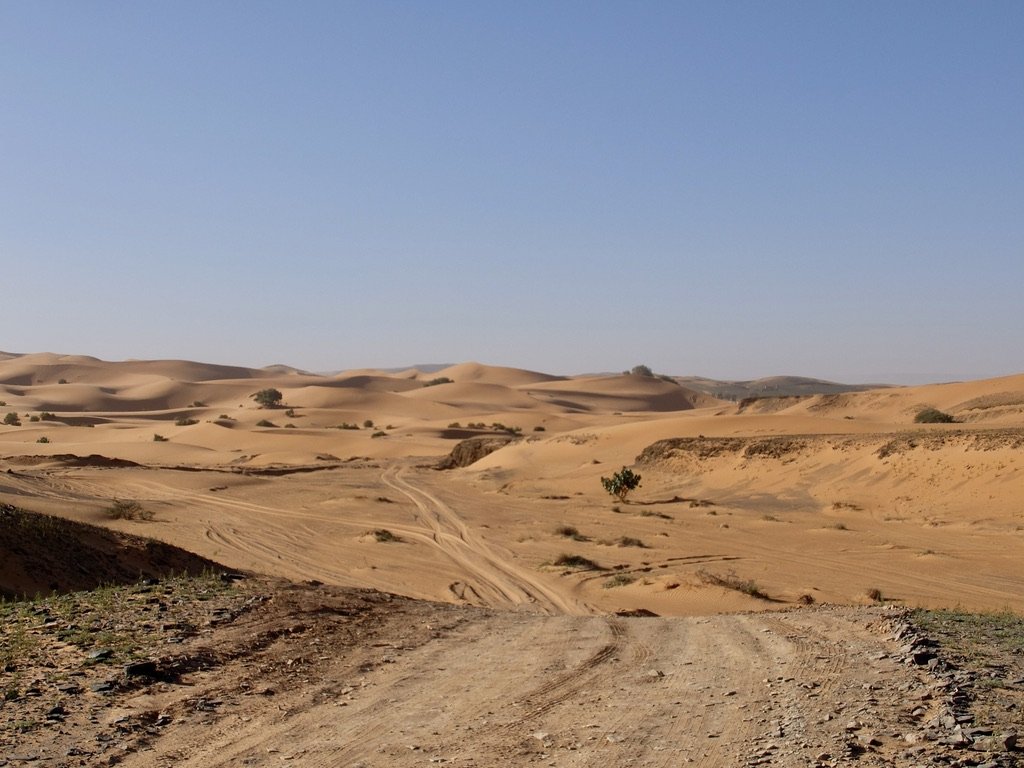
… including photo stops. My guess is that this is looking northward.
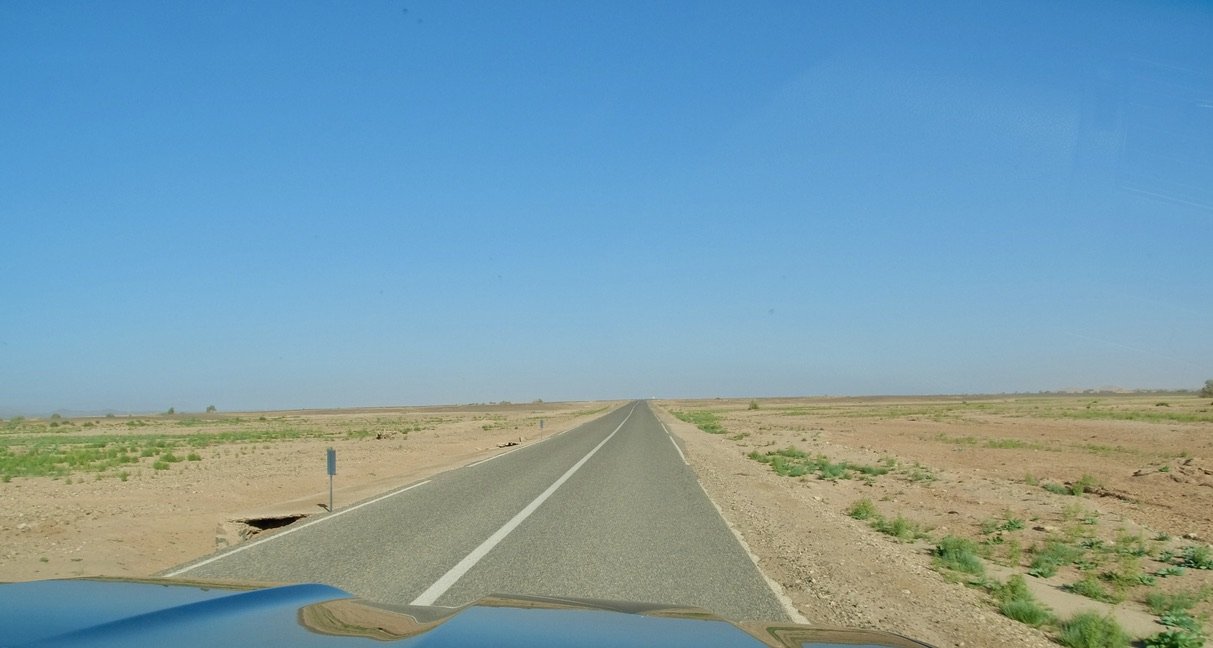
After the desert we drove until a town along the way where Said dropped us off with our driver Farid.
We left for Skoura.
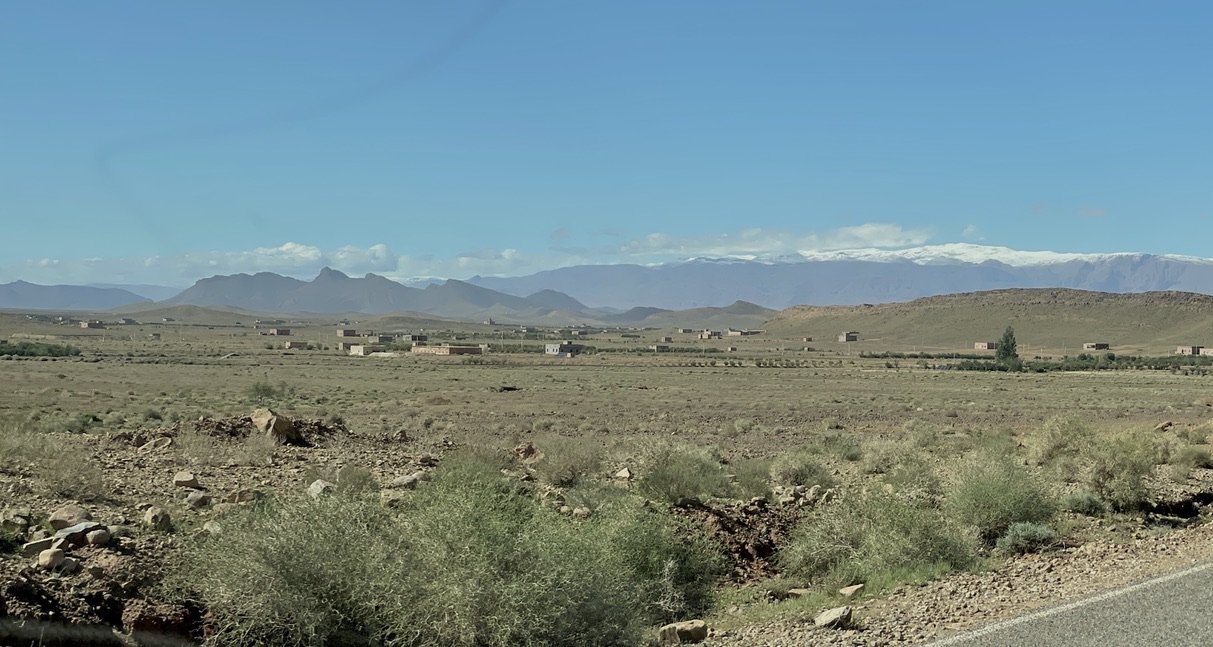
Farid & Youssef noticed me photographing the snow covered High Atlas Mountains. As we’d be skirting the southern edge of the Atlas Mountains, they said we’d be getting closer as we went along & that the view from our final destination in Skoura would be the best.
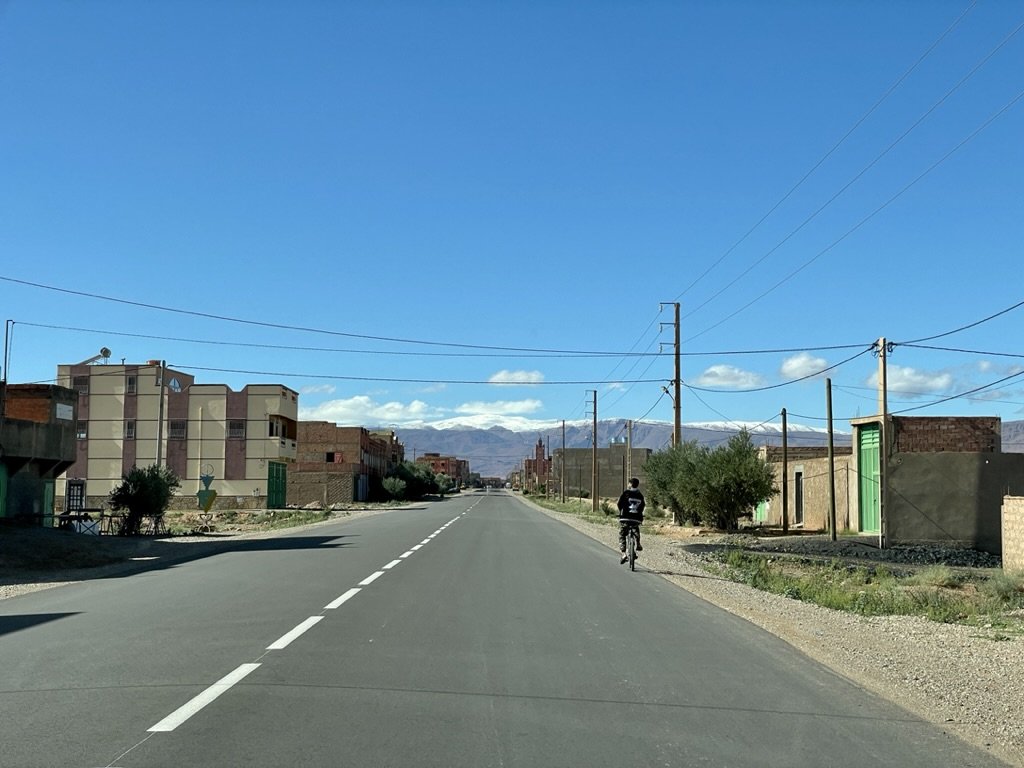
-
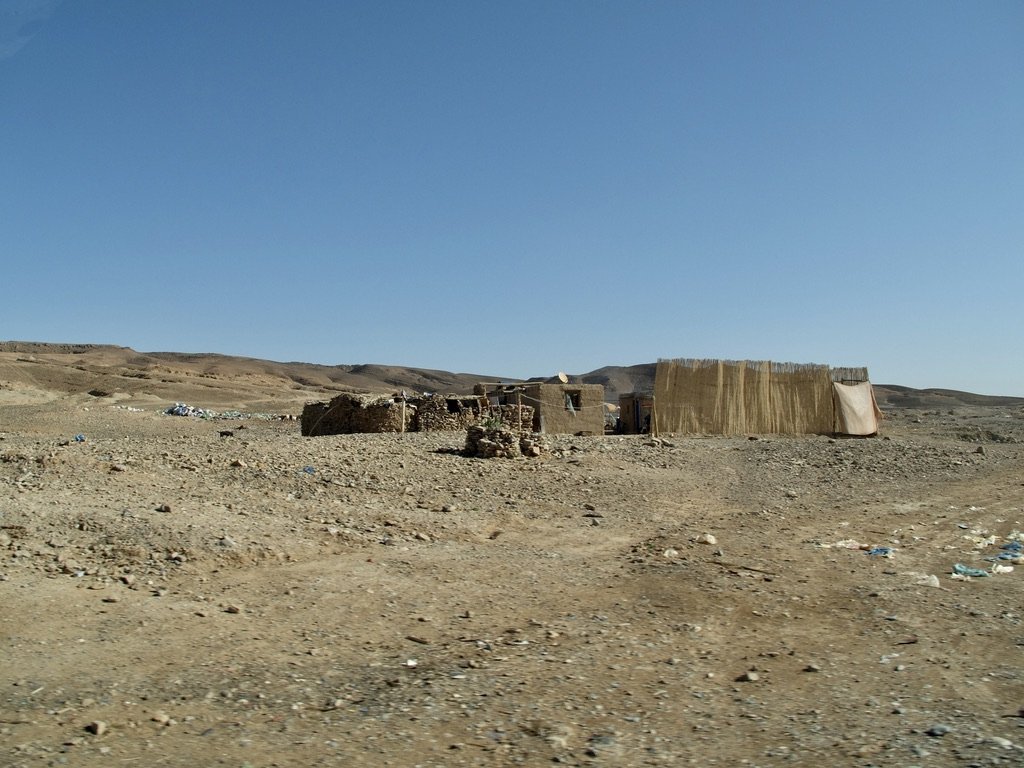
-
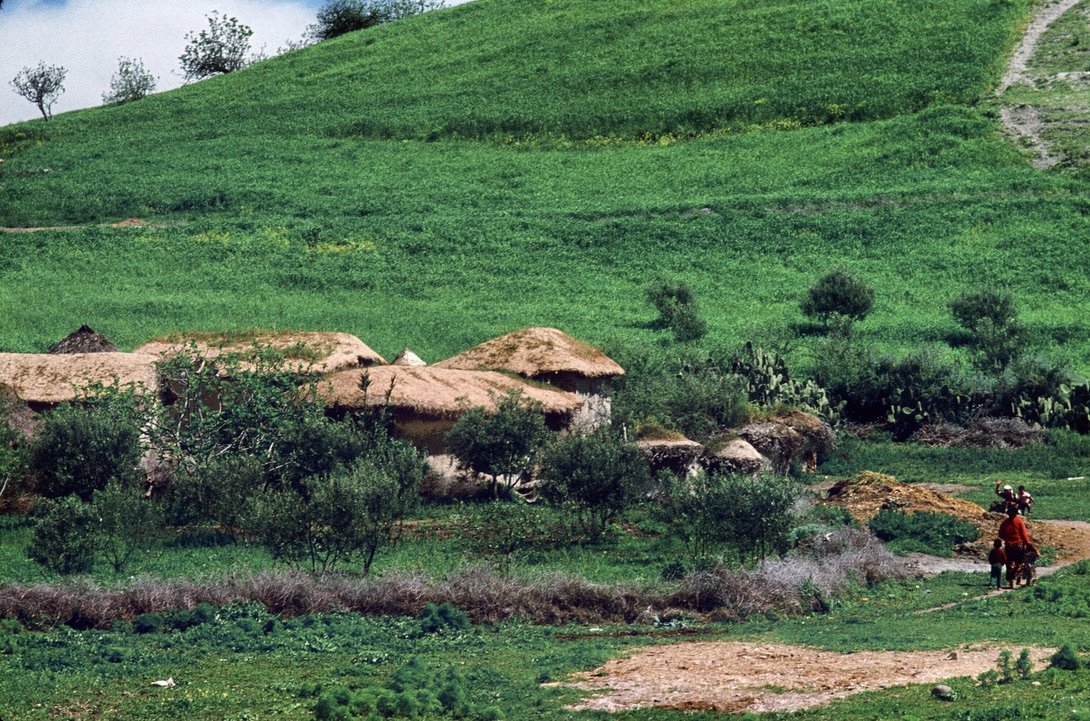
1978. My guess is somewhere between Tetouan & Fez or between Fez & Marrakech.
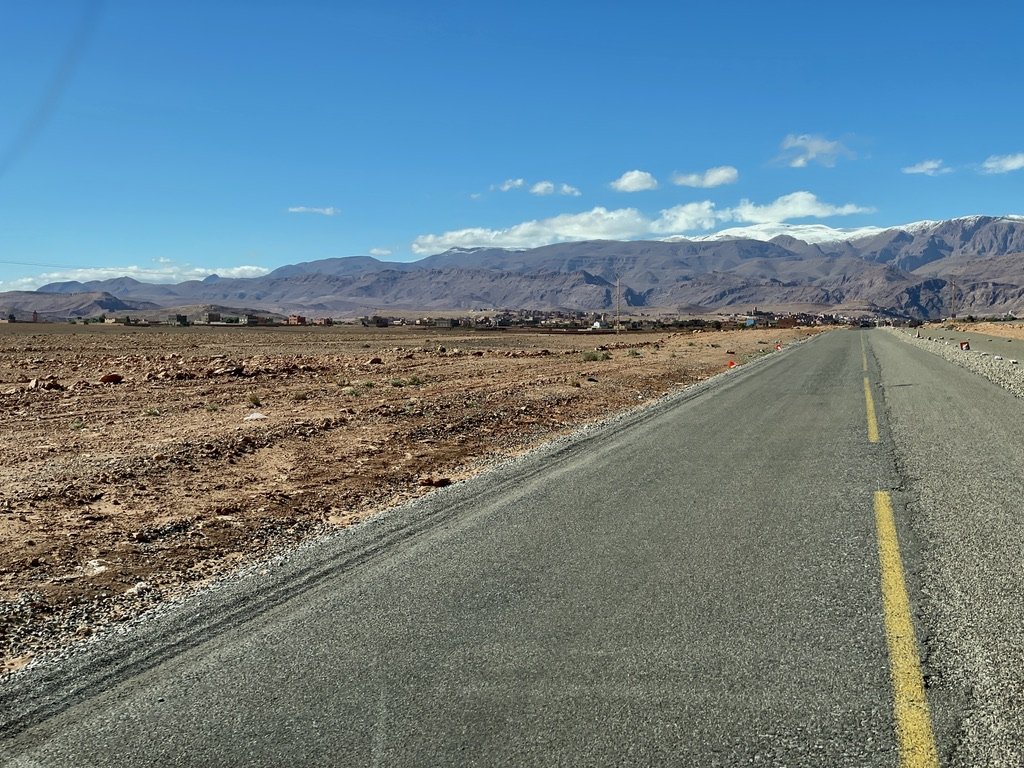
Approaching Rissani.
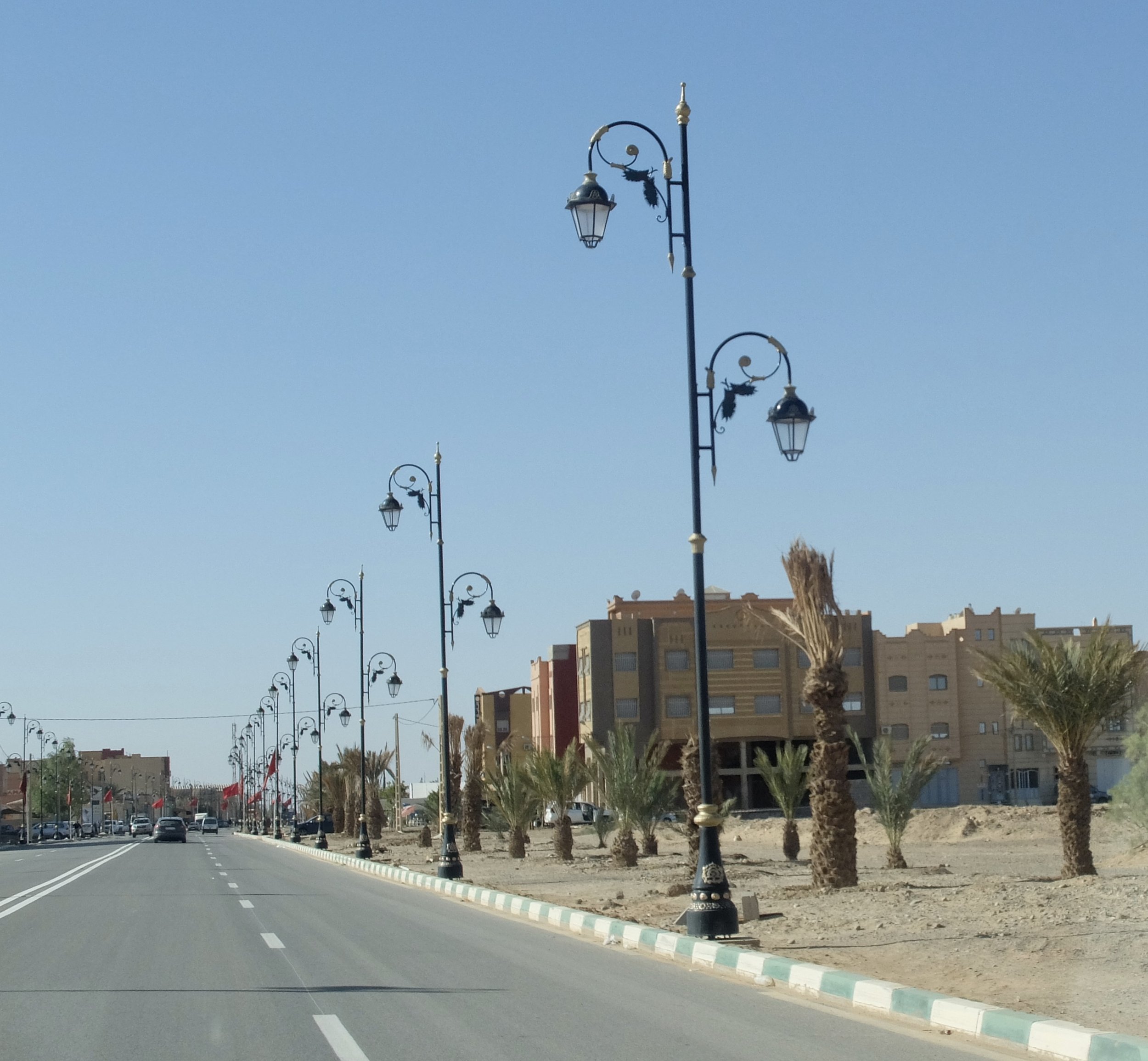
Rissani.
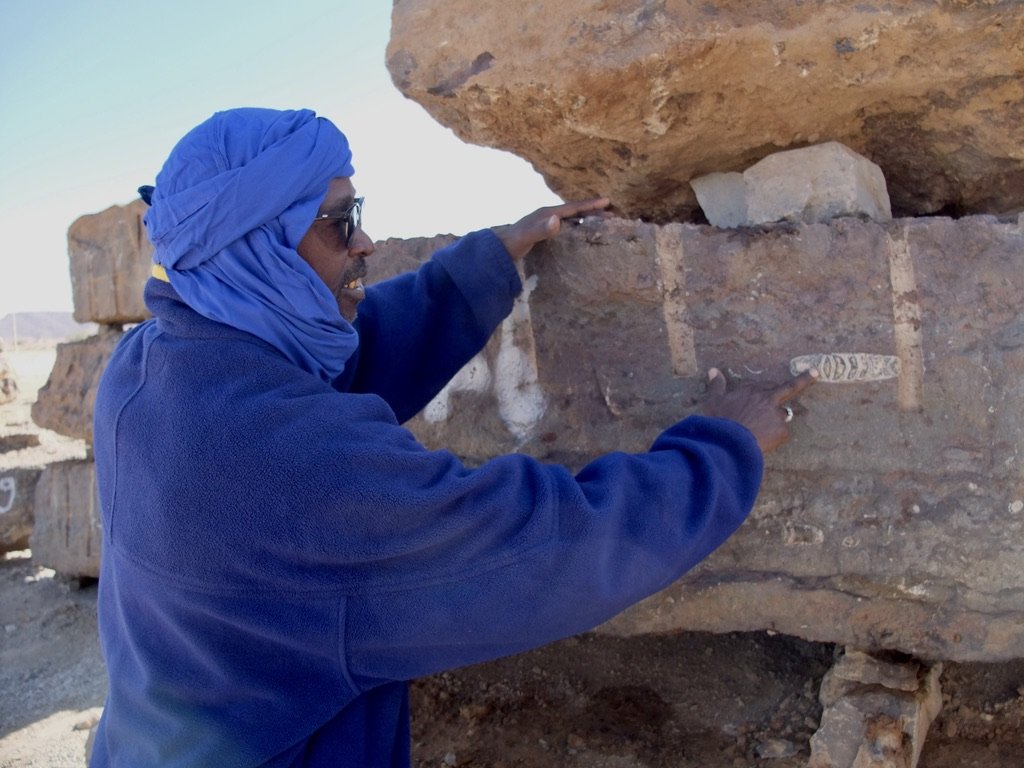
Obligatory stop at a fossil emporium, Mezane Fossil Factory, Rissani.
mezanefossilstore@gmail.com
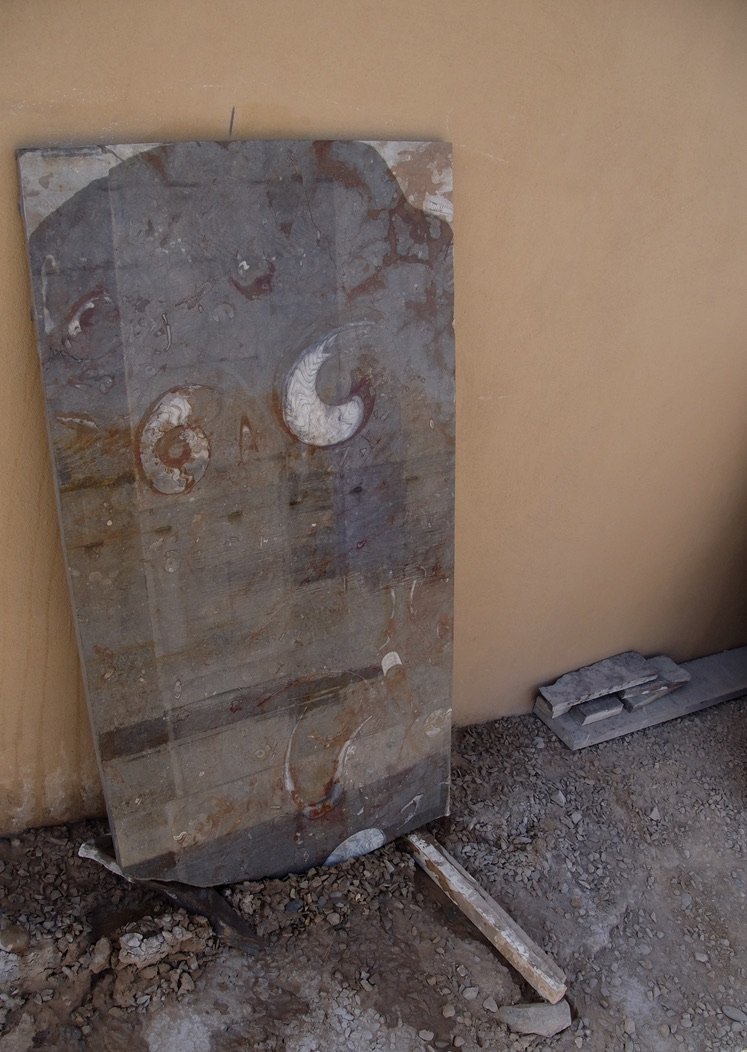
Mezane Fossil Factory.
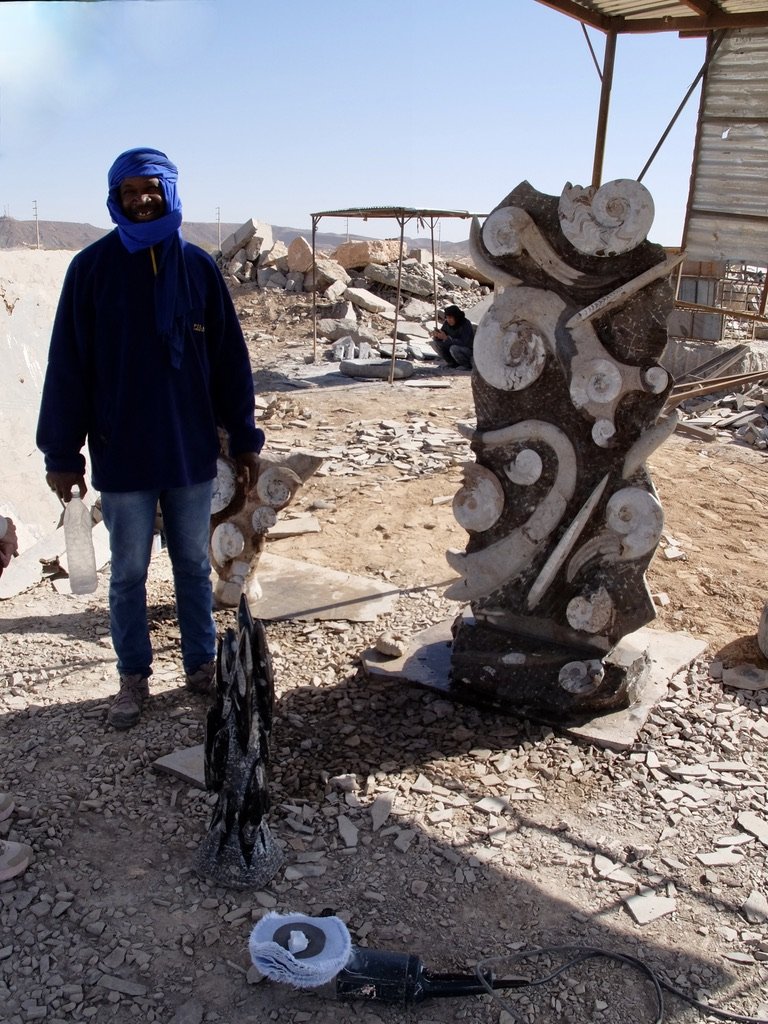
Mezane Fossil Factory, Rissani.
Check out that polisher on the ground.
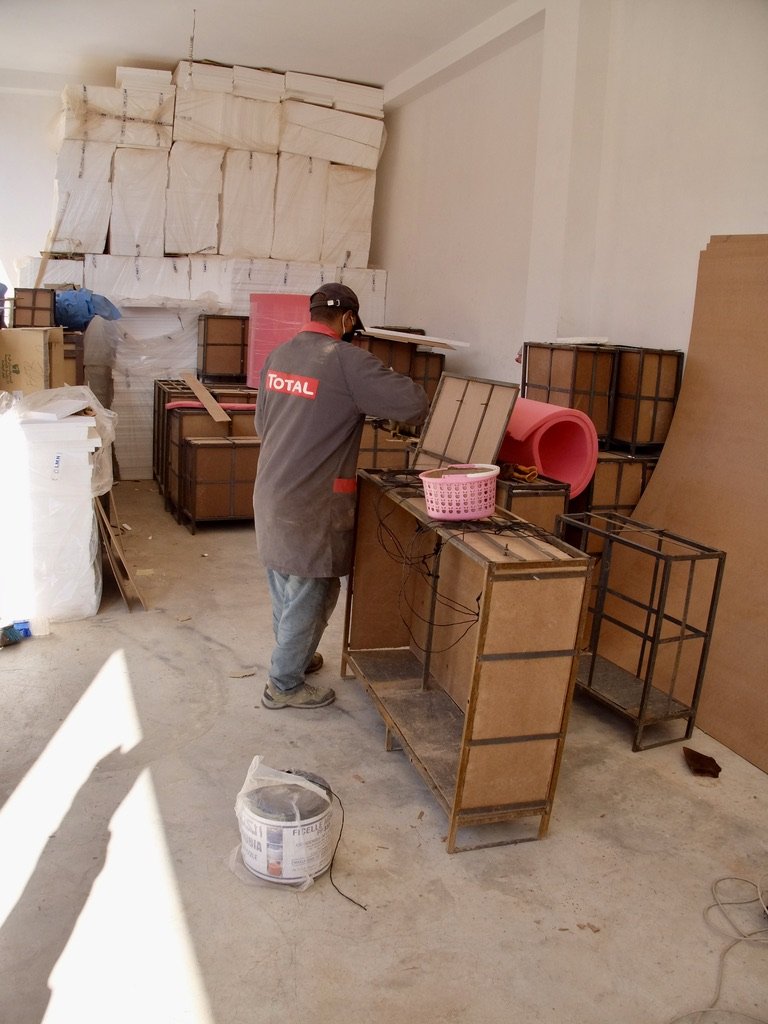
Mezane Fossil Factory, Rissani.
He’s building boxes for shipment of fossils worldwide.
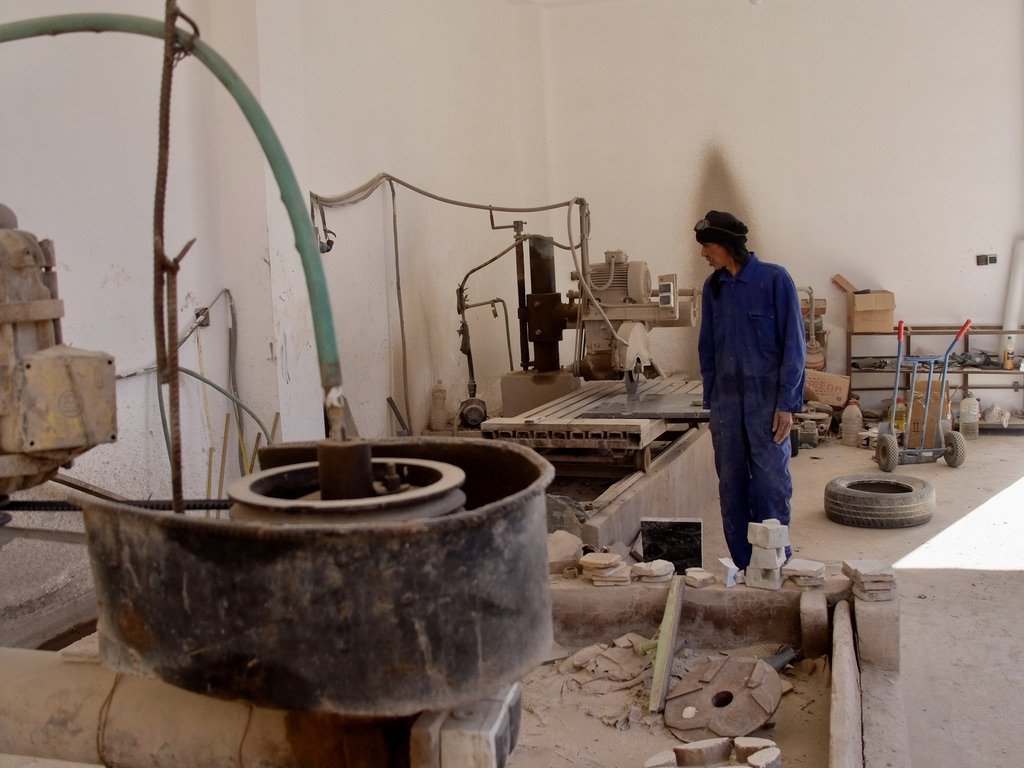
Mezane Fossil Factory, Rissani.
He had just cut some rock.
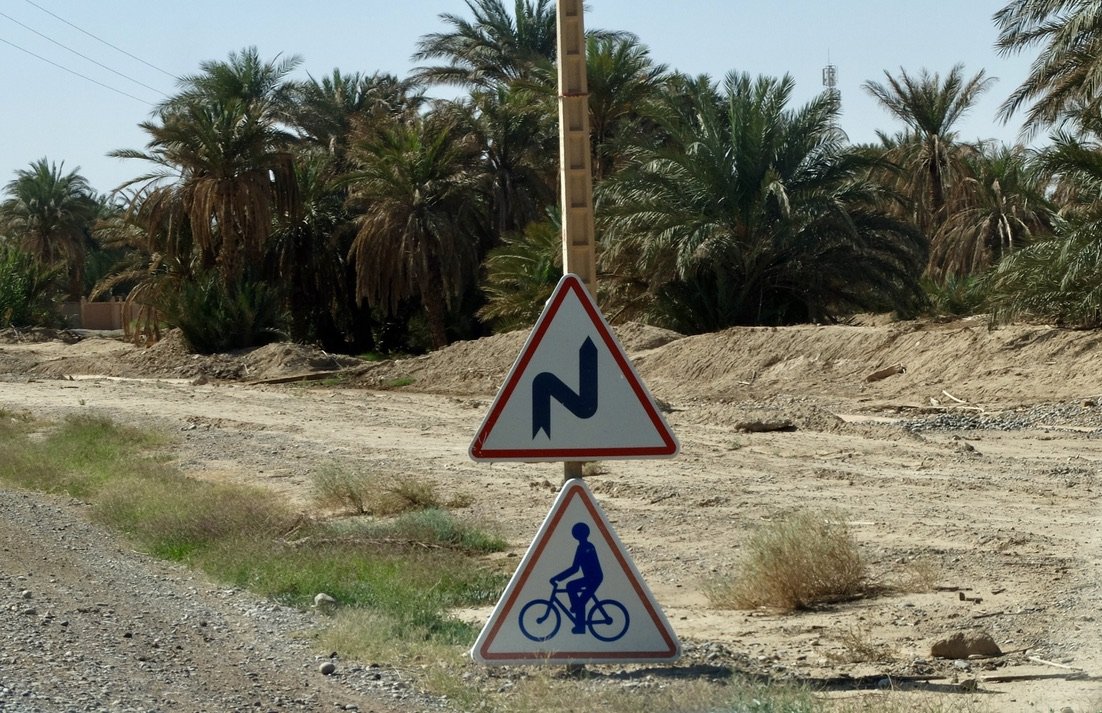
Rissani.
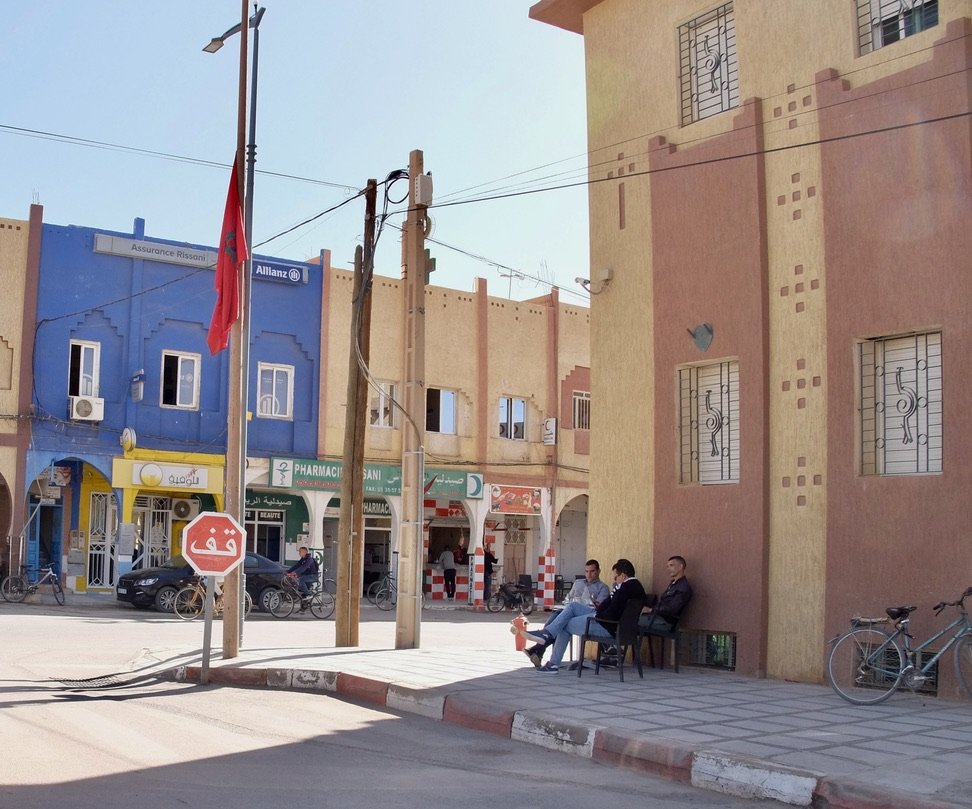
Rissani.
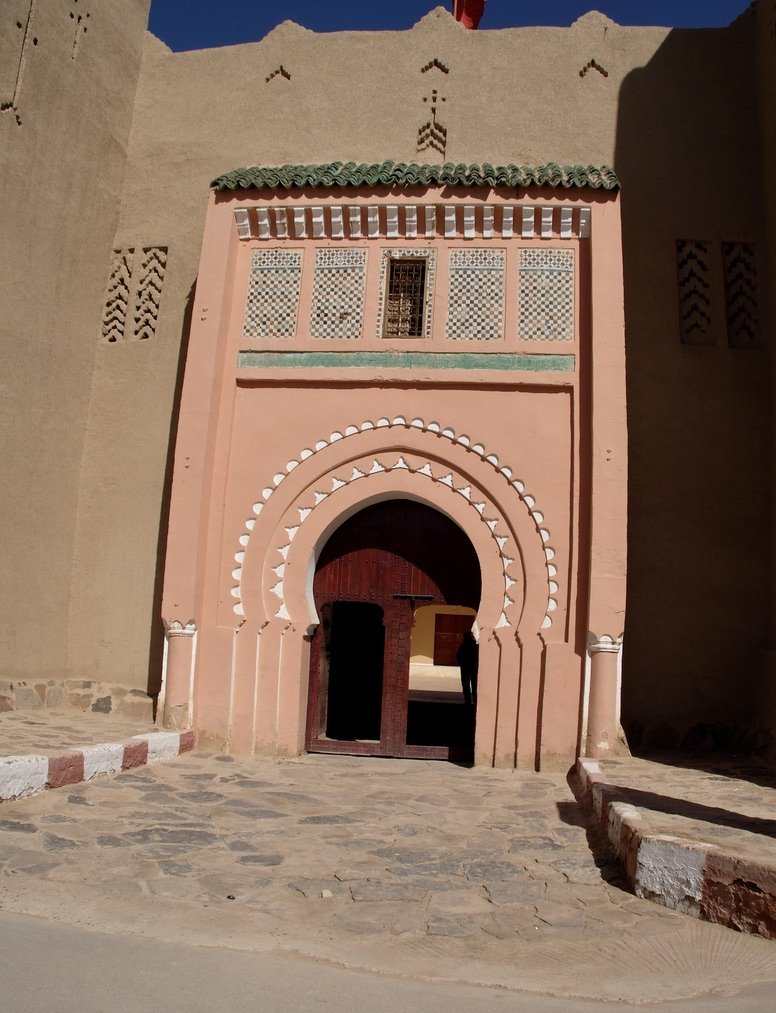
Rissani.
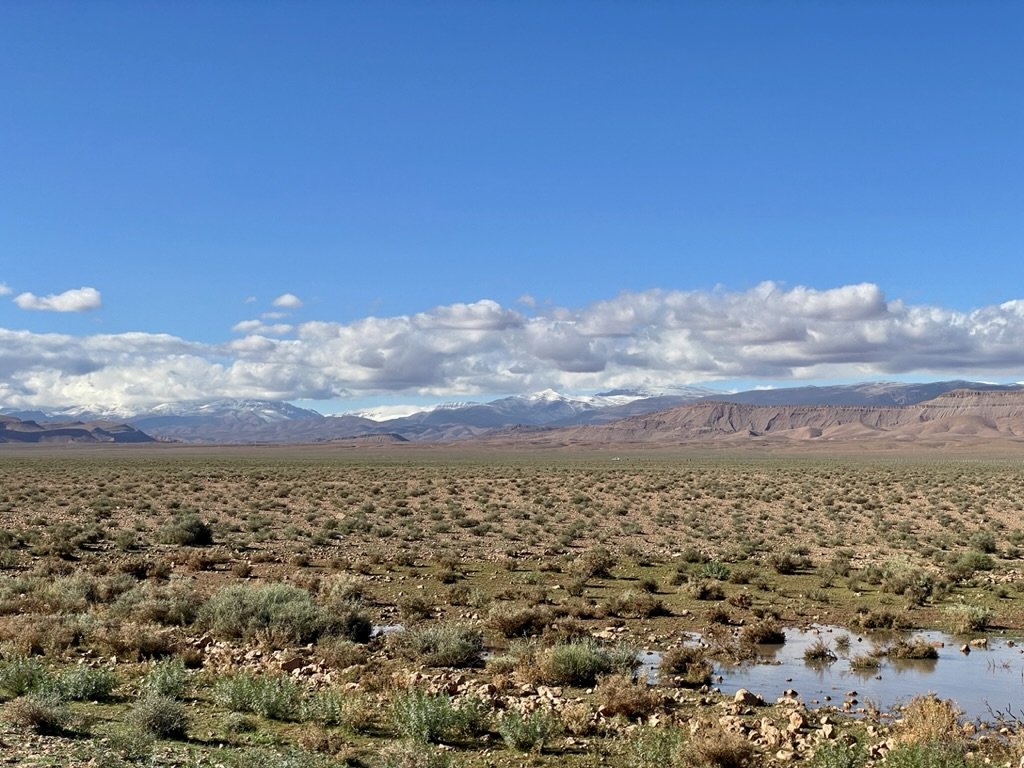
-
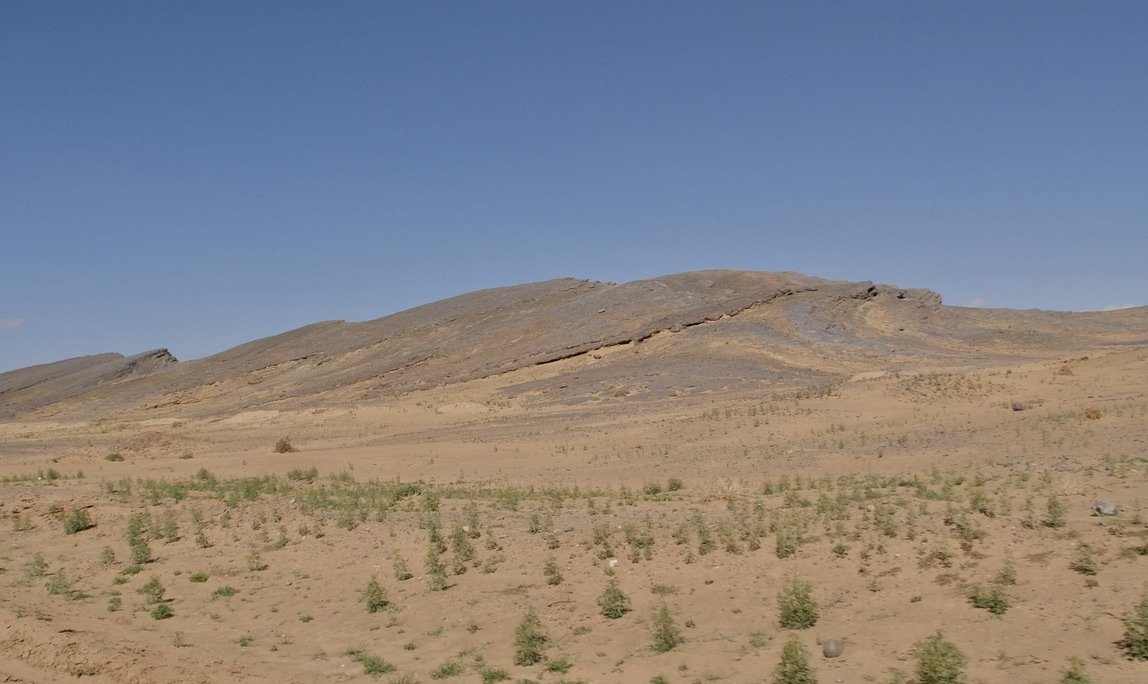
-
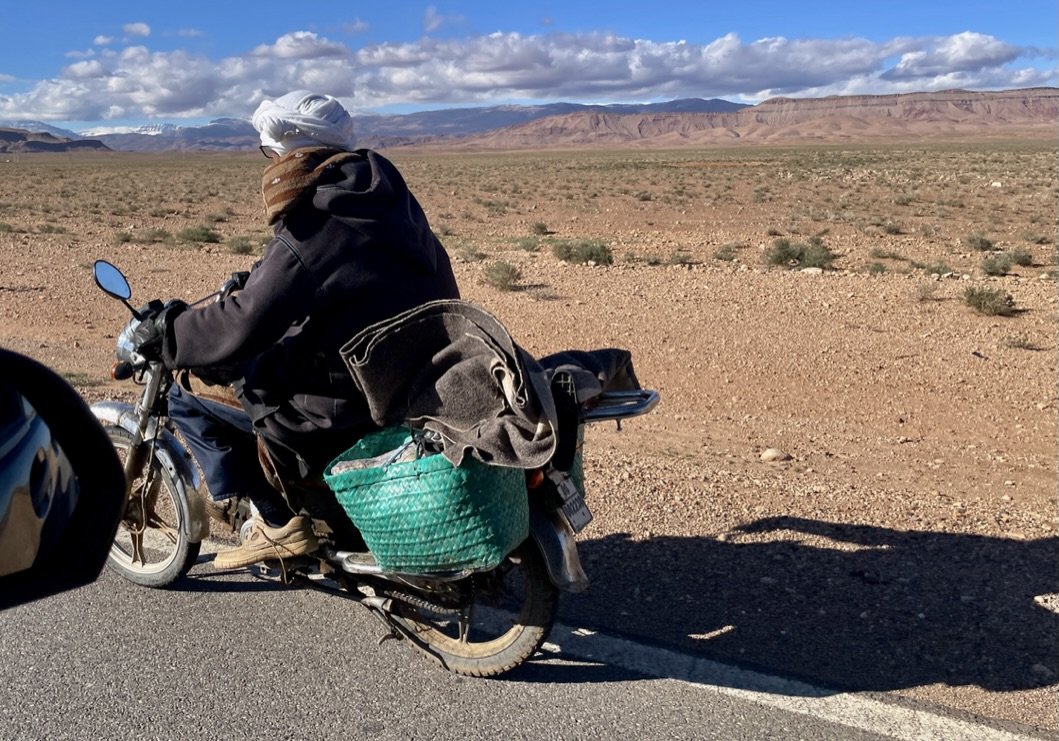
In the middle of nowhere.

-
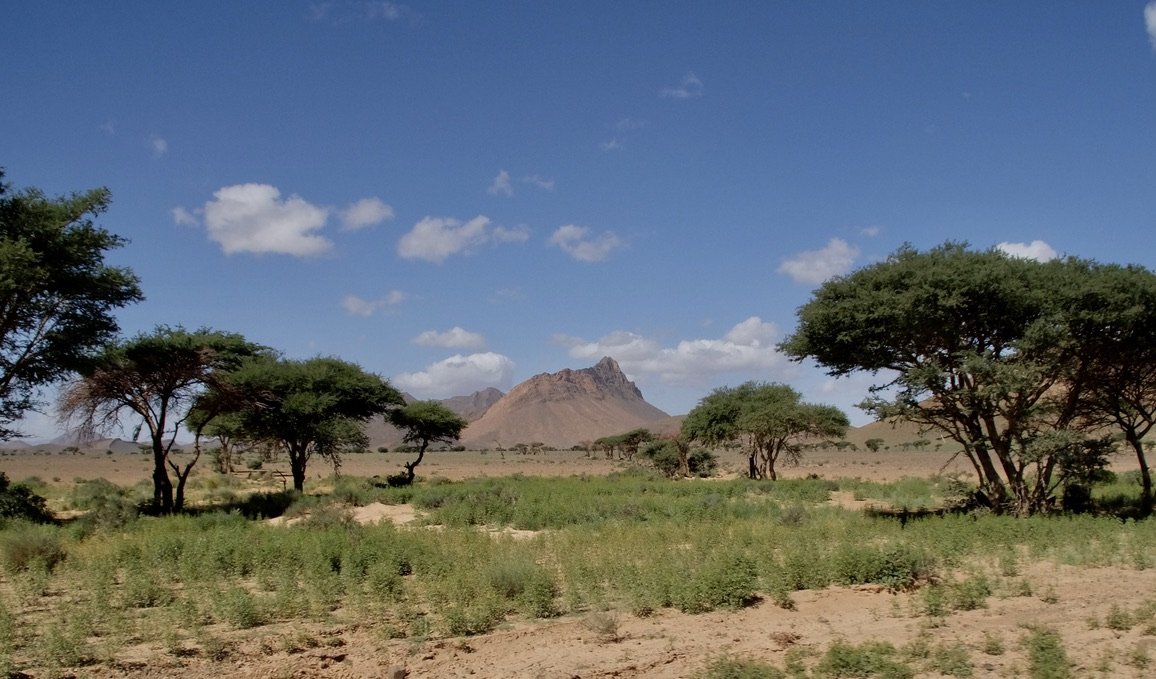
-
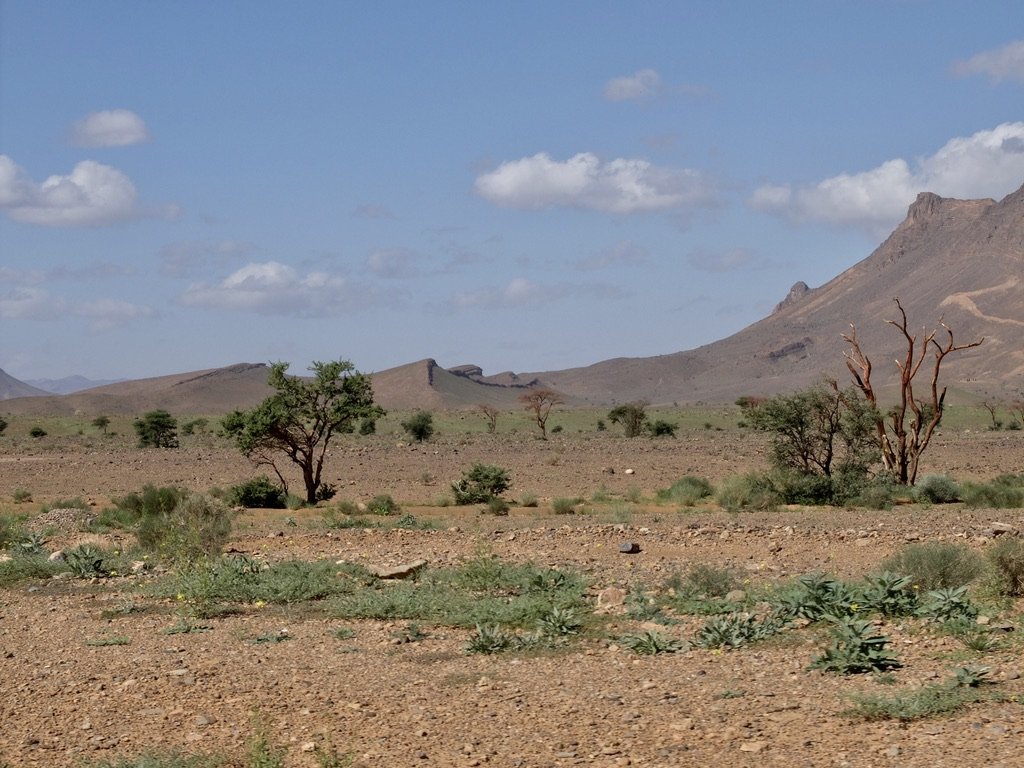
-
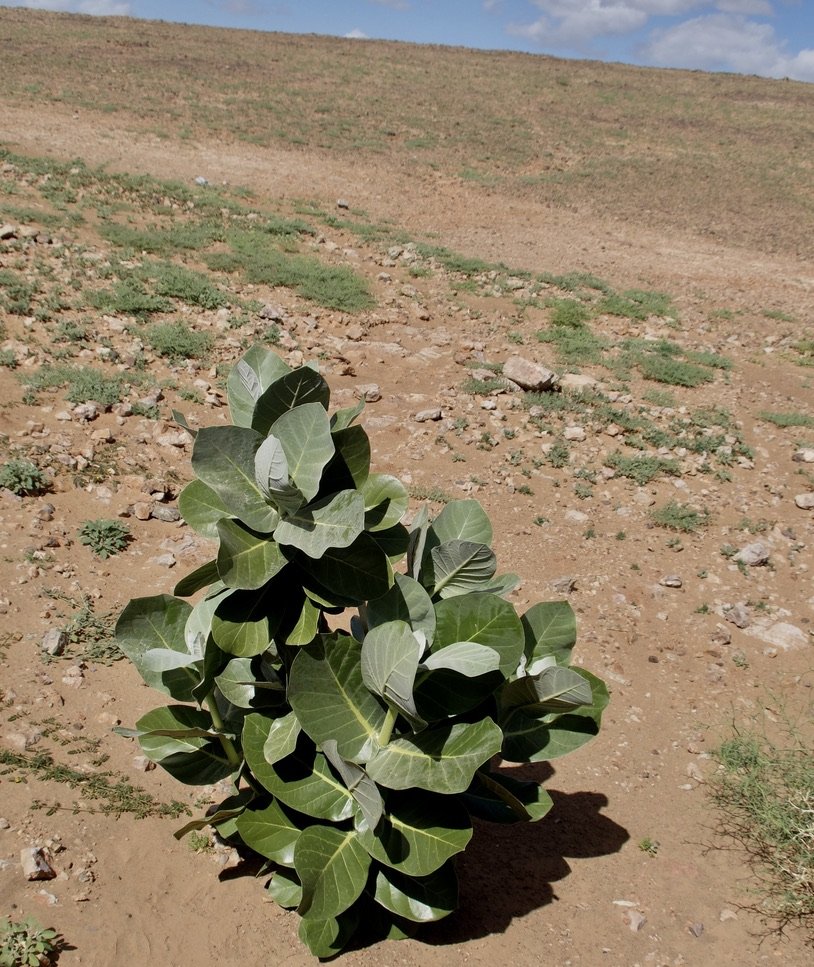
We had a long discussion about this plant & Farid found a roadside example for me to photograph, discreetly from the mini van.
Pommier de Sodome "Calotropis procera is a species of flowering plant in the family Apocynaceae that is native to Northern and Tropical Africa…” All parts of the plants are toxic…and are poisonous if ingested. Handling the plant may cause skin irritation or an allergic reaction.
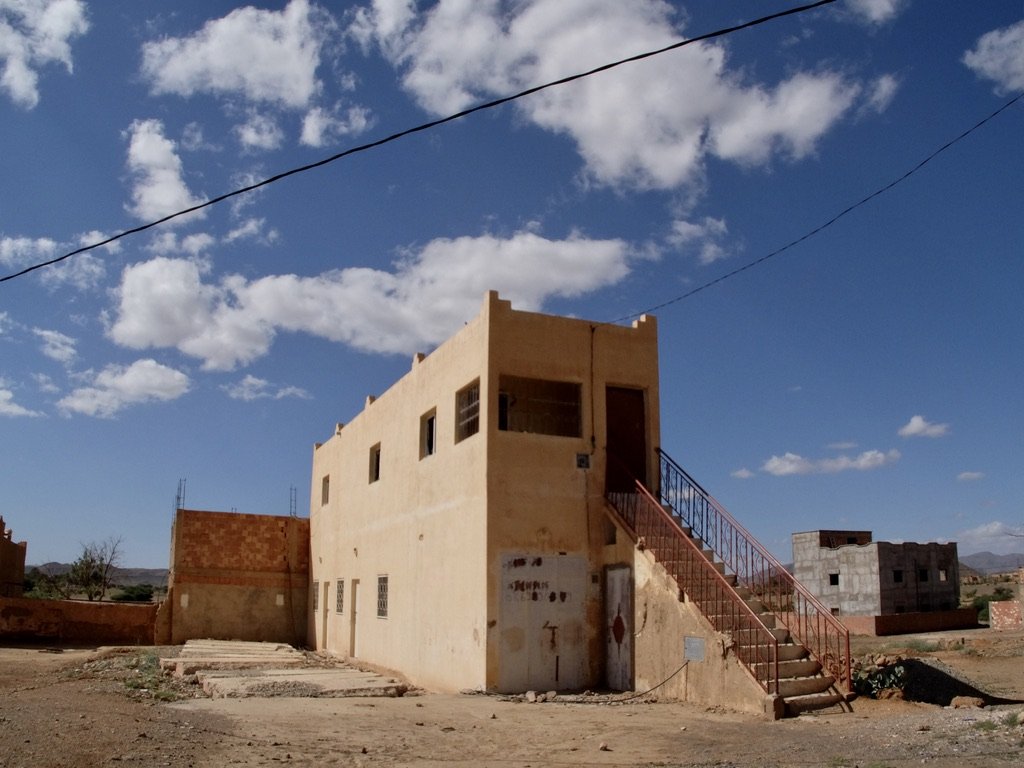
Near Alnif.
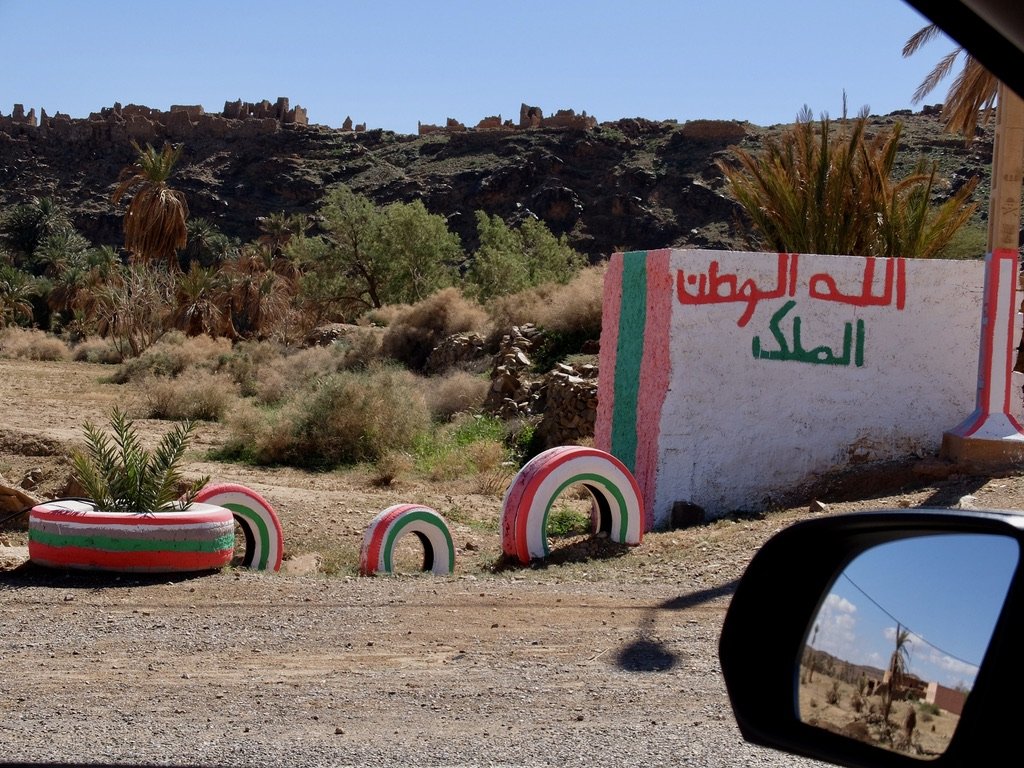
Near Alnif, an abandoned village above.
Below, the painted tires are warnings for drivers.
الله Allah appears twice in that graffiti. Most graffiti we saw had الله
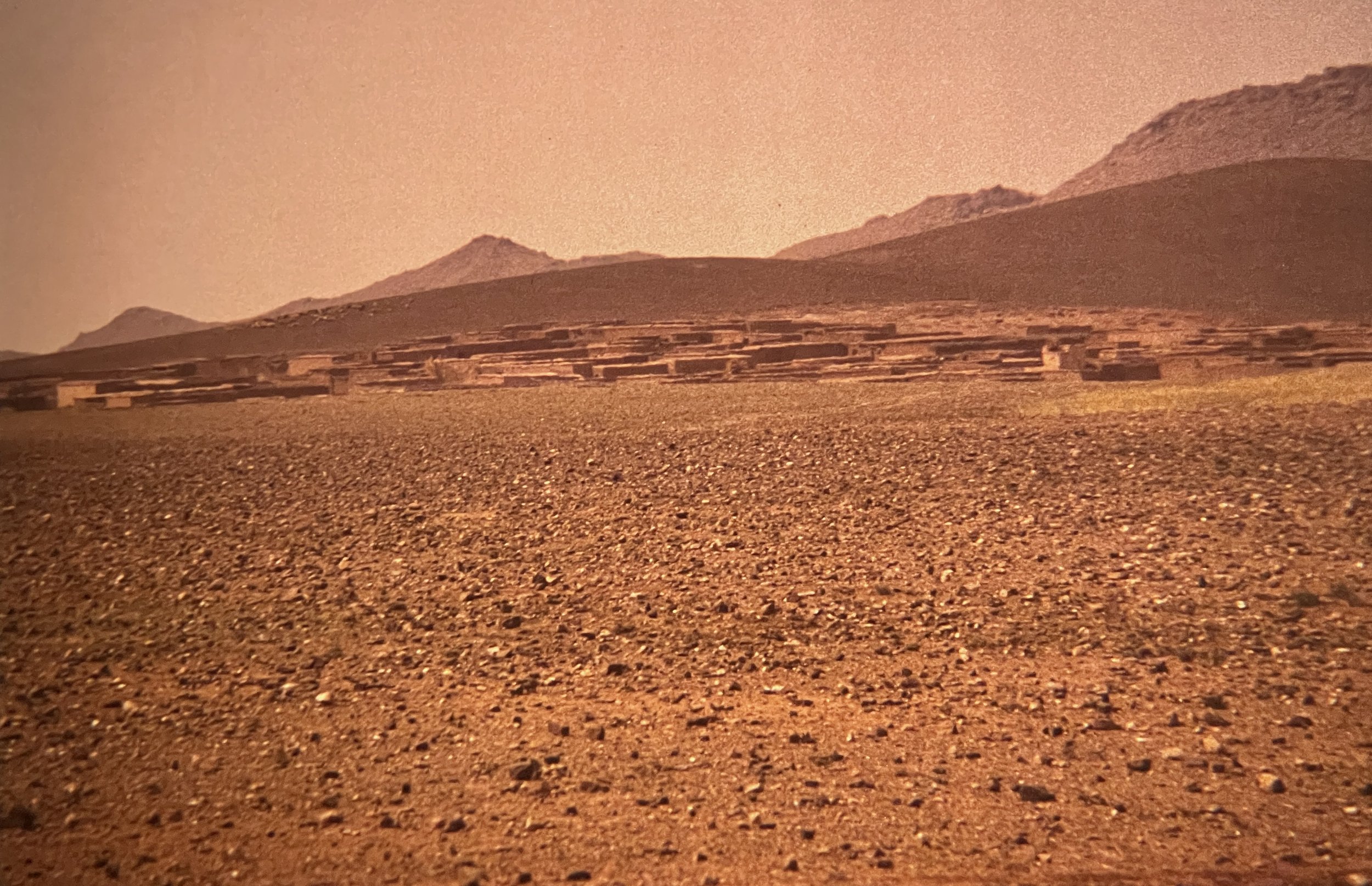
1978 an abandonded village becoming part of the landscape.
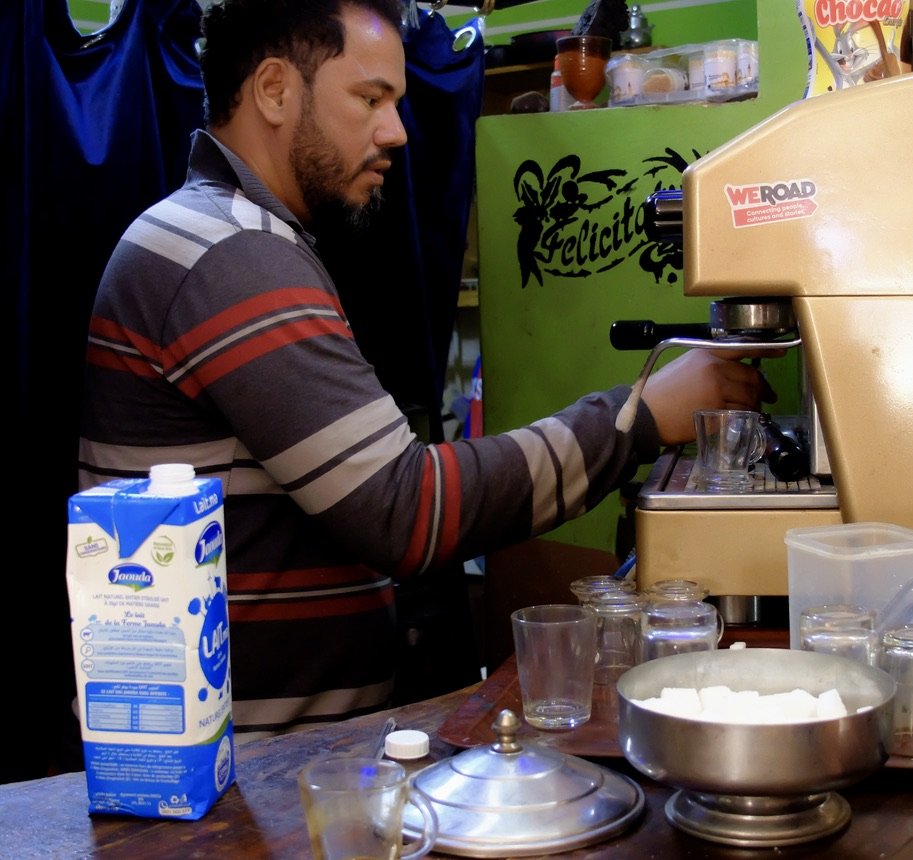
Saghro, Café & Retaurant, Alnif.
Clean toilets, good coffee, lots of snack options & many other travelers.

Saghro, Café & Retaurant, Alnif.
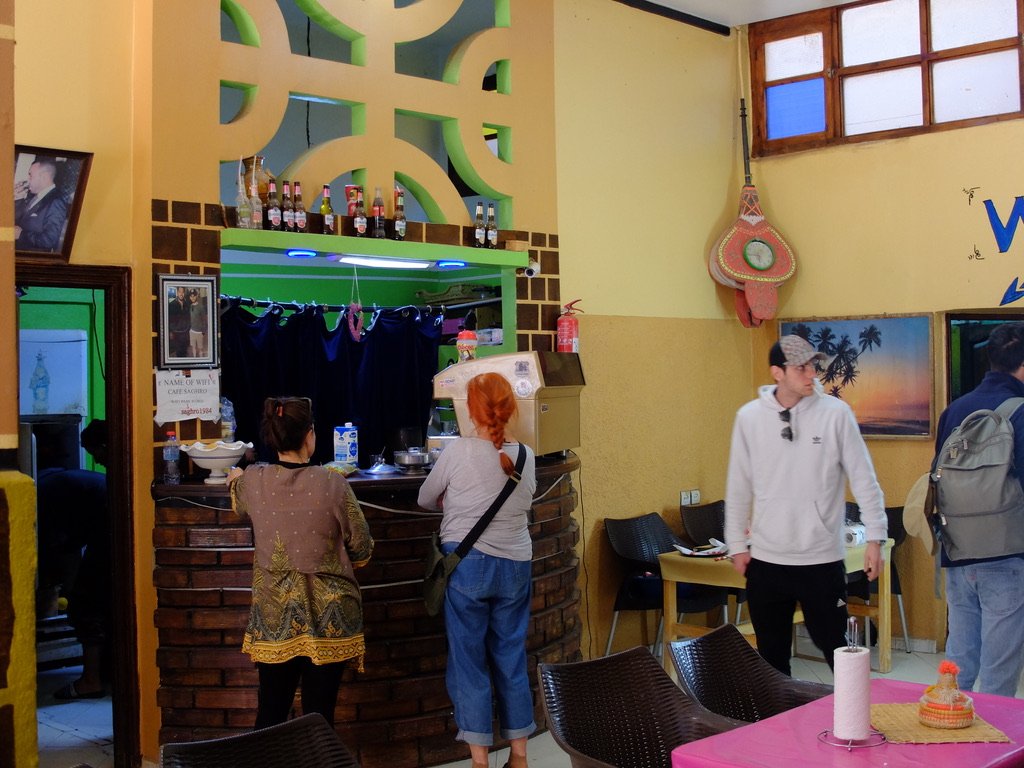
Saghro, Café & Retaurant, Alnif.
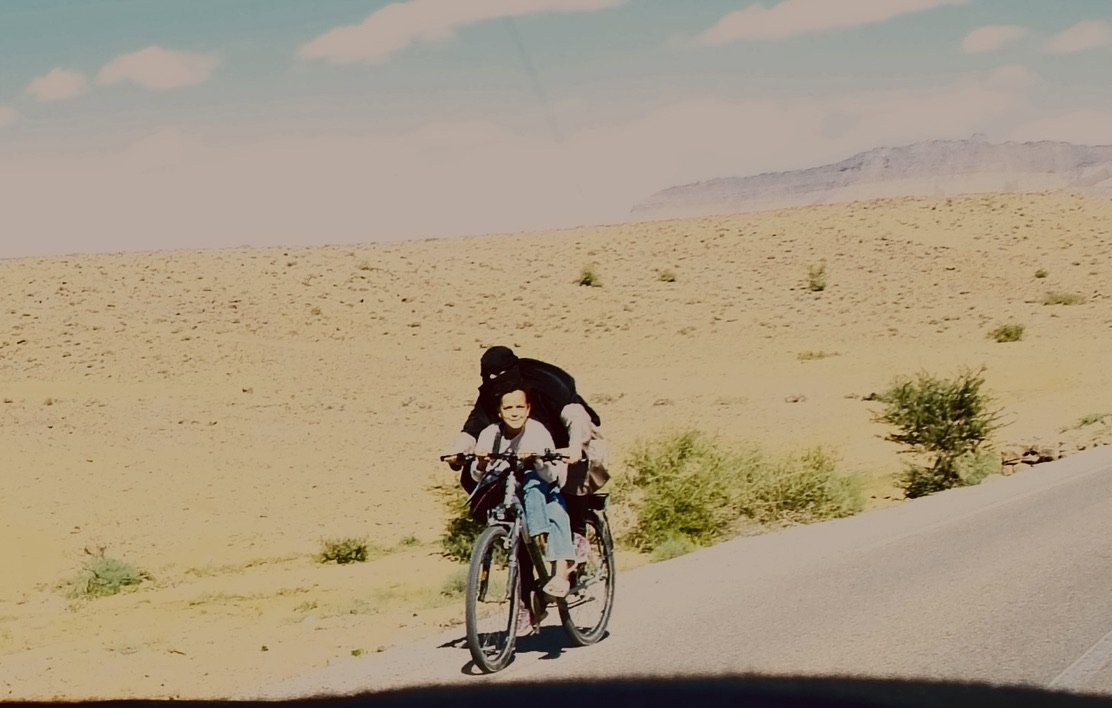
-
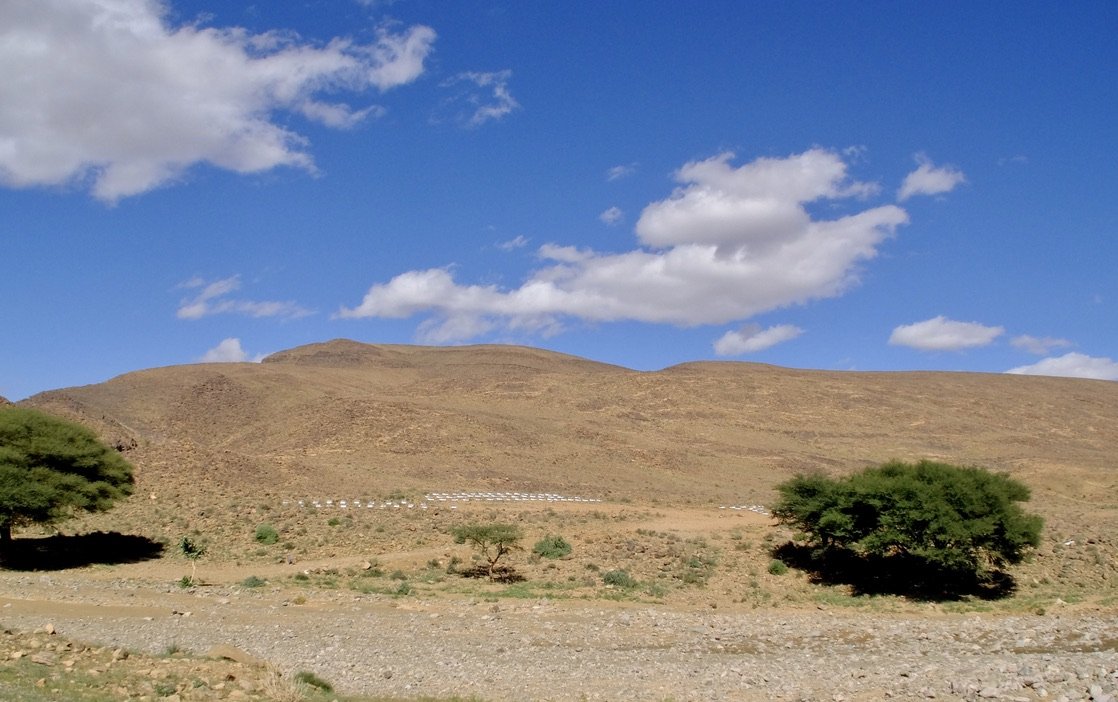
Nomadic bee hives. They are moved depending on water, weather, etc.
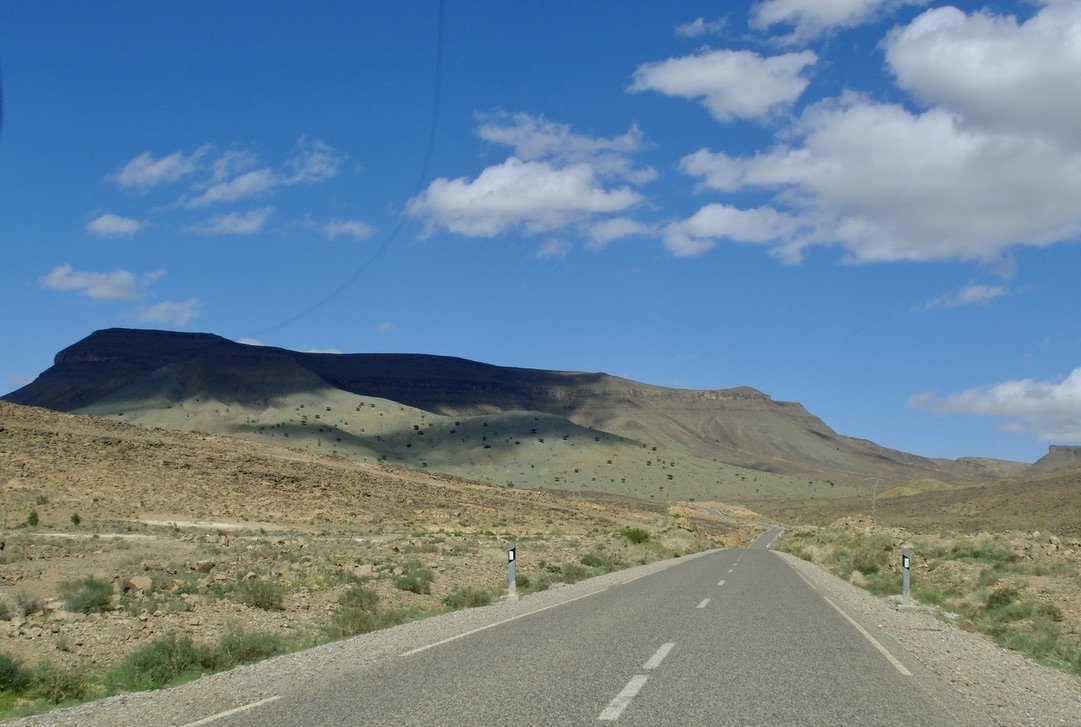
-
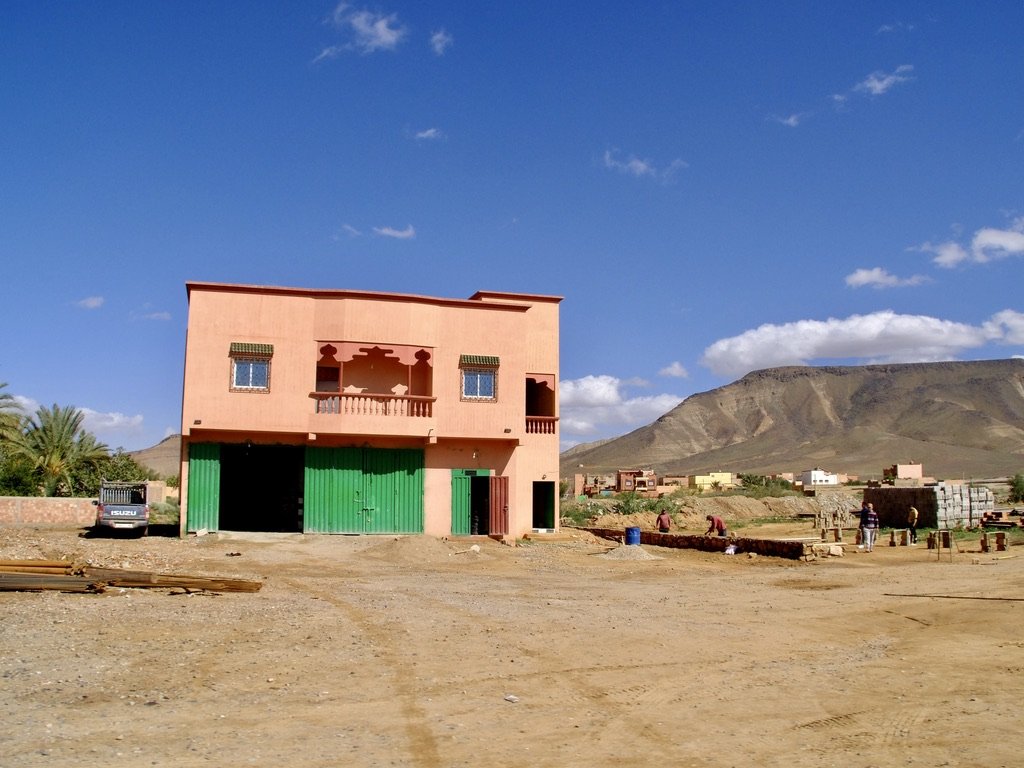
One of the few times that we saw workers doing construction out in the middle of seemingly nowhere.
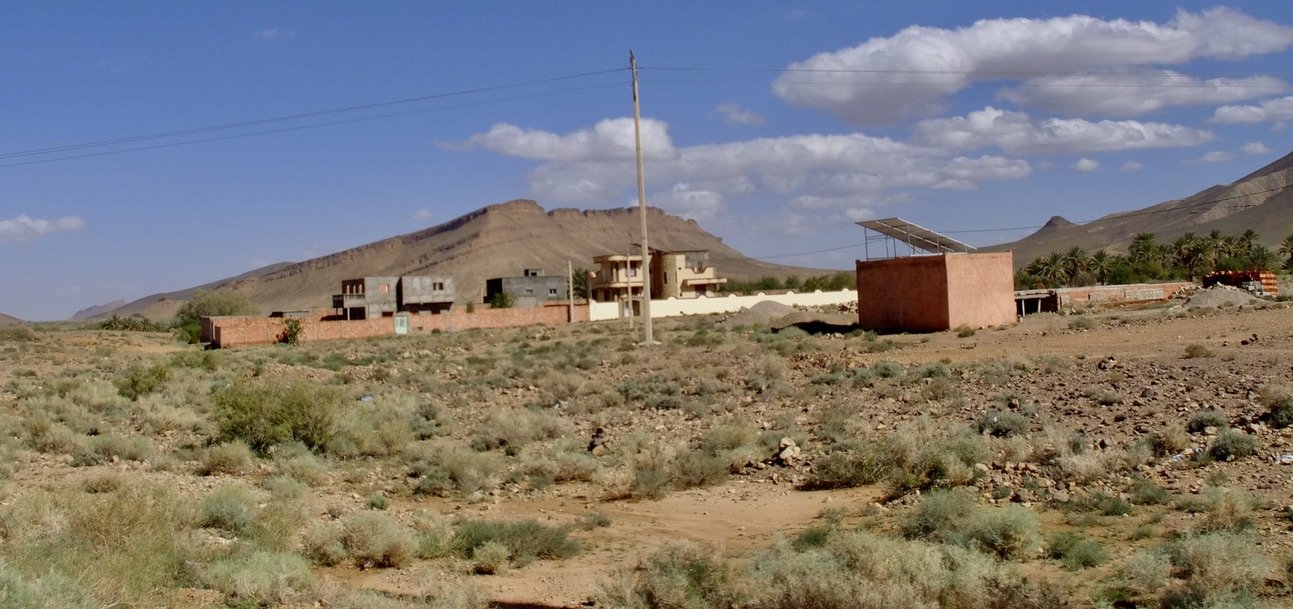
Most often, like here, buildings seemed to be abandoned mid-construction with materials piled around. That was because of…
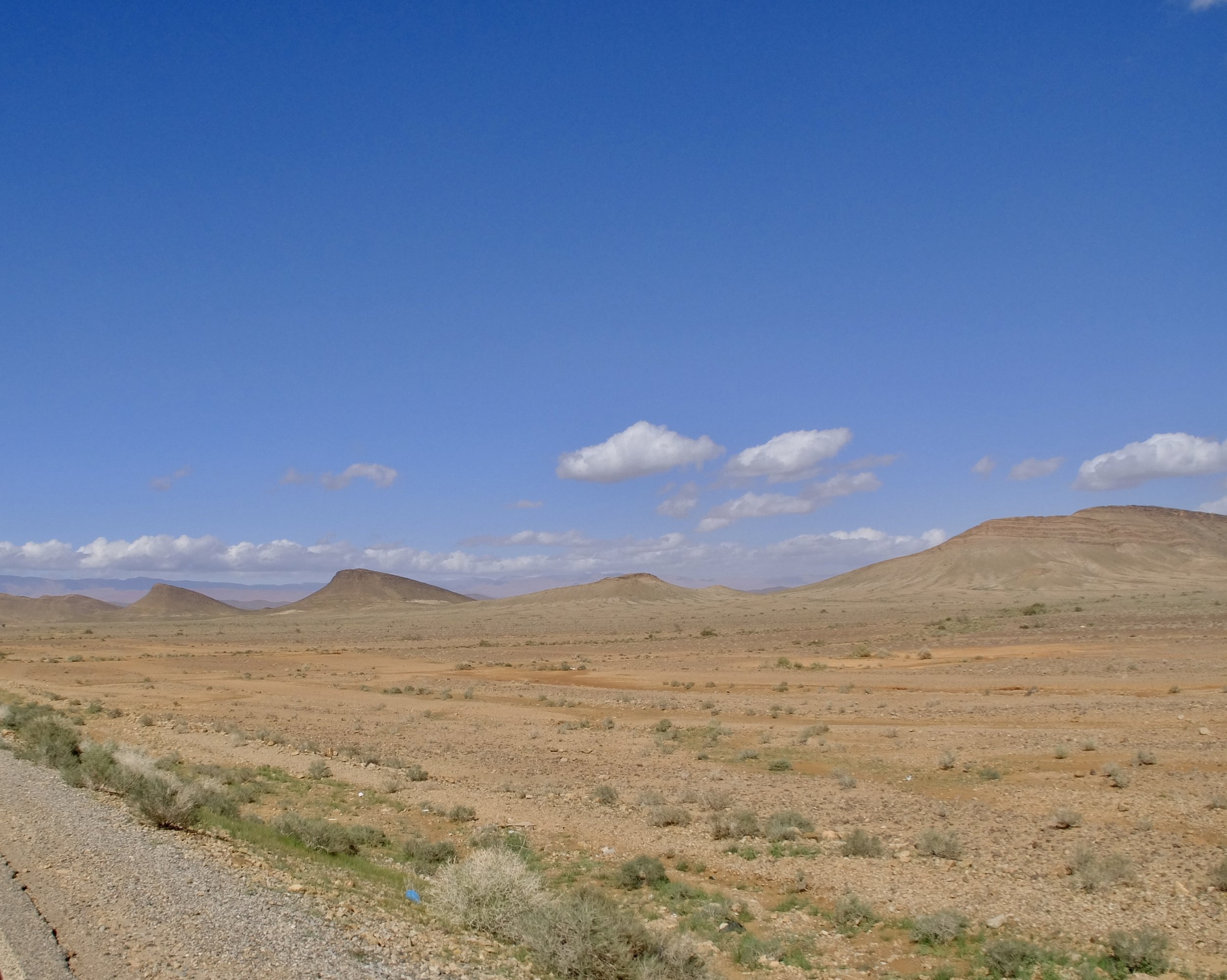
...
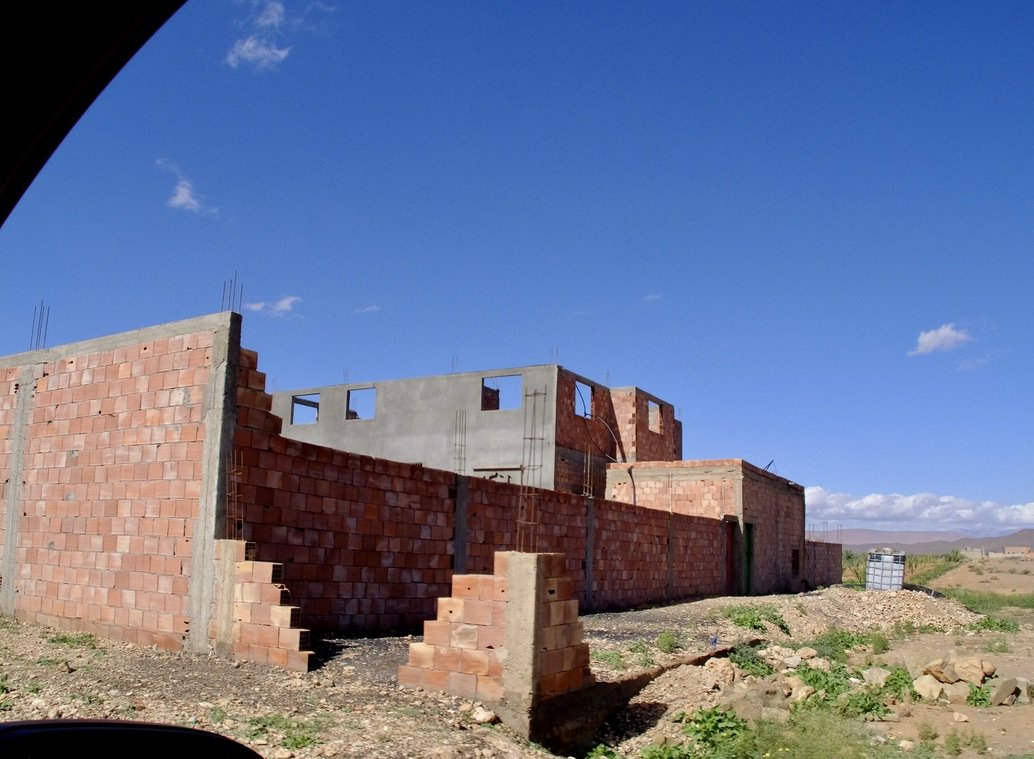
…Moroccans who were living out of the country. When they made enough money, they would buy land near their home village & start to build bit by bit. It could take years before the project was completed & they’d retire & move in. No taxes would be levied until utilities were hooked up & turned on.
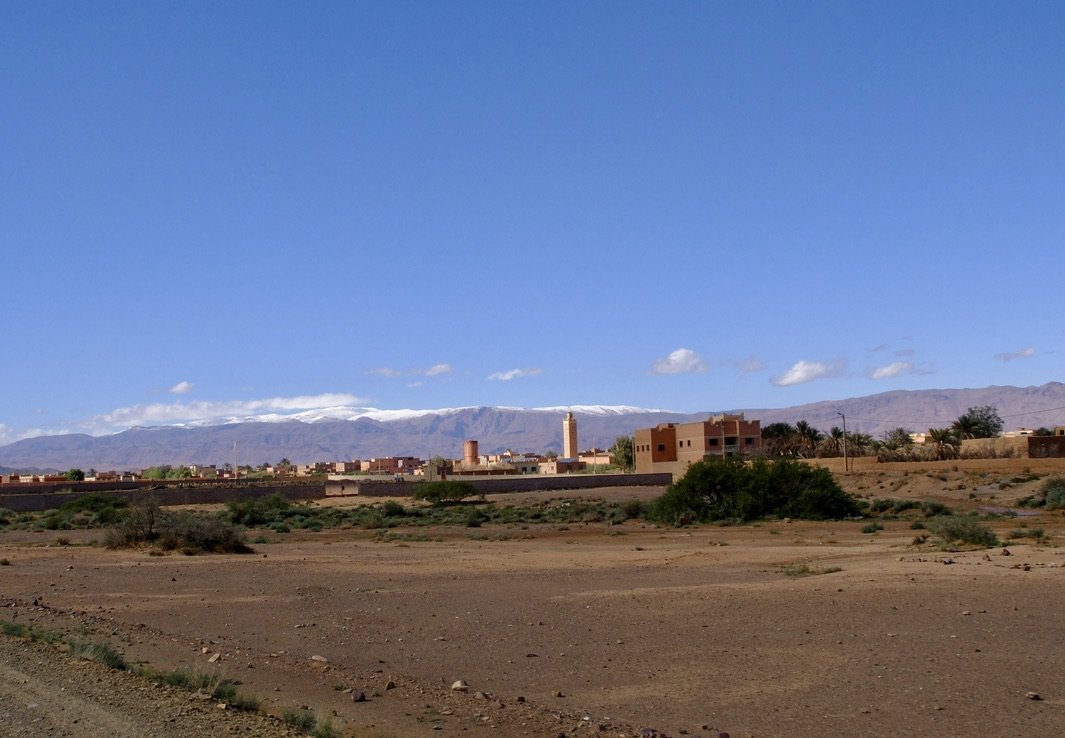
Approaching the region of Drâa-Tafilalet, south of the High Atlas and north of the Little Atlas in southeastern Morocco…the Tinghir Province.
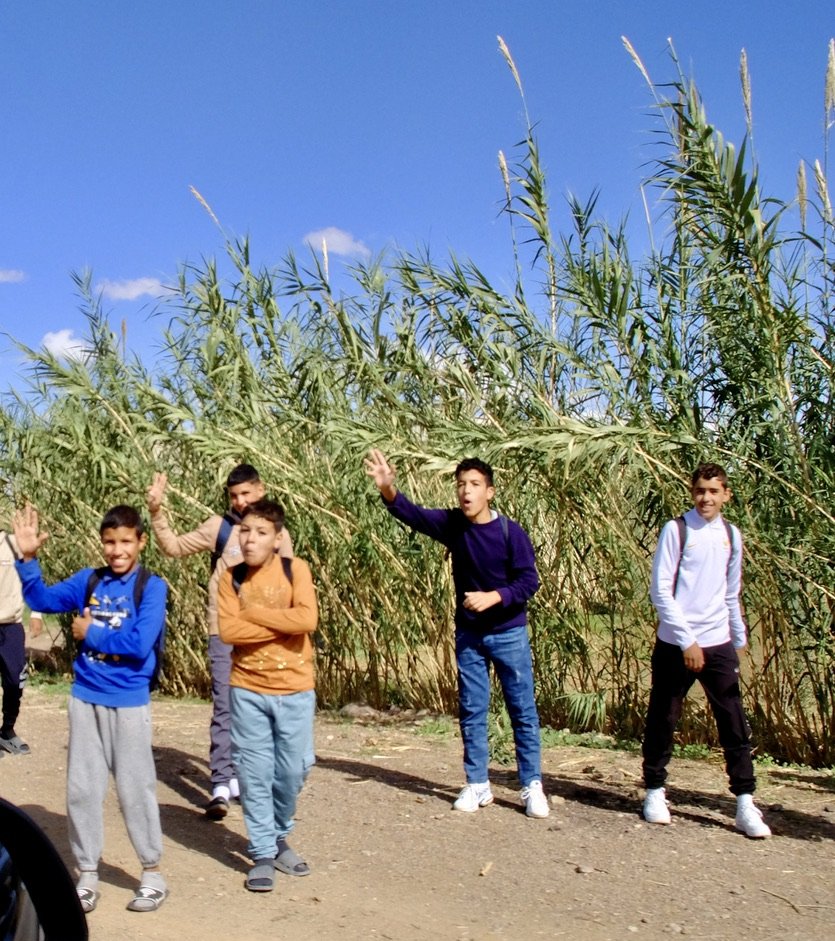
-
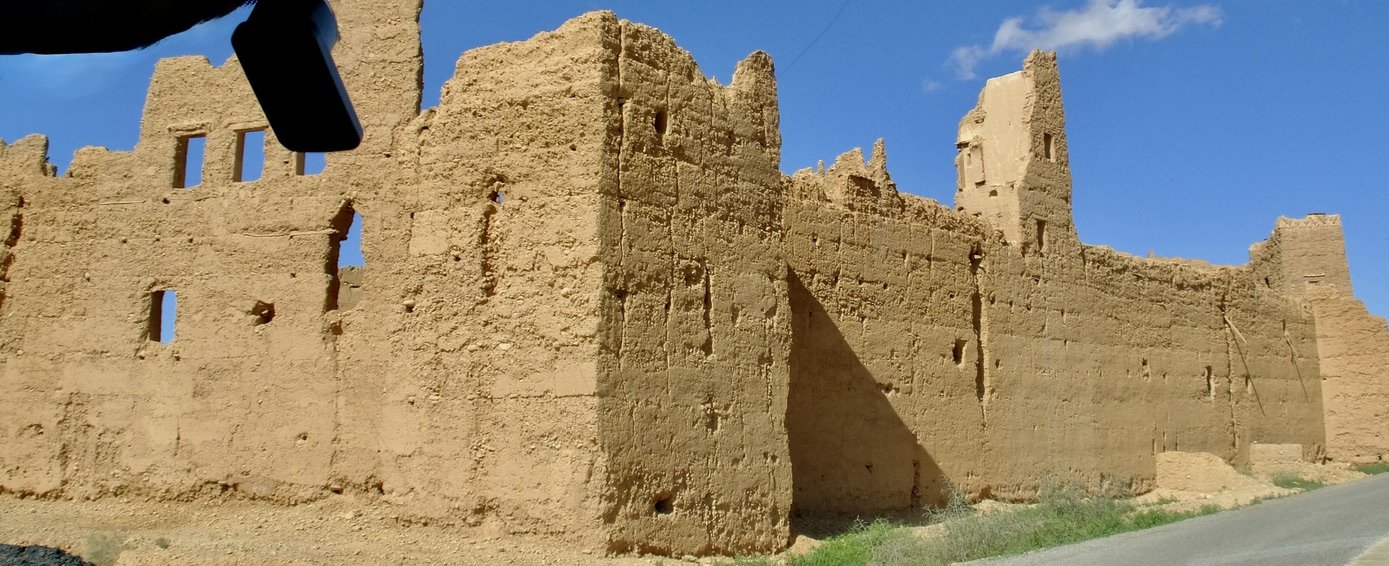
Maybe this abandoned structure was once a kasbah “where either the ruling sheik or king once lived, providing a high vantage point to watch for approaching and unwanted guests. Generally, they look like mud castles, coming in many shapes and sizes, with walls made of layered dirt and stone, with high walls and very few windows.”
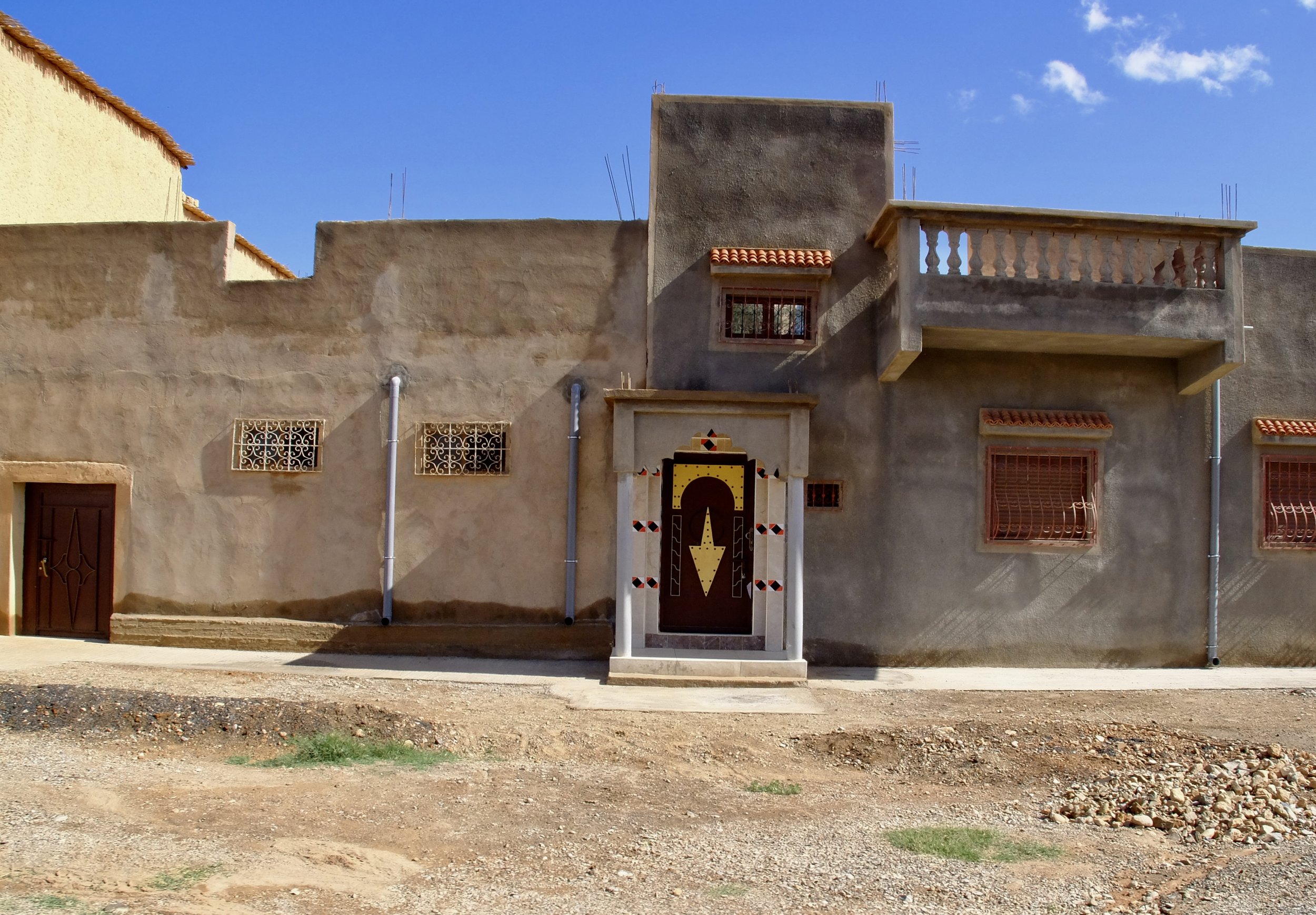
-

Approaching the capital of Tinghir Province, the city of TInghir or Tenehir.
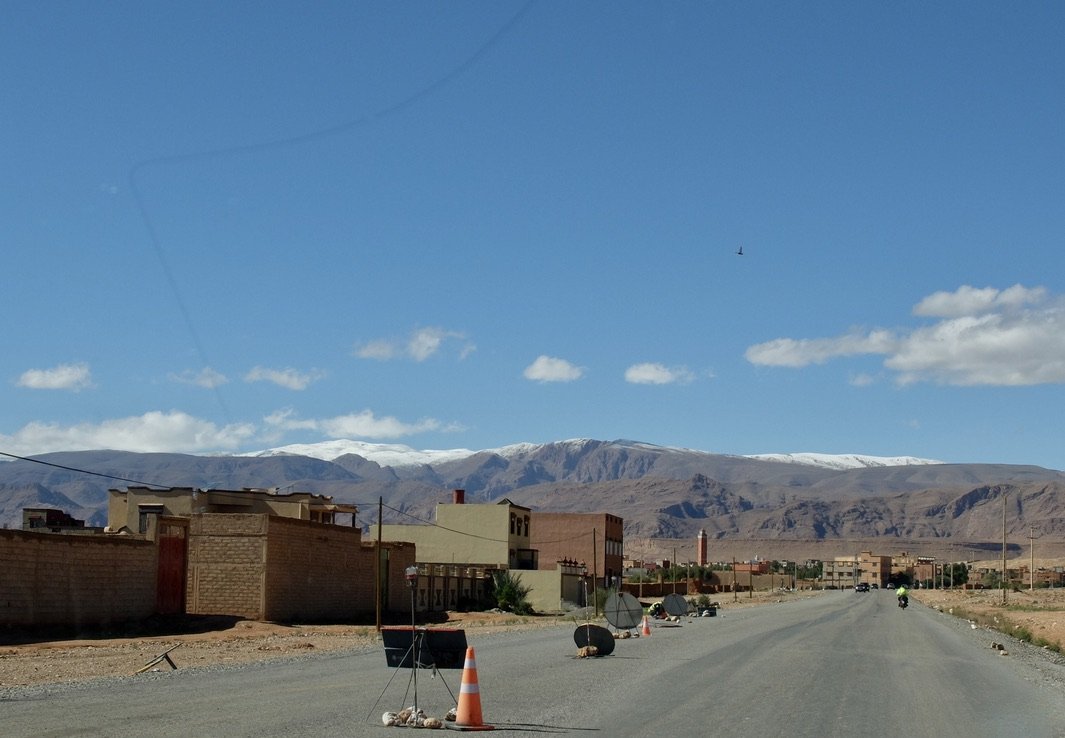
Note how "screaming yellow" apparel really works as we saw from far away...
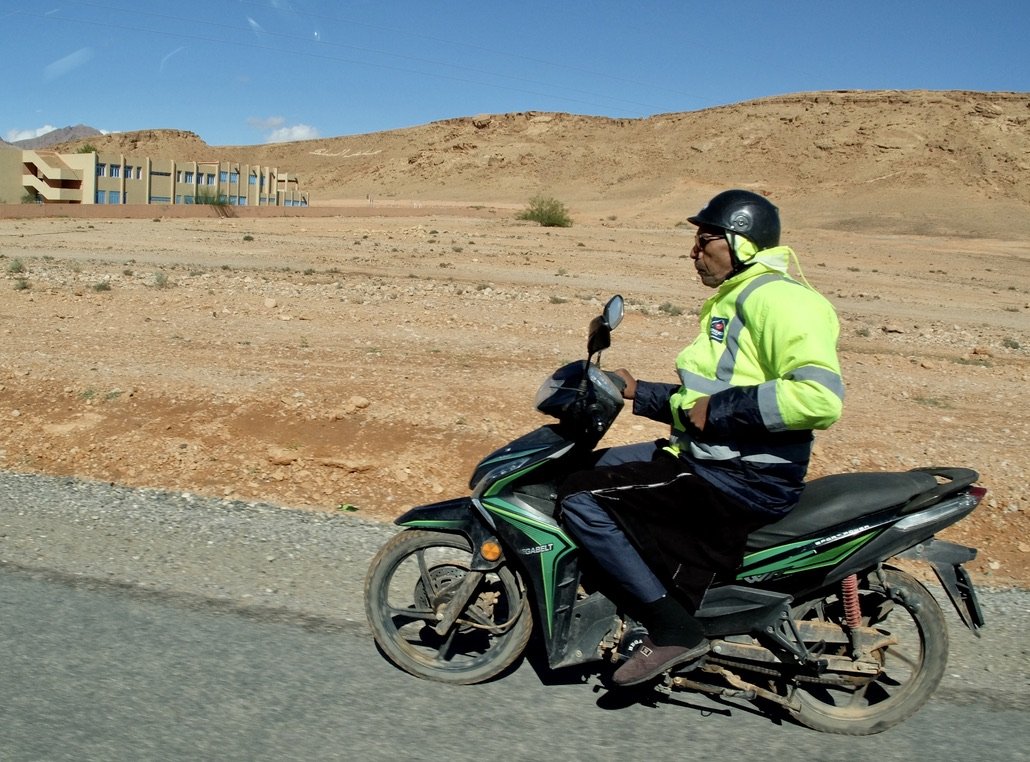
...this guy.
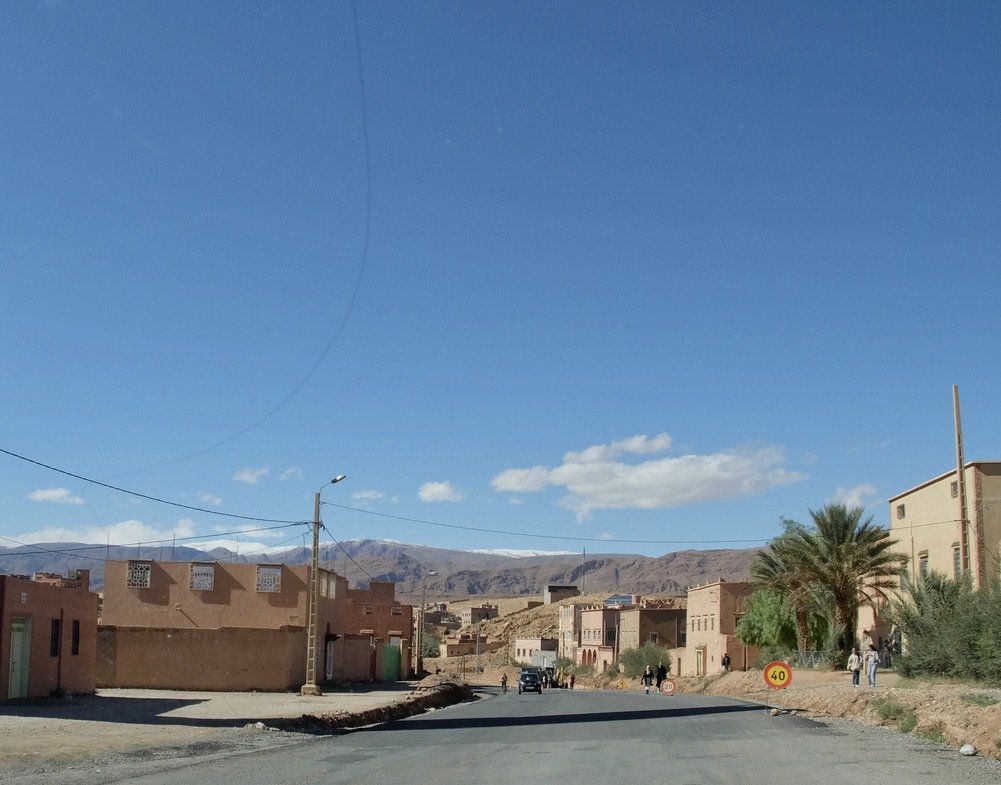
-

-
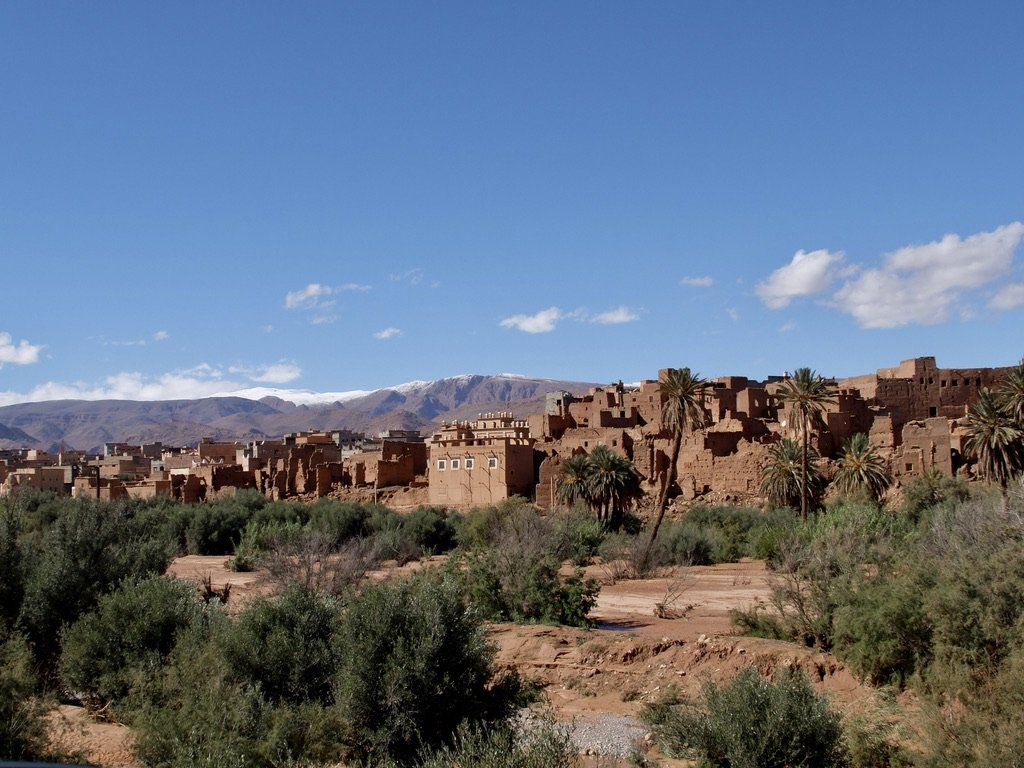
Tinghir.
“The predominant ethnic group is Amazighs, and the city is at the center of one of the most attractive oases in southern Morocco.”
Note some of the lower buildings in the Wadi Todgha are abandoned & new ones are built above.
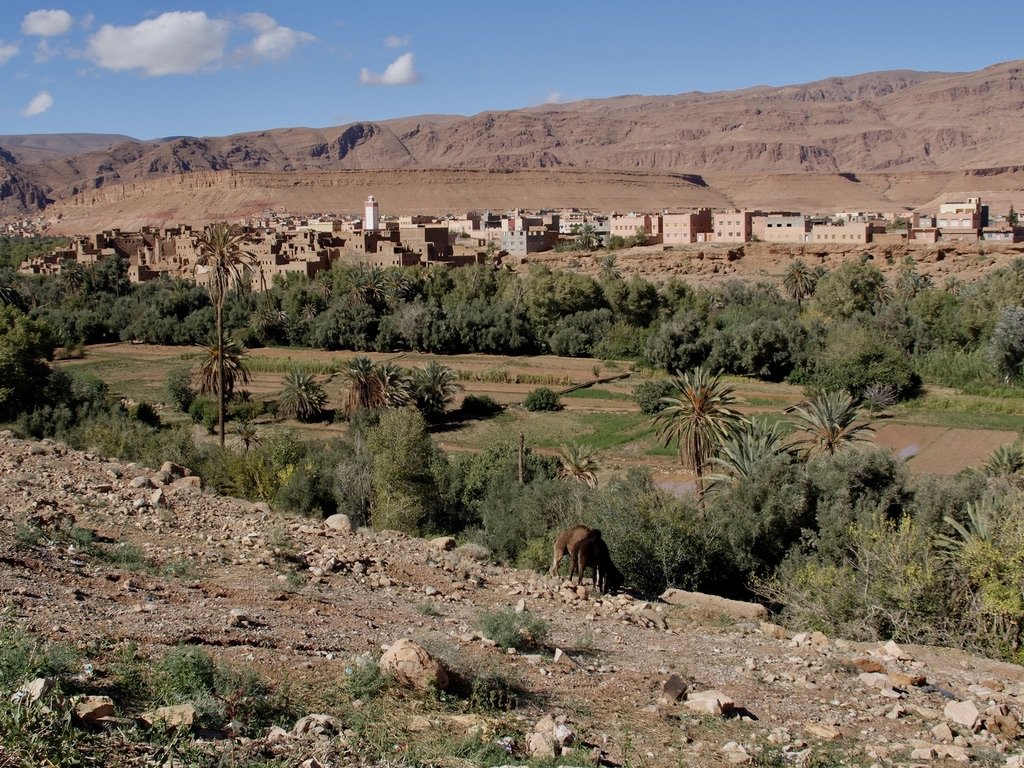
The dromedaries Jimi Hendrix & Bob Marley belong to...
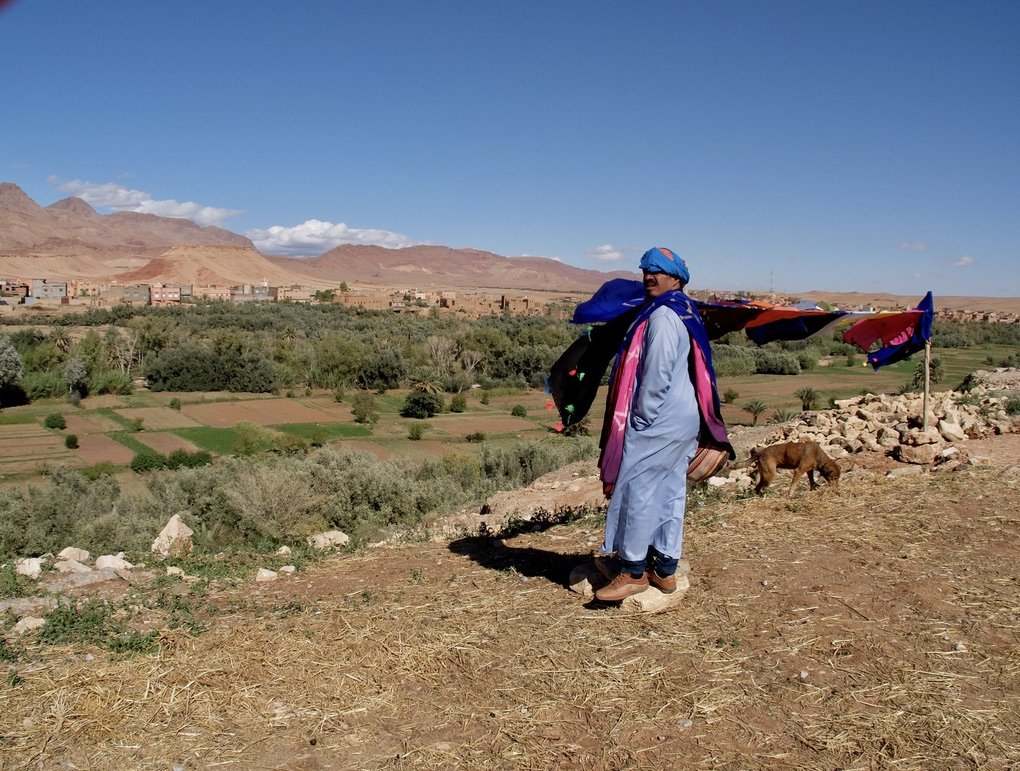
...this fellow from whom I purchased some scarves after some "hard" bargaining. Afterward Youssef told us that the scarf seller owned the biggest house in town.
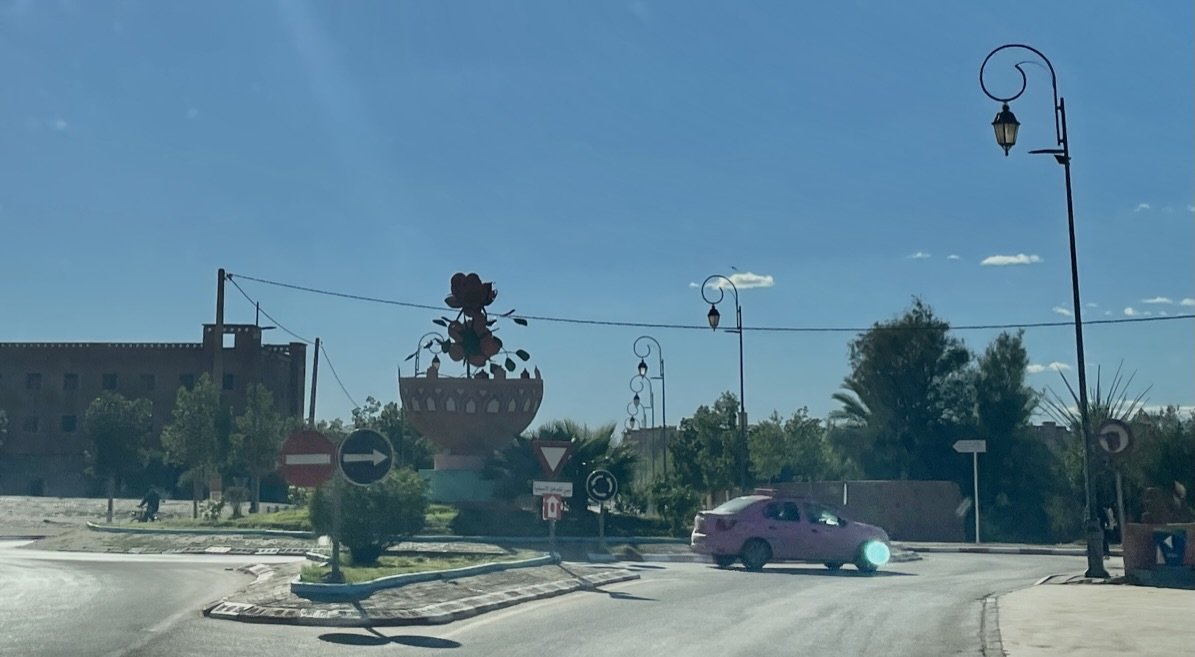
“Kelâat M'Gouna is a city in Tinghir Province, Drâa-Tafilalet.” “it is home to the country’s largest rose water and rose oil manufacturers” “… and is most known for the ‘Roses Festival’ which takes place in the city every year in May.”
Roses are everything here.
Note the pink taxi in the round-a bout...
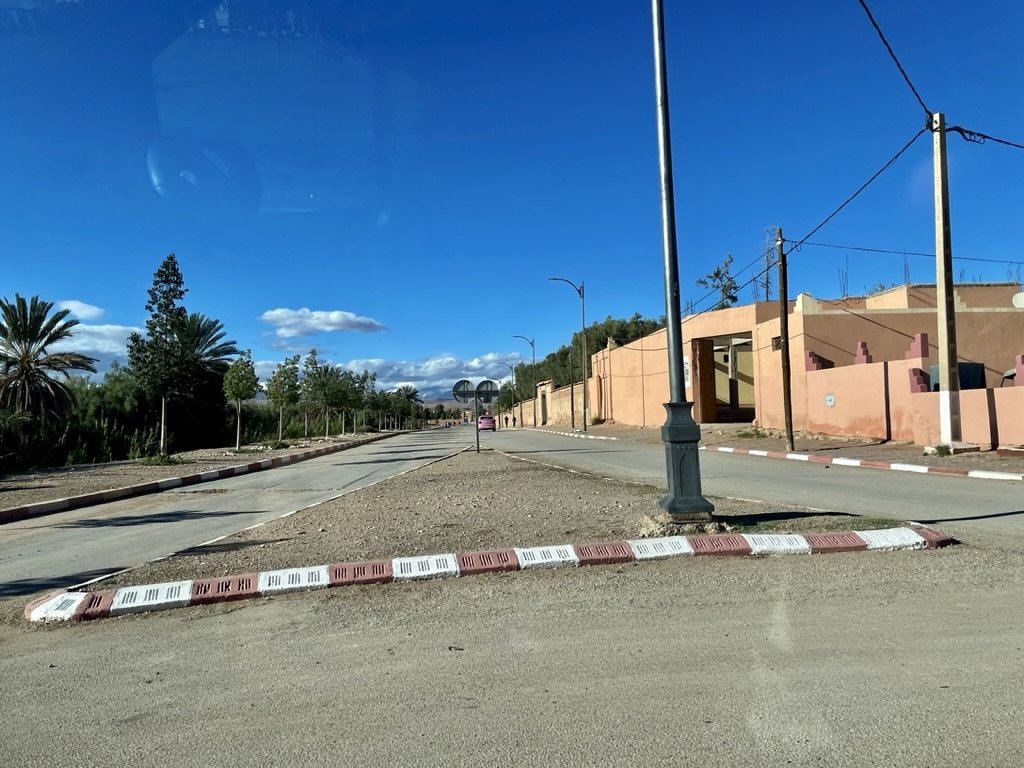
...and the pink taxi in the distance here.
“The Damask rose was brought to Kelaat M’Gouna by the French in 1938, with the first rose water distillery being opened soon after.”
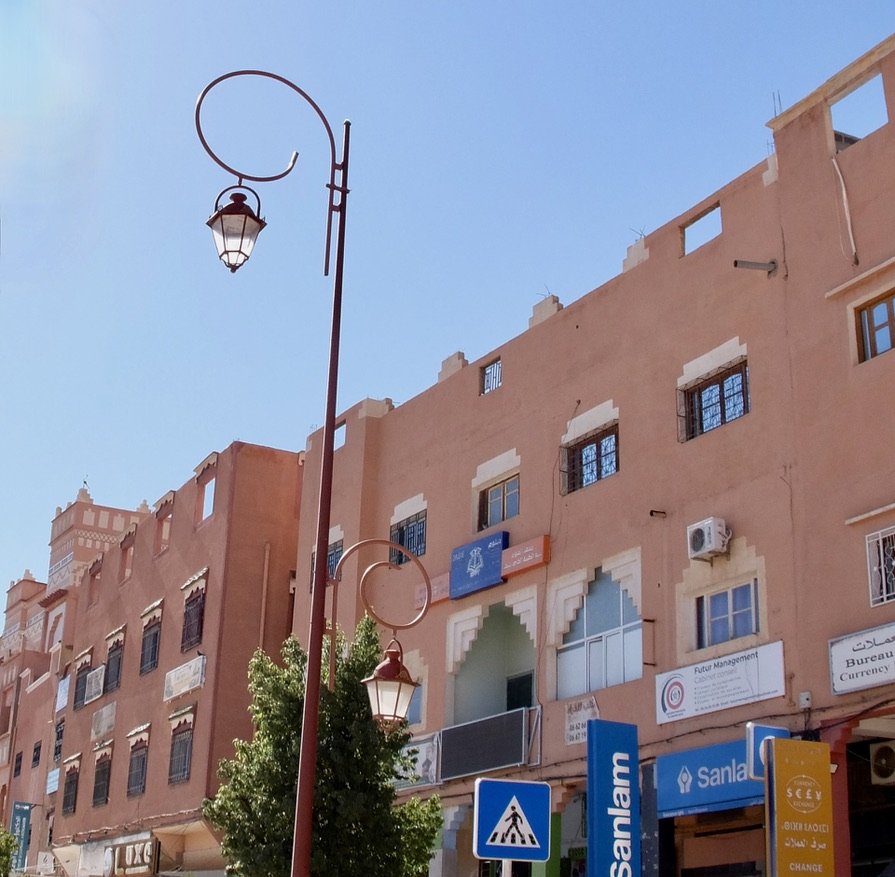
Kelâat M'Gouna.
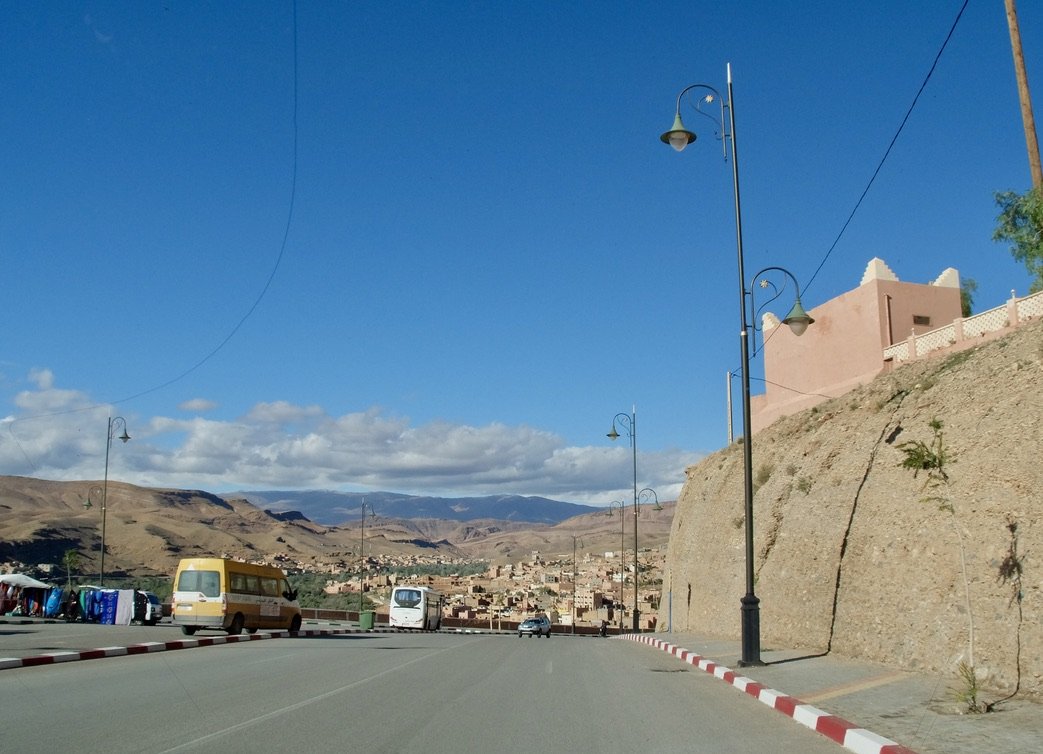
Kelâat M'Gouna.
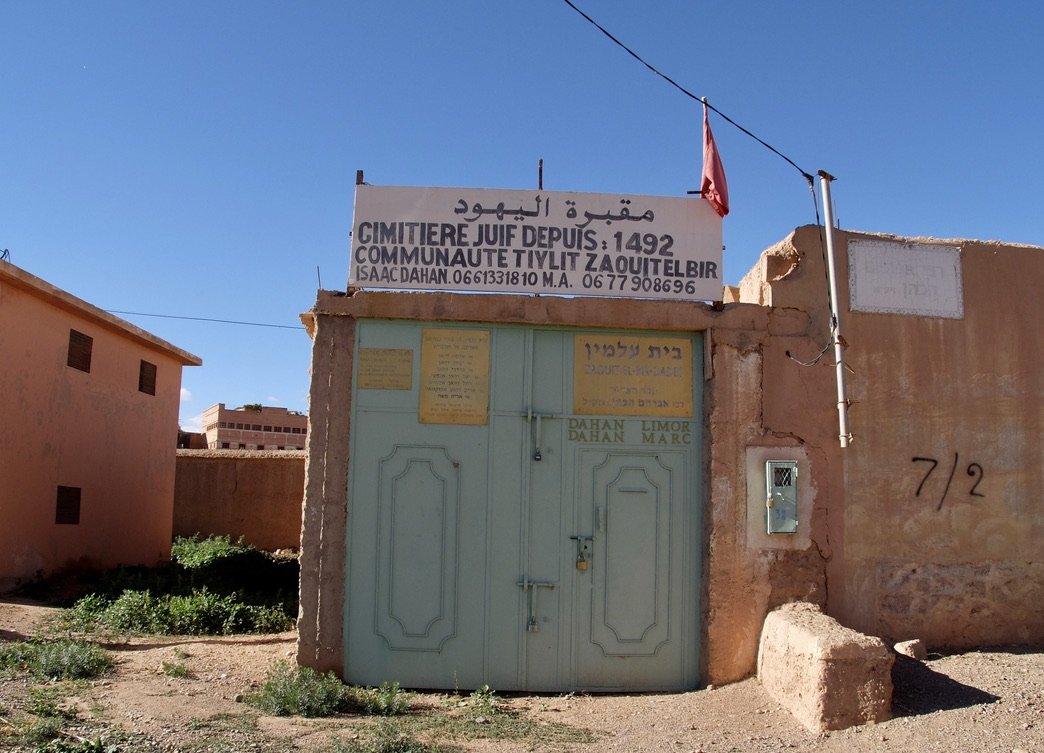
The Jewish cemetery in Kelâat M'Gouna.
When phoned, Isaac Dahan will come & open the cemetery.
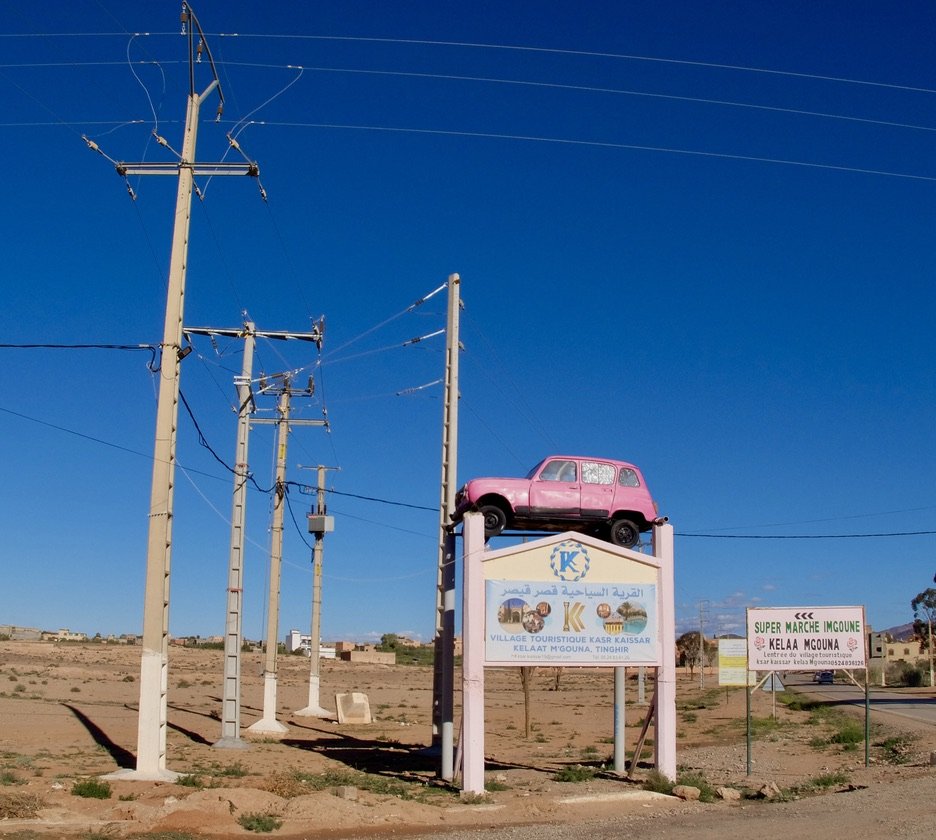
The same hotel owner whose hotel we saw before with a car in front. This time the car is pink, for Kelâat M'Gouna.
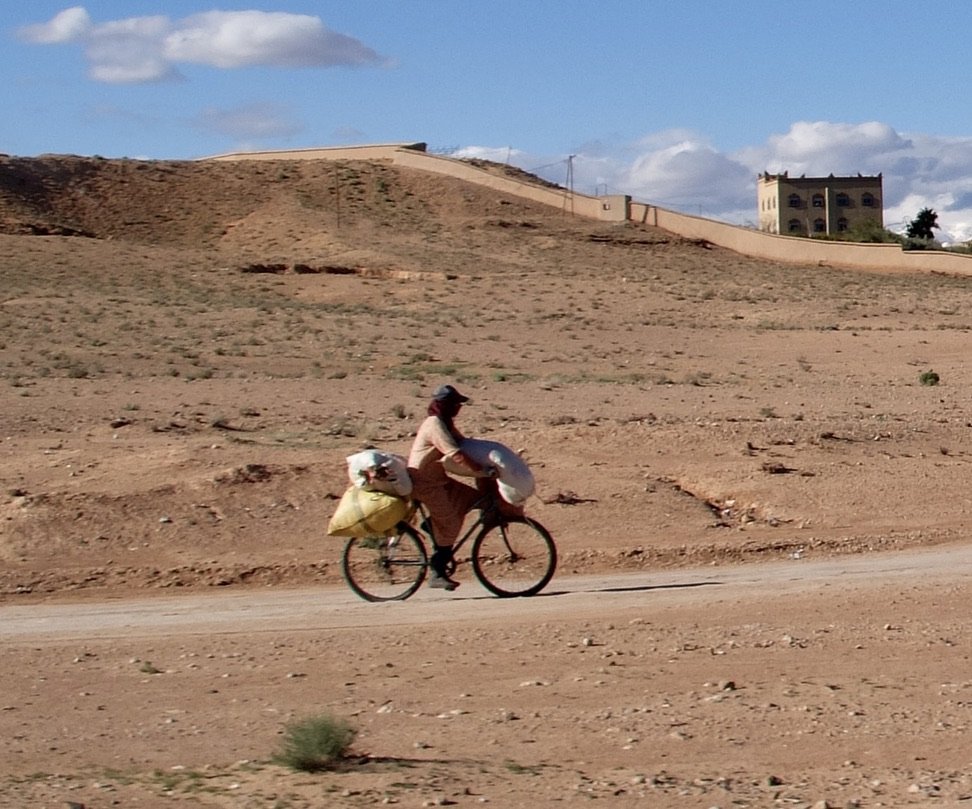
-
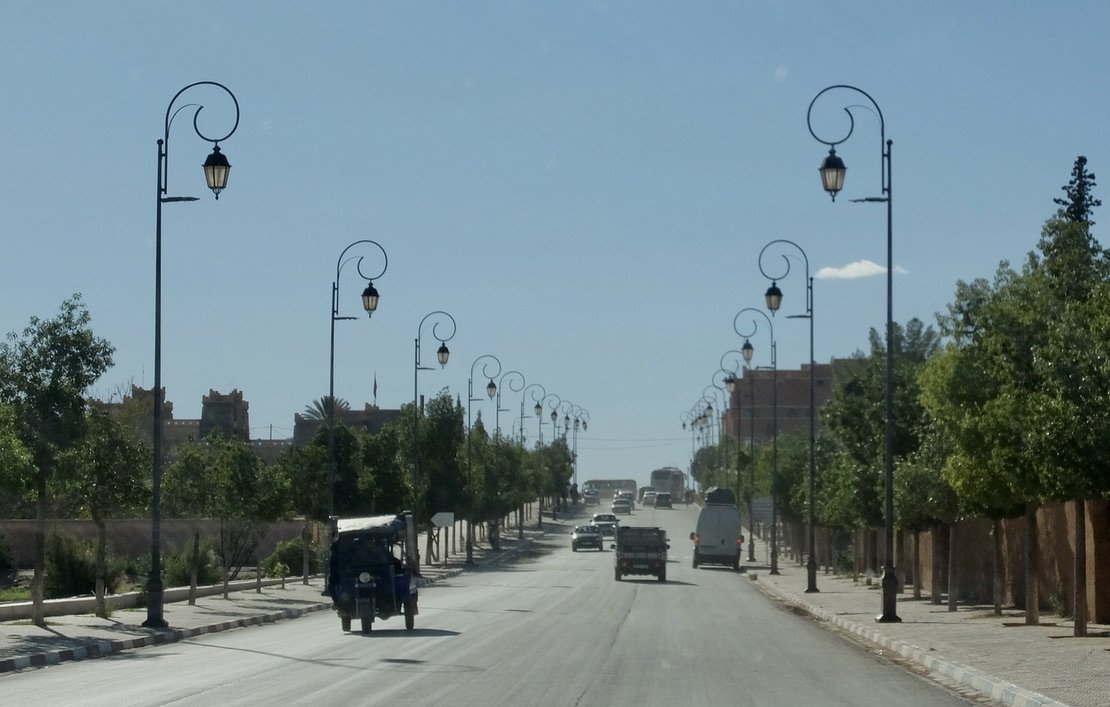
Kelâat M'Gouna.
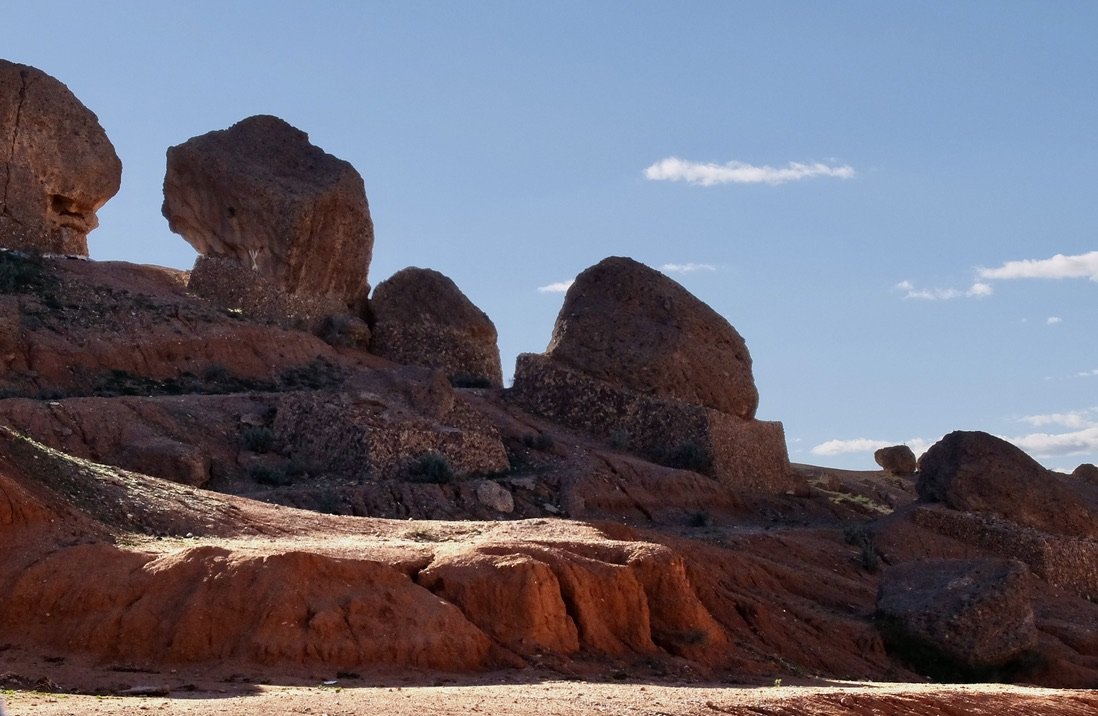
Kelâat M'Gouna.
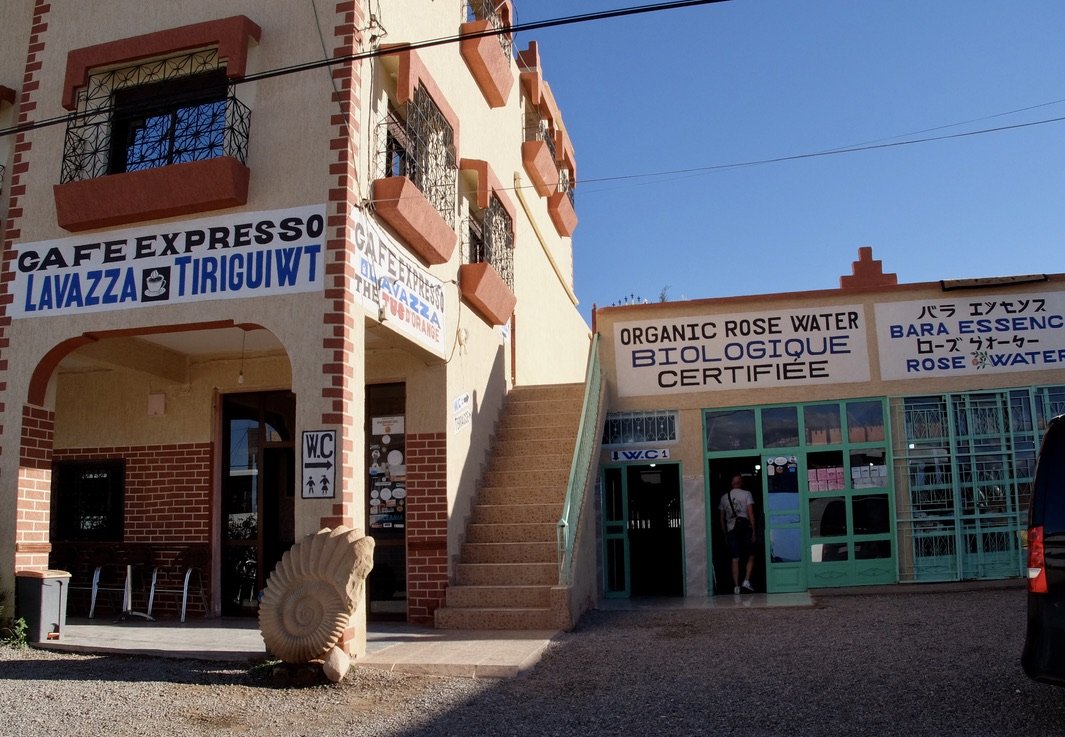
Kelâat M'Gouna.
We stopped in for the toilets & of course some rose water.
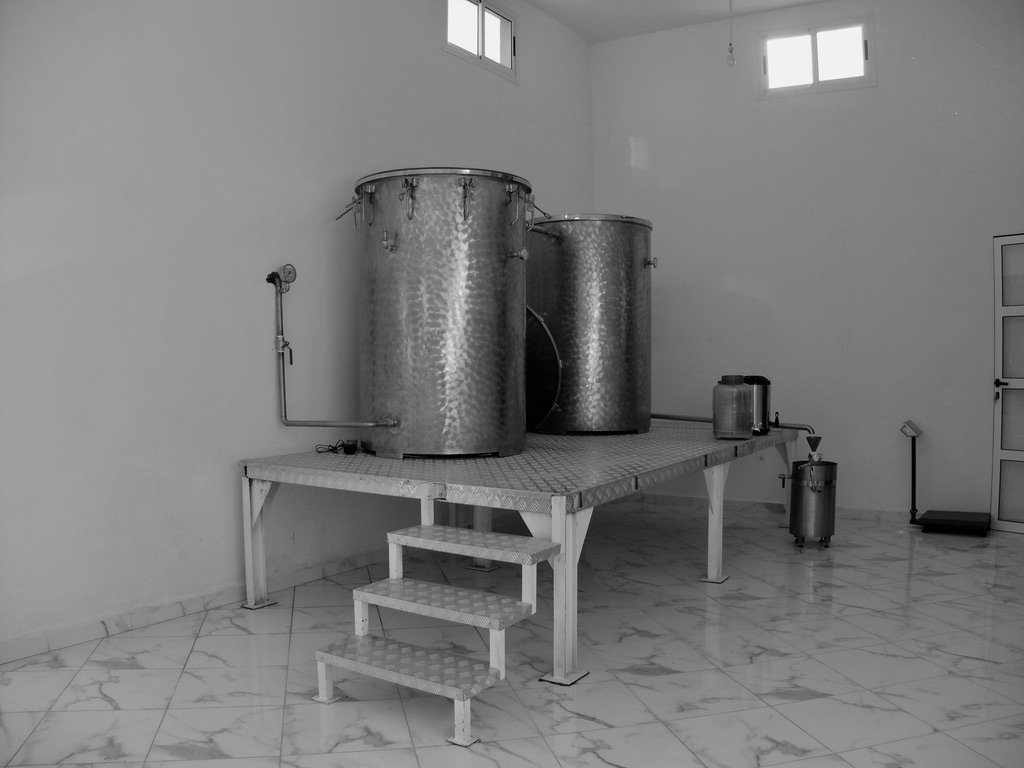
It takes up to three tons of rose petals...
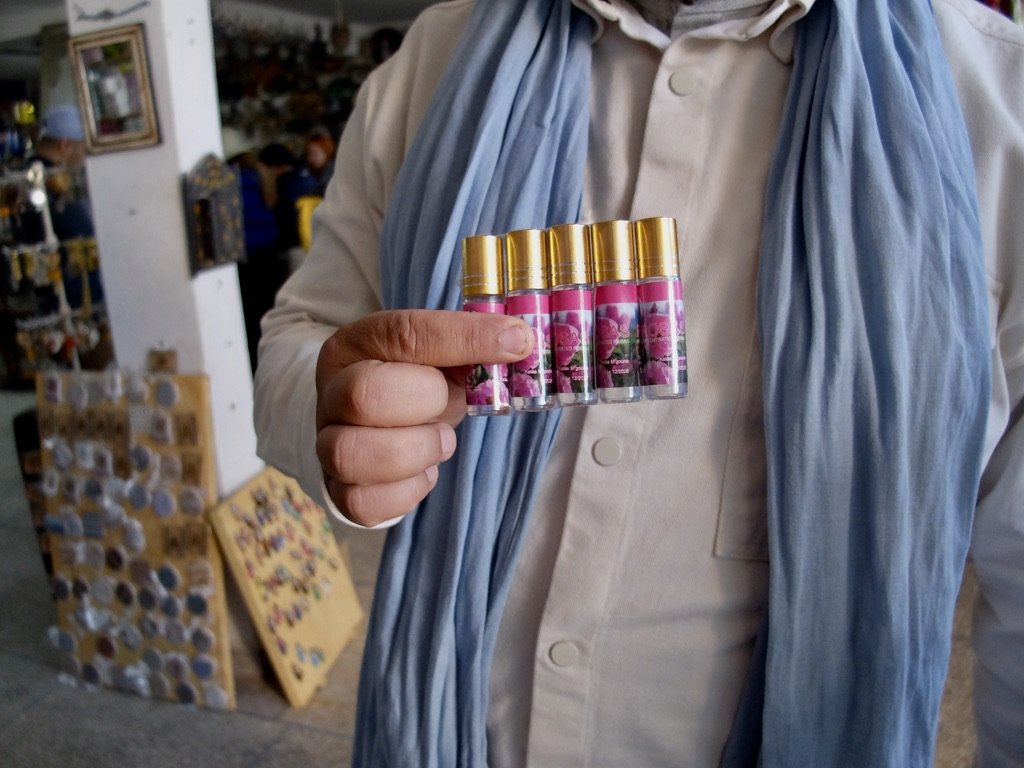
...to produce one liter of rose water.
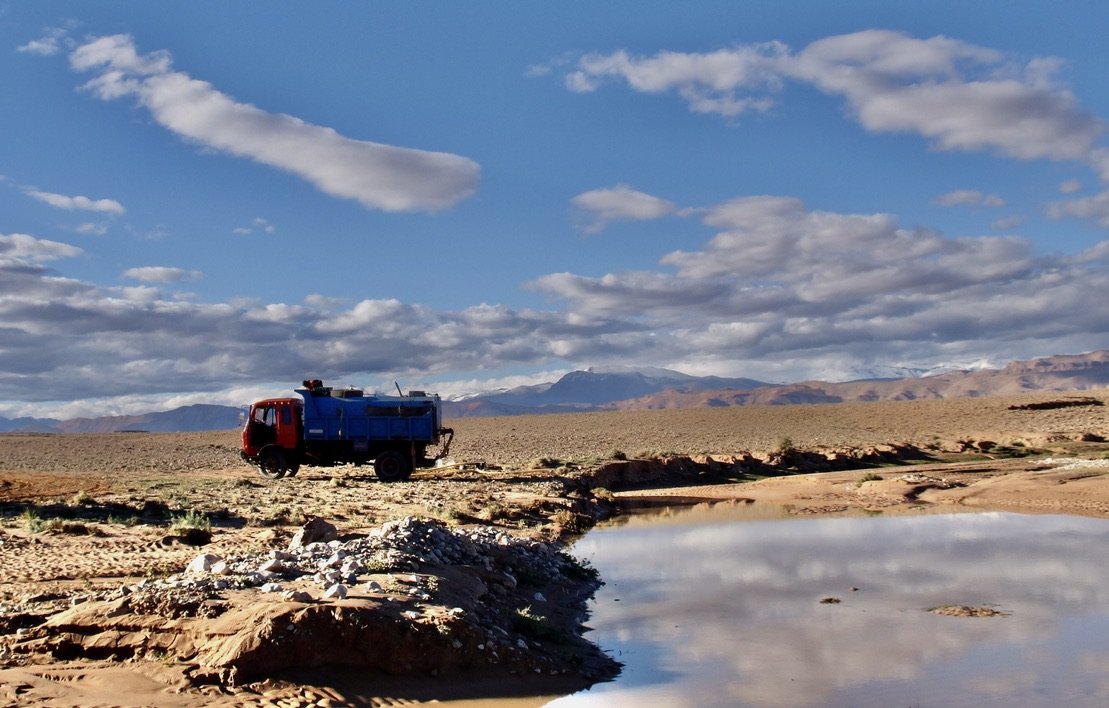
-

Finally we arrived at Ksar El Kabbaba in Skoura.
As usual, we were greeted with mint tea…
